The ultimate guide to seeing the Dolomites without a car (+ a perfect itinerary!)
Some links in this post are affiliate links, which means I earn a small commission if you book through them, at no extra cost to you. This support helps keep this site running, the suitcase wheels spinning, and lets me keep writing ultra-detailed travel guides that are free for you to use to plan your next adventure.
Want to visit Italy’s Dolomite mountains minus the stress of hectic carparks or extra costs of renting a vehicle? Here’s everything you need to know about how to visit the Dolomites without a car.
Let’s talk about tackling the mighty Dolomites without wheels.
While Italy’s northern neighbour Switzerland is brilliantly connected for car-free travel amongst the mountains, the equally spectacular (and cheaper!) Dolomites mountain range is a biiiit trickier to navigate without your own vehicle.
But who doesn’t love a challenge?!
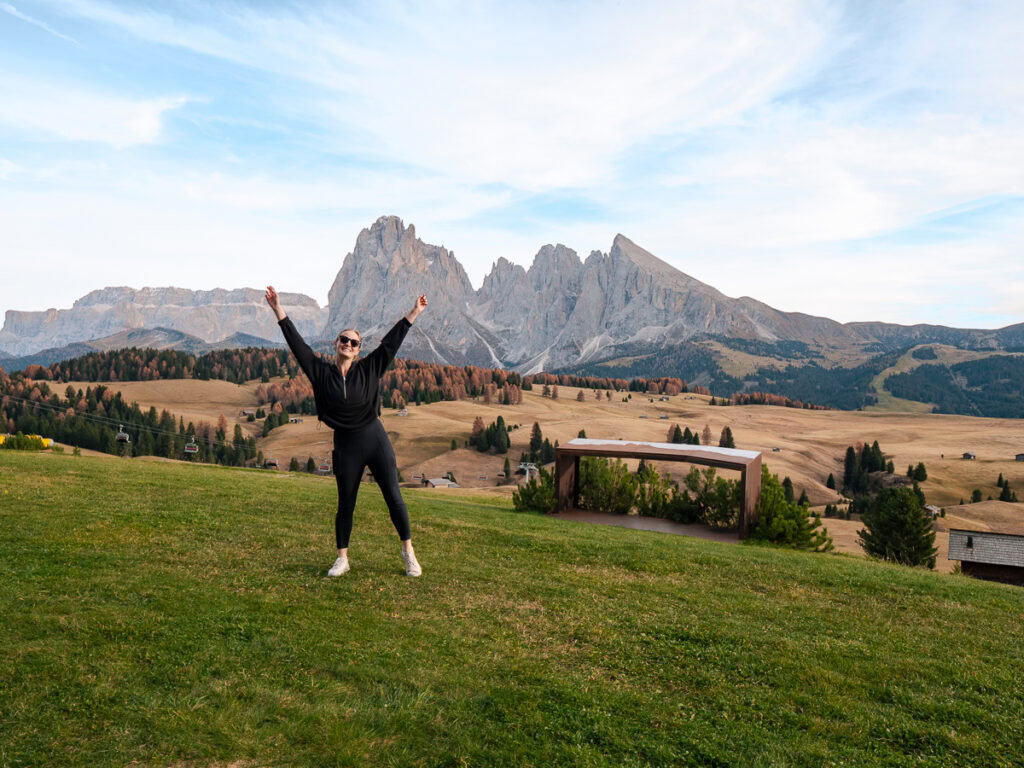
Seeing the Dolomites without a car is absolutely possible, and though it might take some additional planning to ensure a smooth trip, you’ll be able to see a bunch of Dolomites highlights throughout the region using buses, trains, cable cars, and your own two feet.
The secret is knowing which spots are accessible for no-car travellers, how to decode the seasonal public transport options, whether it’s best to choose one base or hop between towns, and how to make your money go further so you get the best bang for your buck.

I’ve been there, done that, made the mistakes so you don’t have to, and I’m sharing all you need to know about getting around the Dolomites without a car, where to stay when you’re there, the perfect itinerary and top tips for a stress-free adventure.
No car? Non c’è problema!
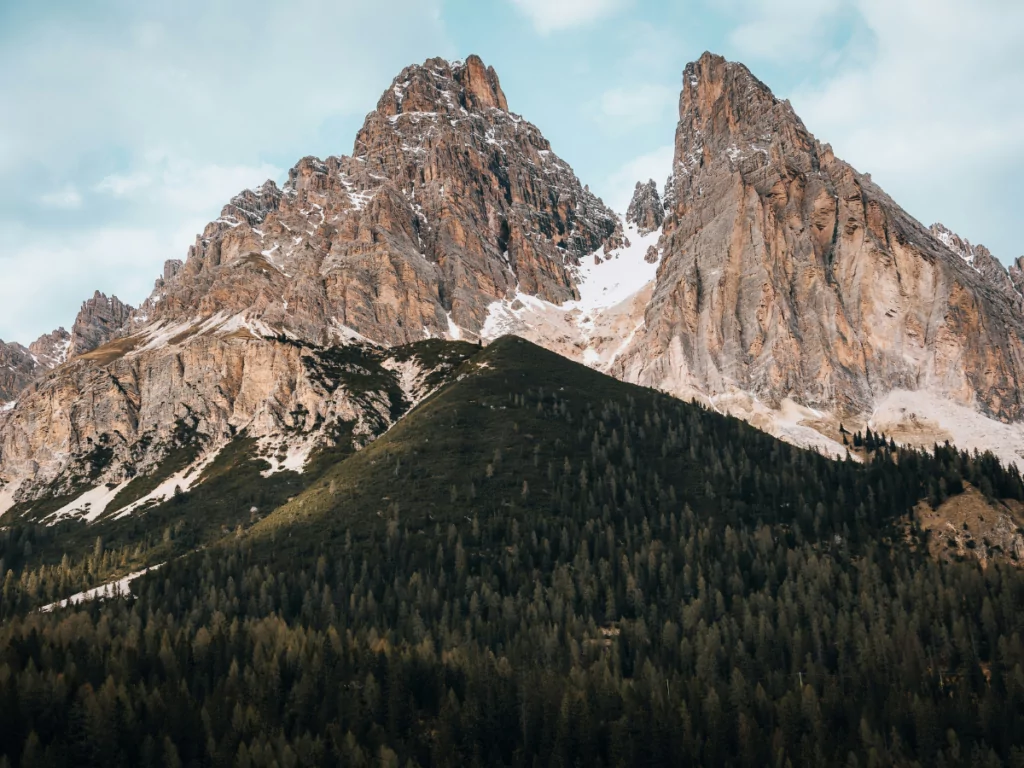
Please note this blog contains affiliate links that give me a small commission from any purchase, at no extra cost to you. I would never advertise anything I wouldn’t use myself, and this commission helps Finding Alexx reach more travellers. Thank you for supporting me!
What you need to know before visiting the Dolomites without a car
Explaining the Dolomites geography & names
The Dolomites area can get super confusing, because not only does it have multiple languages, but the mountains cover three regions, 5-7 provinces (depending on who you ask), four nature parks that make up one UNESCO World Heritage Site, and too many peaks, valleys and villages to count. Phew!
You might see a bunch of different names pop up in your research so let me give you a quick Dolomites 101 lesson on the regions, the provinces, the main tourist spots you’ll hear about, as well as the different names for them if they have them… Some of them don’t though, don’t ask me why, I don’t make the rules 🤷🏼♀️
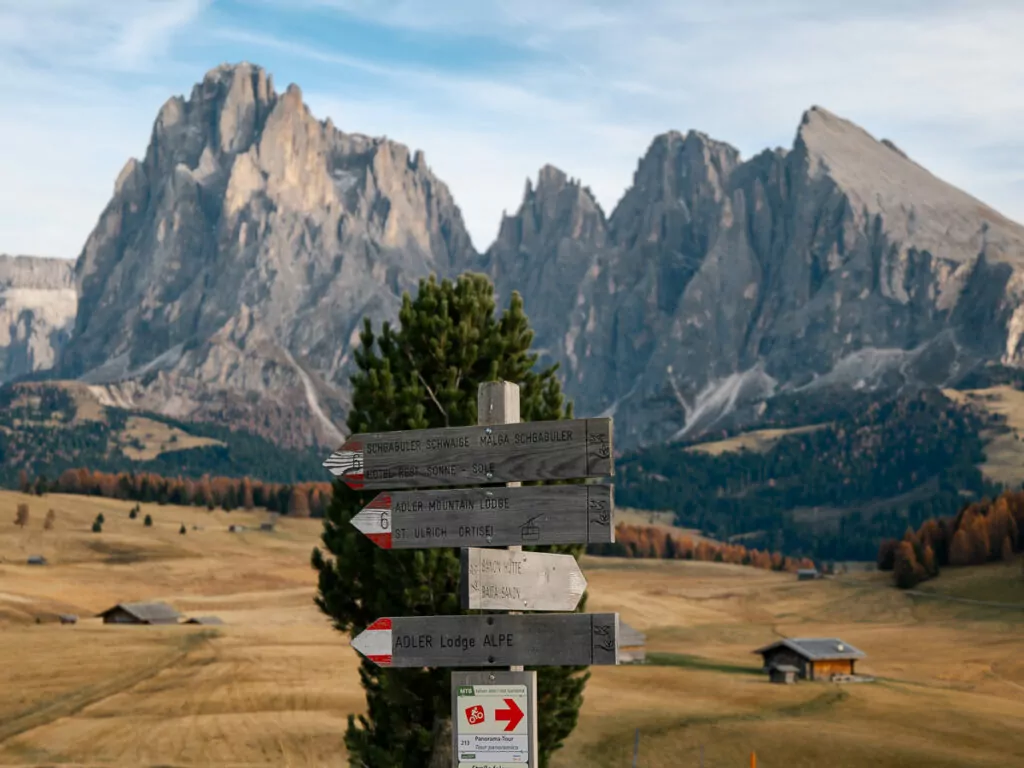
The three regions that the Dolomites span are:
- Trentino-Alto Adige/Südtirol (that’s the full official name of the region, referring to the combo of the Trentino province and the South Tyrol province which is called Alto Adige in Italian and Südtirol in German)
- Veneto
- Friuli-Venezia Giulia
The main provinces are:
- South Tyrol (German: Südtirol, Italian: Alto Adige, in the region of ‘Trentino-Alto Adige/Südtirol’)
- Trentino (in the Trentino-Alto Adige/Südtirol region)
- Belluno (Veneto region)
- Udine (Friuli-Venezia Giulia region)
- Pordenone (Friuli-Venezia Giulia region)
- The Dolomites stretch into the provinces of Vicenza and Verona (both in Veneto) too but only a little compared to the others
If it’s your first time in the Dolomites and you want to follow the well-trodden tourist trail, you’ll probably be sticking to the provinces of South Tyrol and Belluno, so let me explain a bit more about them.

South Tyrol boasts loads of the famous things to see and do in the Dolomites, like Lago di Braies (German: Pragser Wildsee), Alpe di Siusi (German: Seiser Alm, Ladin: Mont Seuc), Seceda, Lago di Carezza (German: Karersee) and more.
The capital city is Bolzano (German: Bozen), other towns are Bressanone (German: Brixen), Brunico (German: Bruneck) and Merano (German: Meran).
South Tyrol is also home to the Val Gardena (German: Gröden, Ladin: Gherdëina), the most popular valley of the Dolomites, which is where you’ll find the major tourist towns of Ortisei (German: St Ulrich, Ladin: Urtijëi), Santa Cristina and Selva di Val Gardena (German: Wolkenstein, Ladin: Sëlva), as well as the aforementioned Alpe di Siusi and the famous mountain/hiking area of Seceda.
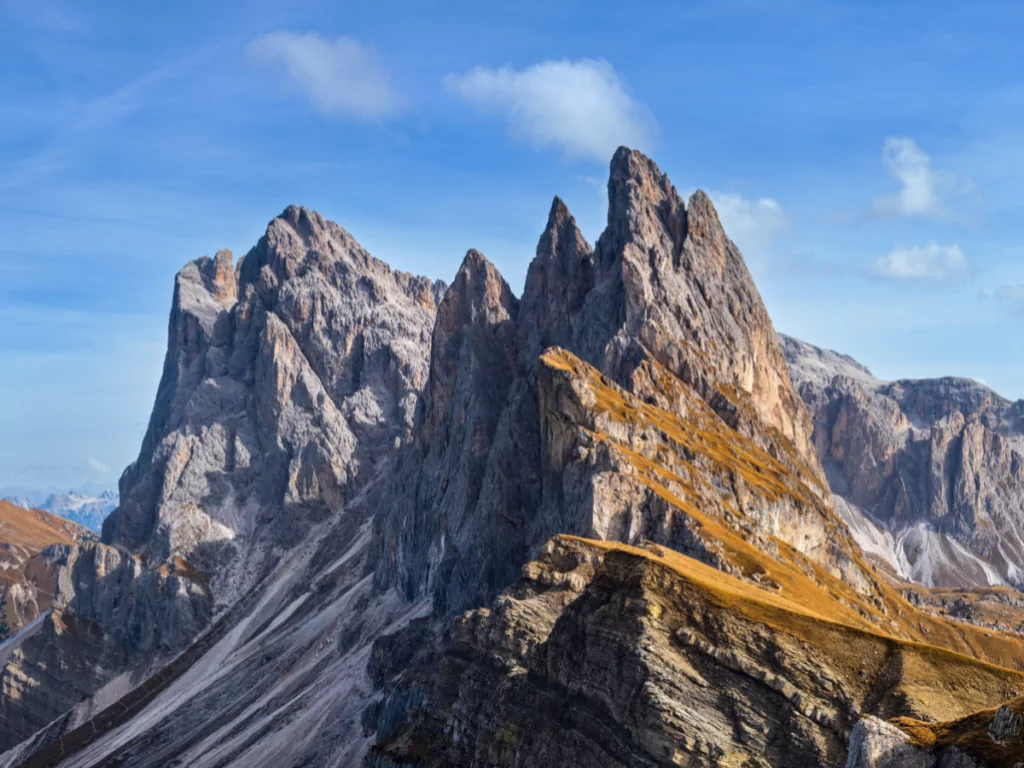
Belluno is the other region that holds a fair share of the well-known tourist spots, like Lago di Sorapis (German: Sorapissee) and Tre Cime di Lavaredo (German: Drei Zinnen/3 Zinnen).
The Belluno province’s capital is the city of Belluno, but the main hub for tourists is a small town called Cortina d’Ampezzo.
How to get to the Dolomites without a car
Though there’s no major international airport here, the Dolomites can be easily reached from airports in Northern Italy, Austria and Germany, as well as by train from anywhere that connects with Milan, Venice or Innsbruck (which is pretty much all of western and central Europe).
If you’re flying to get to the Dolomites, you can find cheap flights to:
- Venice Airport (VCE): 2h10m bus to Cortina d’Ampezzo or 3h train to Bolzano
- Verona Airport (VRN): 15m bus to Verona train station and then 1h30m train to Bolzano
- Milan’s three airports (Bergamo BGY, Malpensa MXP and Linate LIN): 3h from Milano Centrale to Bolzano
- Innsbruck (INN): 15m bus to Innsbruck train station and then 2h train to Bolzano
- Munich (MUC): 27m train to Munich East (München Ost) and then 3h45m train to Bolzano
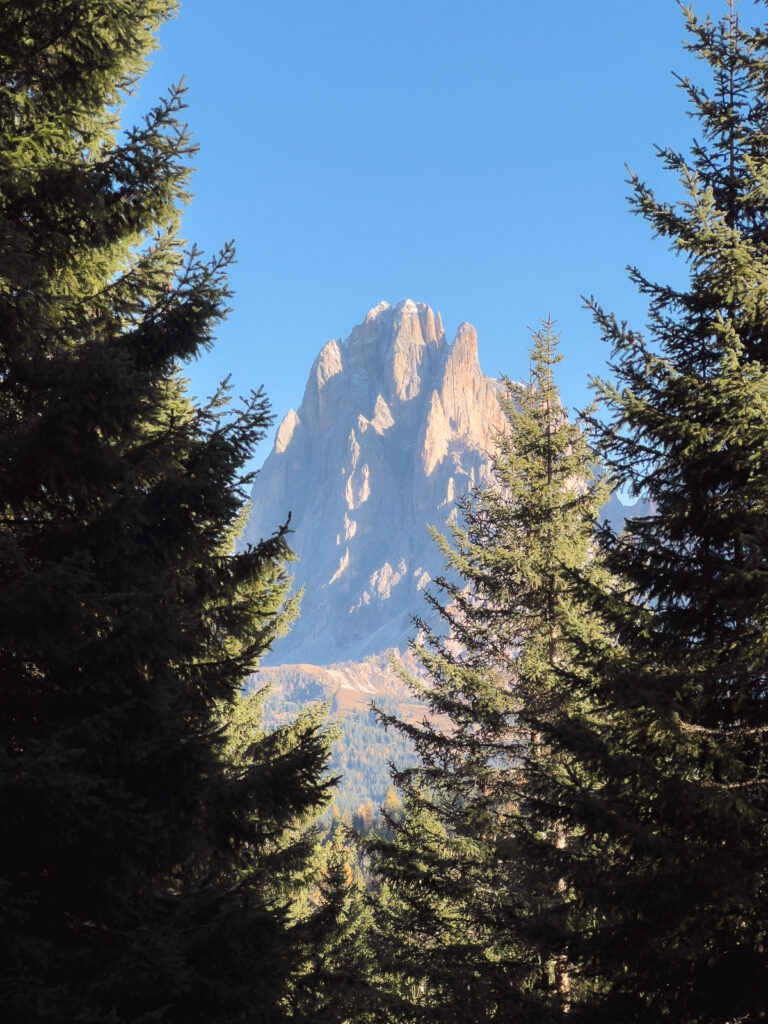
There’s a small regional airport in Bolzano that receives direct flights from different Italian cities + a few European countries, but flights are expensive + few and far between so it’s unlikely you’ll land here.
If you’re visiting the Dolomites as part of a bigger car-free Europe trip, just find the easiest route to Milan, Venice or Innsbruck and connect to the Dolomites from there.
Do you need a car in the Dolomites?
Nope, you don’t need a car for the Dolomites!
A car will give you more freedom and flexibility, but if it’s not an option for you for whatever reason, you can still see loads of incredible places in the Dolomites without needing your own set of wheels.
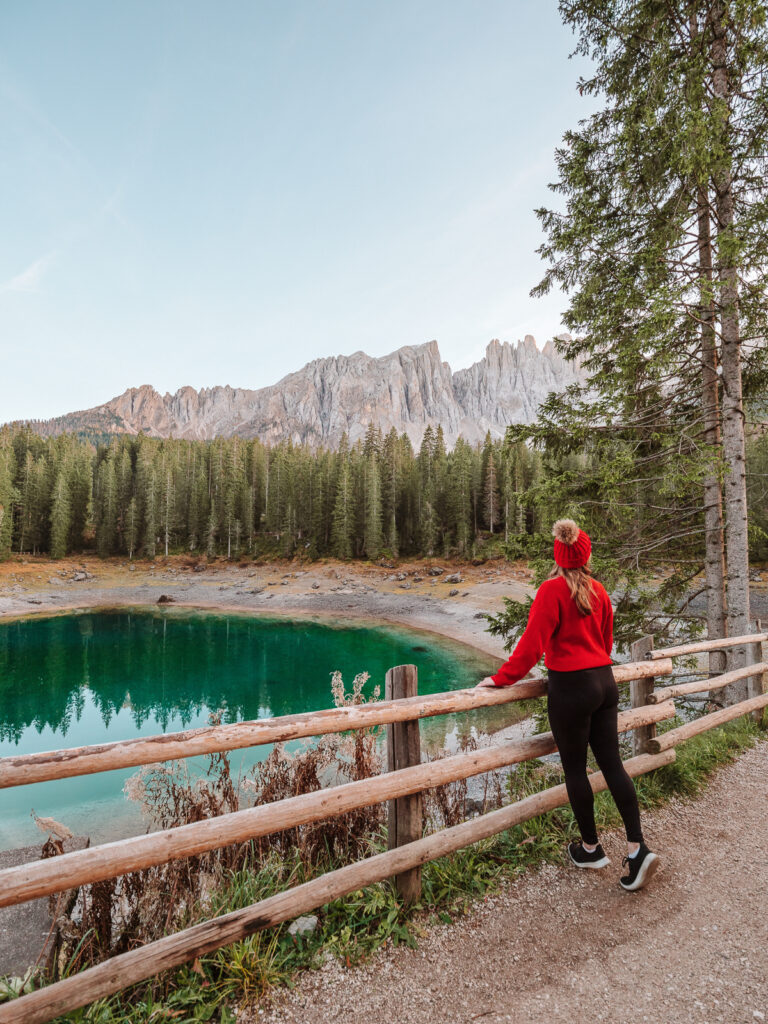
Getting around the Dolomites without a car
Travelling without a car here looks a little different depending on the season, so you need to plan in advance to make sure you can reach wherever you want to go by public transport during the period you’re visiting.
Let me run you through the main ways to get from A to B.
Buses and trains in the Dolomites
Buses are the main form of transport once you’re in the Dolomites, with local bus routes that connect villages along the main roads as well as tourist-friendly shuttles to bucket list spots like Lago di Braies or hiking trailheads.
Most bus routes to tourist areas have seasonal schedules, with frequent services from late May/early June to mid-October and then fewer departures (or none at all) from mid-October until the start of the summer season the following year.
In the quieter months there might be hours between buses and they might not run late in the day, so if you’re relying on getting home from the mountains, make sure you leave plenty of time so you don’t get stuck.
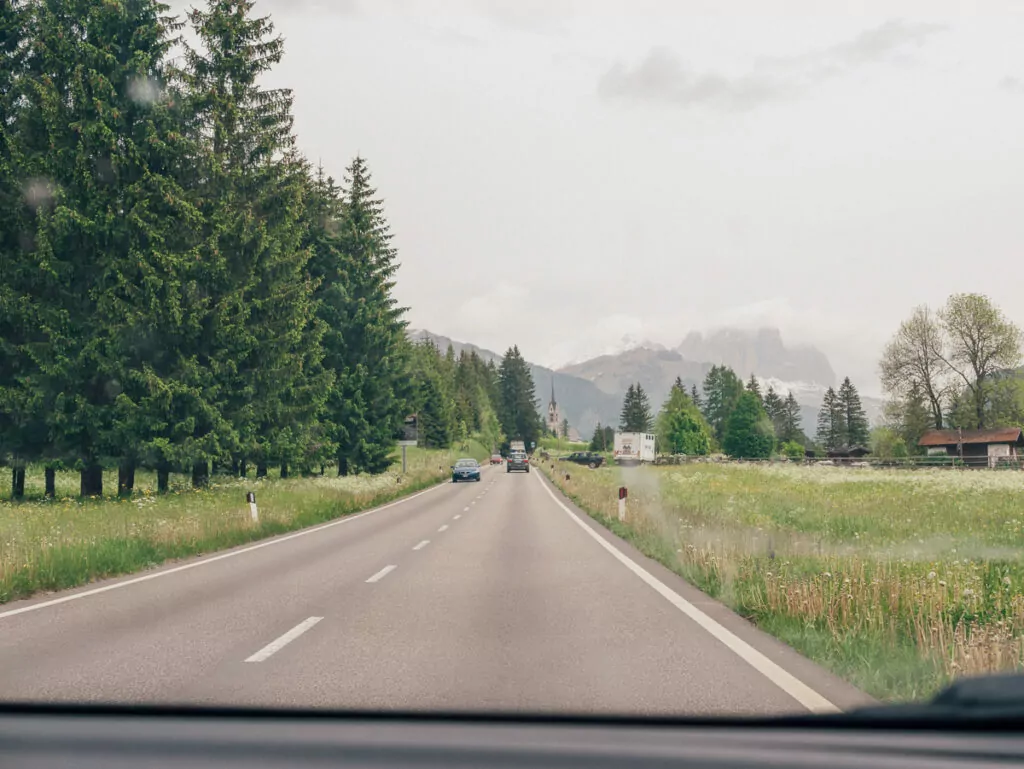
There are also trains in the Dolomites that connect some of the bigger towns, like Bolzano to Bressanone or Brunico to Dobbiaco, with buses taking you from those hubs to nearby villages.
If you’re planning to use public transport like buses and trains, the Südtirolmobil website and app are your go-to for up-to-date schedules and accurate maps. They also show a few funiculars/cable cars that are part of the Südtirol public transportation network, but they don’t show private cable cars like the ones to Alpe di Siusi and Seceda.
Public transport in South Tyrol is free with a Südtirol Guest Pass, which is included with your accommodation booking in the region. Your hotel will be able to give you more info or you can read more here >>
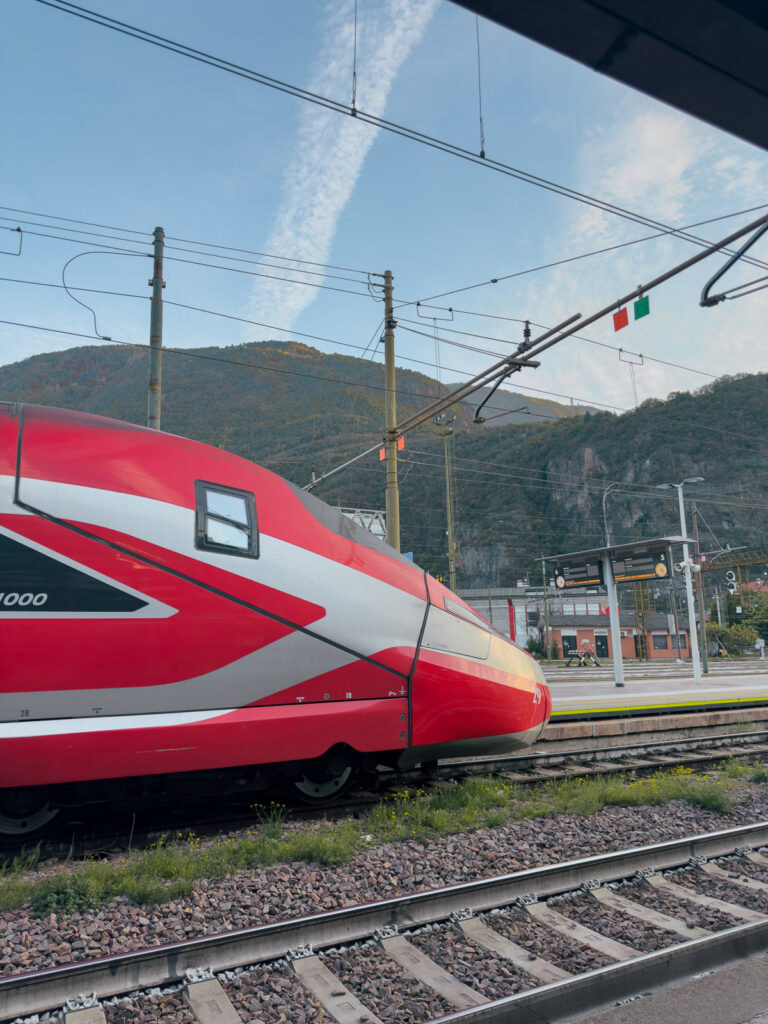
Cable cars/funiculars in the Dolomites
Cable cars and funiculars are your lifeline for getting up close to the rugged peaks and rolling plateaus that put the Dolomites on the map, including famous spots like Alpe di Siusi, Seceda and the panoramic terrace at Cima Tofana.
There are more than 100 dotted around the region, whisking you up to epic viewpoints, mountain huts, hiking trails and ski slopes. Most lifts operate from mid to late May for hikers and sightseers, then close from mid-October for the winter changeover, coming back online when the ski slopes open for business.
Tickets can be quite expensive, e.g. the Ortisei-Alpe di Siusi ropeway is €22 one way or €33 round trip in 2025, but there are regional travel passes like the Gardena Card that cover multiple lifts over a certain number of days which can be worth it for busy itineraries.
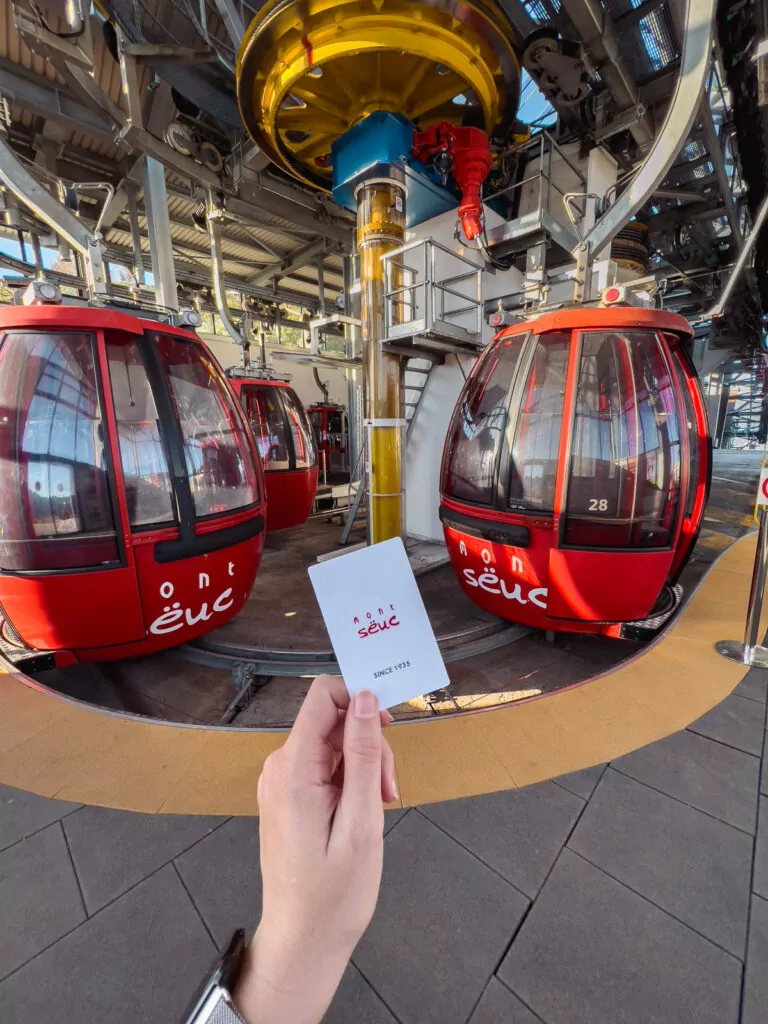
Dolomites hiking trails
There are hundreds of marked hiking trails in the Dolomites, ranging from relatively flat and easy strolls through to technical treks that require expert skills and professional gear.
In the destinations section below I’ve listed a bunch of hiking options that are accessible by cable car and public buses, but there are honestly way too many to list! AllTrails has lots of info split into regions/provinces, you can see the best South Tyrol trails here and Veneto trails here (from Cortina d’Ampezzo).
For the keen hikers amongst you who want to save on cable car trips, there are lots of trails that connect the valley villages with plateaus and paths up in the mountains. I’m more of a flat-hiking kinda gal than a steady upwards battler so I’m not the one to ask about this, but your hotel will be able to give you lots of tips on hiking routes nearby.
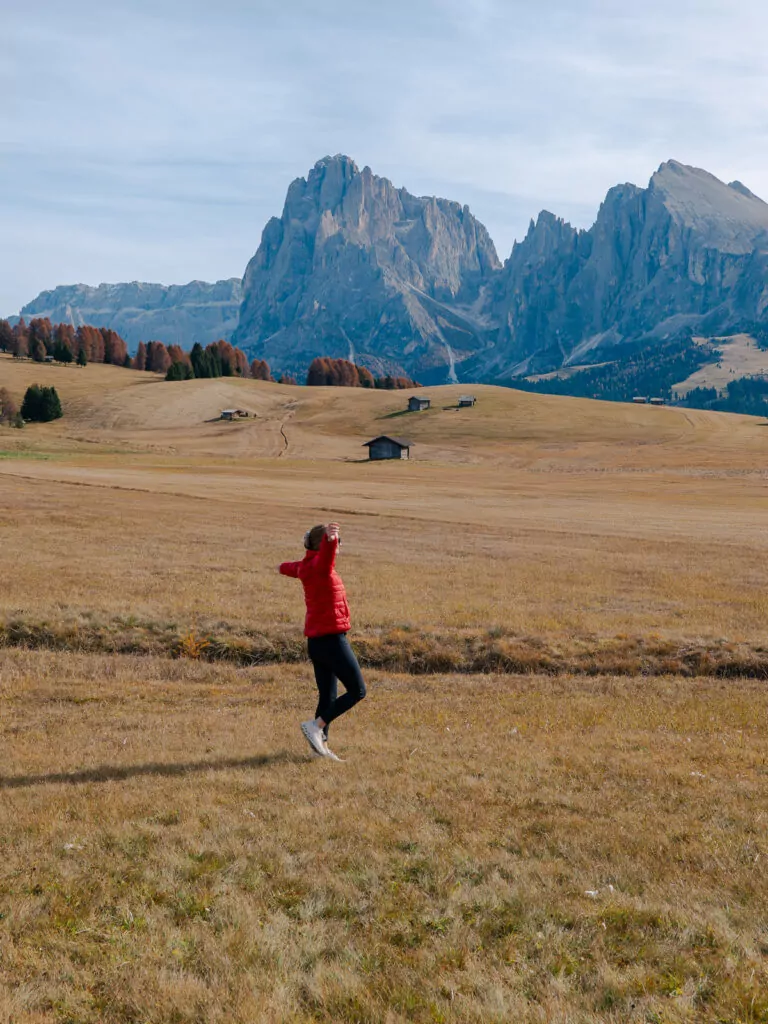
Transfers and taxis in the Dolomites
There are taxis in the bigger towns of the Dolomites like Bolzano and Cortina d’Ampezzo, but they charge a lottttt for the convenience. I’d recommend using public transport wherever possible.
If you need to reach a hotel or a hiking trail that’s not accessible by public transport, you can book private transfers with local companies like Blitz or Transfer Dolomiti, or organise a transfer through your accommodation.
Tours in the Dolomites
For stress-free travel without having to drive or navigate public transport, consider booking an organised tour instead. Some of the top tour options on TourRadar are:
- Hiking in the Dolomites with Intrepid Travel
- Classic Dolomites with Exodus
- Hiking in the Dolomites with Explore!
All of those links are to TourRadar which is like the Skyscanner of tours, if you book through TourRadar you can save $100/€100/£100 with the promocode ALEXX100 💰
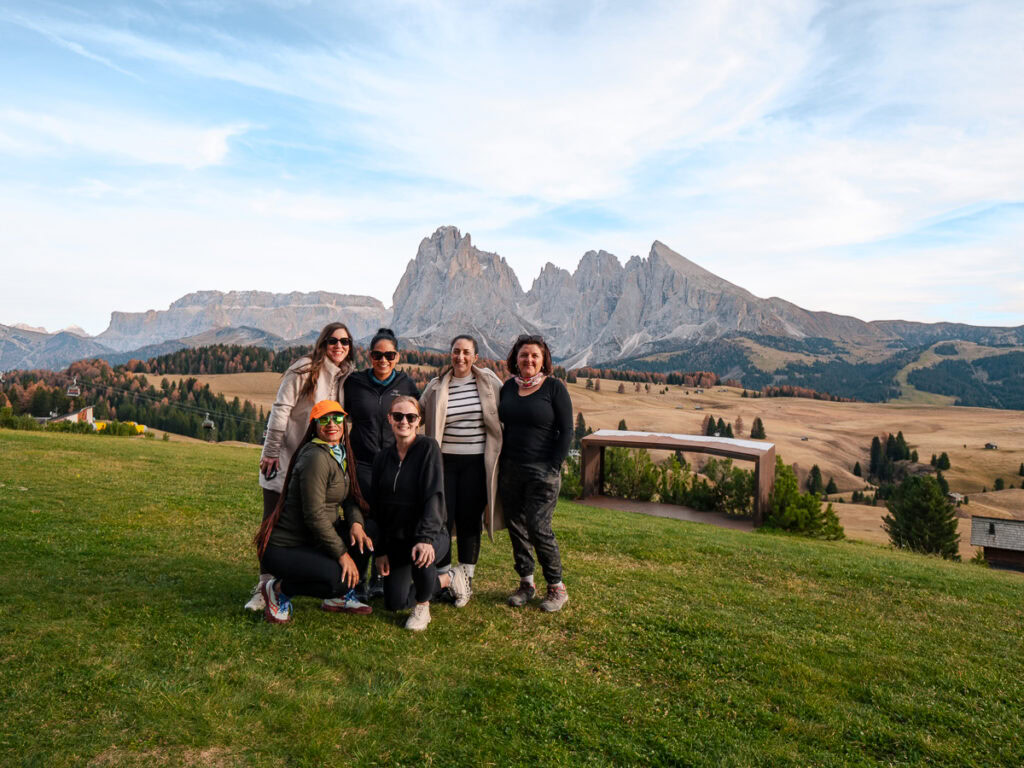
How long to spend in the Dolomites
The Dolomites region is vast and very spread out, and when you’re travelling without a car you’ll need to set aside a bit of buffer time in case of any public transport issues.
With these things in mind, I’d recommend spending a minimum of five days in the Dolomites.
Your arrival and departure days will have a decent chunk of time dedicated to getting to/from the Dolomites, so five days gives you three full days in the middle for hiking, sightseeing, whatever else you fancy!
If you’re lucky enough to have more time up your sleeve, one week would be perfect for a fast-paced Dolomites visit covering the top highlights accessible by public transport, and I’ve recommended a one week Dolomites itinerary without a car below.
If you’ve got more than one week (the dream!) you’ll be able to take that itinerary and slow it down, with extra adventure time or rest days in between.
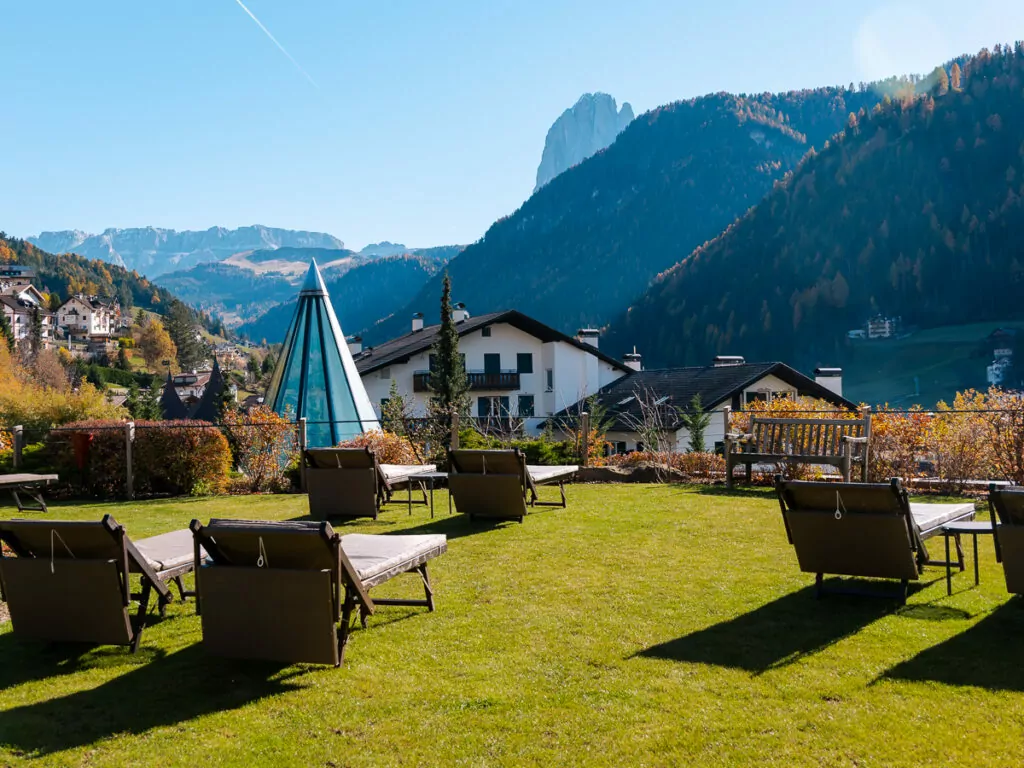
When to visit the Dolomites without a car
Tourism accessibility is extremely seasonal here, and the most convenient months to visit the Dolomites without a car are late May to June and September to mid-October.
☀️ The summer season starts in mid to late May, with cable cars coming out of hibernation, hotels and lodges opening their doors post-break, and restaurants, retailers and public transport ready to serve incoming travellers. June is pre-summer, with prices rising and crowds gaining momentum towards the end of the month.
🔥 In July and August the region sees its summer peak, with a massive influx of visitors both domestic and international. Prices are high, hiking trails are busy, but days are long and the weather is warm and sunny.
Shuttles to trailheads and tourist spots can be paaacked and book out in advance, as do the best accommodation, so you need to be onto it with your planning.
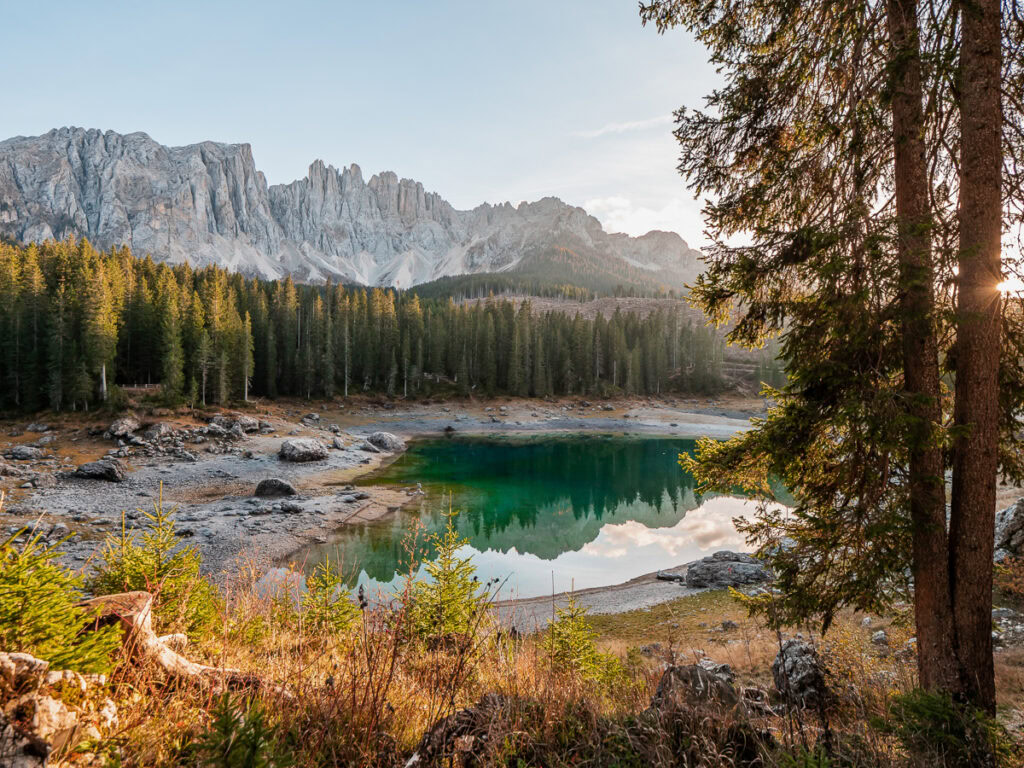
🍂 September to mid-October are my favourite months to be in the Dolomites, after the summer rush but before things close up. Great value accommodation, fewer crowds, very pleasant temps.
Autumn colours start showing around early October in the mountains, and by the middle of the month it’s a red, orange and yellow paradise.
Cable cars and season shuttles tend to end their season in mid-October, so visiting after that will mean long hikes into the mountains or private transfers/taxis.
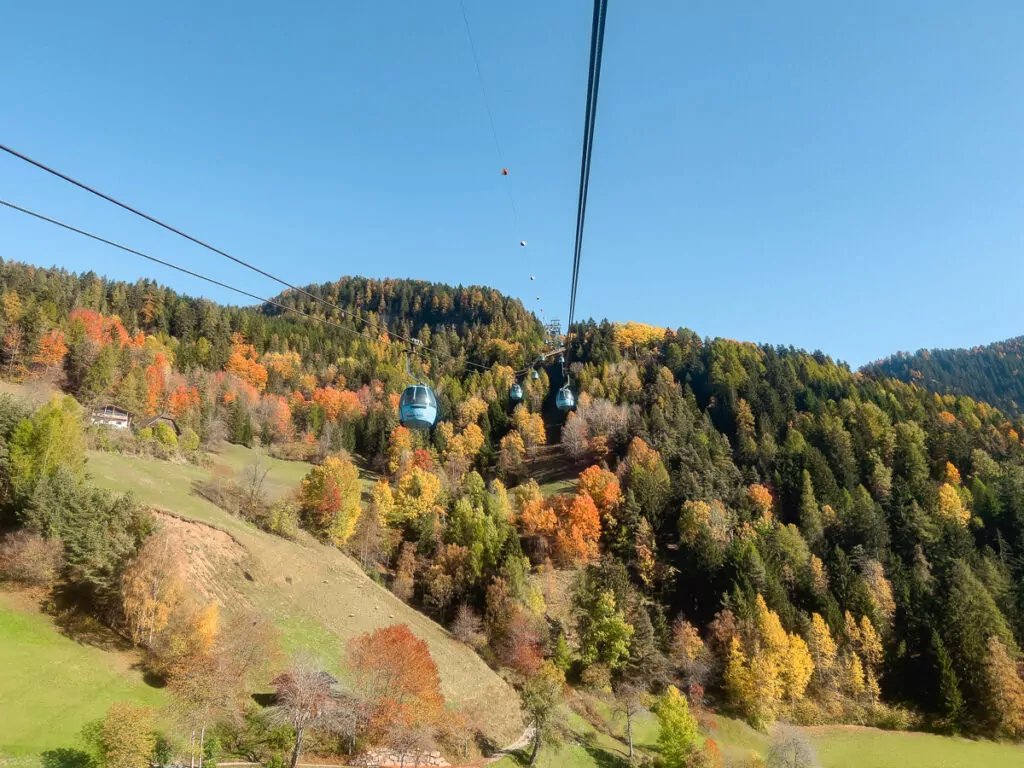
🧖🏼♀️ November in the Dolomites offers a unique opportunity if you just want a wellness getaway, because you can find fantastic off-season deals at the spa paradise of ADLER Spa Resort DOLOMITI in Ortisei.
Most resorts shut up shop to do their annual preparation for the winter months but ADLER DOLOMITI stays open, with 3500m² of pools, saunas and relaxation zones, half-board at their gourmet restaurant, and a central Ortisei location so you can arrive by bus year-round.
Rooms in the low season start from only €210pppn for two people or €241pn for a solo traveller in a single room, including spa access, buffet breakfast and 4/5 course dinner! Not bad, not bad.
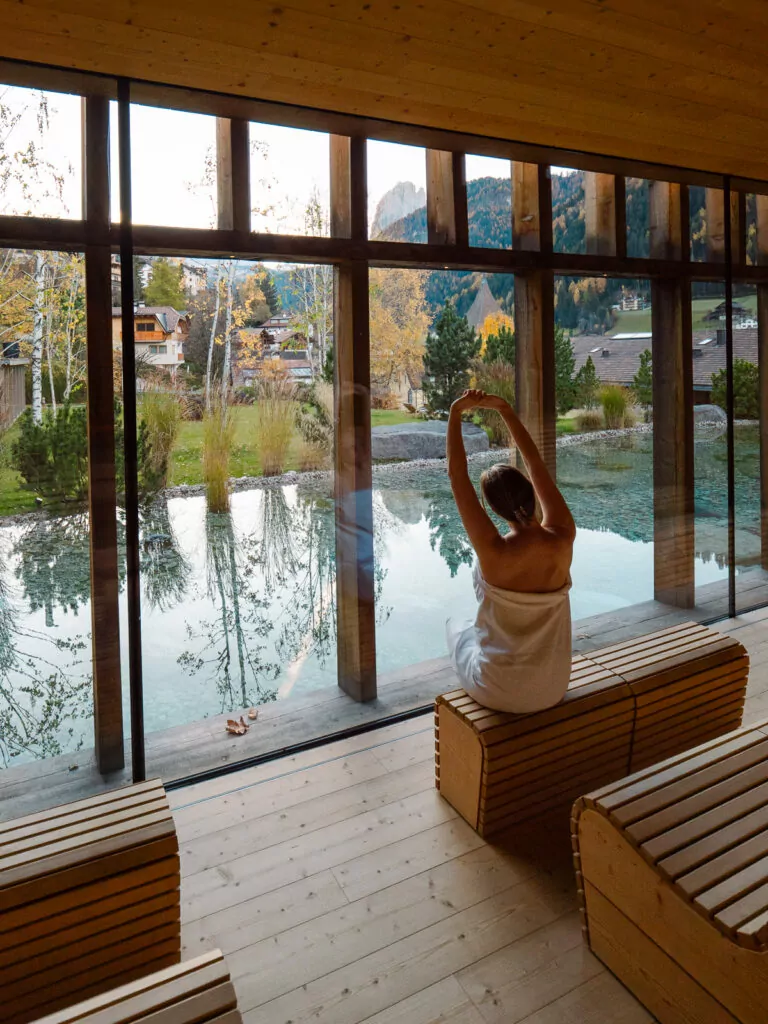
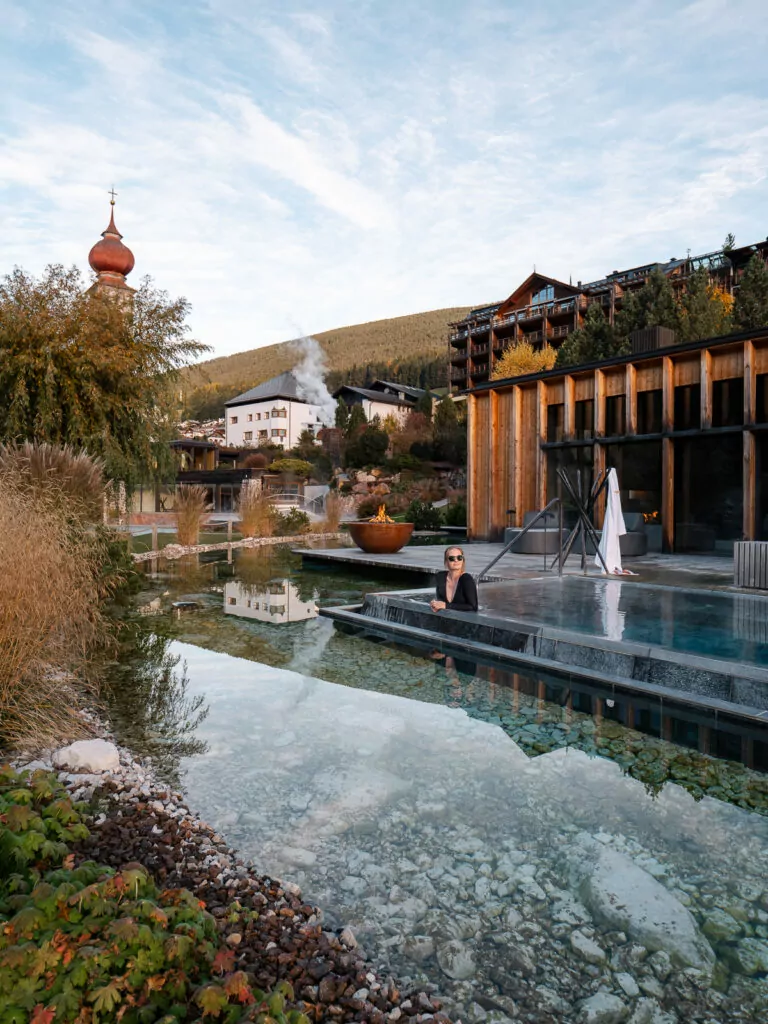
❄️ The Dolomites in the winter season is ski central, with the world-class Dolomiti Superski area at your doorstep. 12 ski resorts, 1200km of ski slopes, 450 lifts all accessible with one ski pass! Exact opening dates obviously depend on snowfall and individual lifts might start and end at different times, but generally most of the area is open for ski business from early December to early/mid-April.
You don’t need a car in the Dolomites in winter, just choose a base with easy access to ski lifts (like Ortisei or Cortina d’Ampezzo) and you’ll be able to ski your heart out with no wheels needed.
⚠️ IMPORTANT: The 2026 Winter Olympics are going to be held in Northern Italy, with Milan and Cortina d’Ampezzo as the main hosts. Things are going to be WILD here during the games (6-22 February) and in the lead up. If you’re planning a 2025/2026 ski trip then keep this in mind!
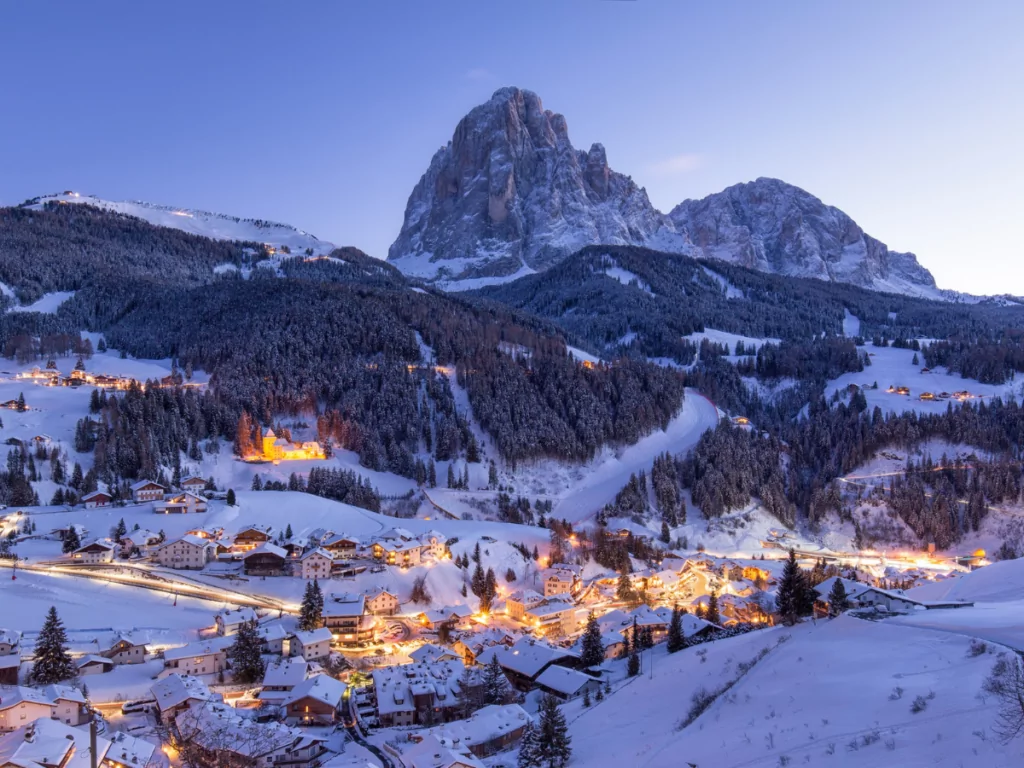
What to budget for the Dolomites without a car
I find the Dolomites to be an ‘in-between’ destination in terms of value for money, not as expensive as other alpine getaways like Switzerland, but on the higher end of the scale vs. southern Italy.
Travellers on a tight budget will want to book in advance, if you manage to snag an affordable room (especially if you can get one with kitchen facilities) and you don’t mind long bus rides or walks, there’s lots to see and do that won’t cost you an arm and a leg. Last minute trips are not budget-friendly, the cheap options book out months in advance so you’ll waste loads just on accommodation.
Mid-range (or as I like to call them ‘in-between travellers’) will have loads of options, with a huge range of small guesthouses, mountain lodges and nice hotels catering to more-than-budget but less-than-luxury adventurers.
And for the higher end travellers, there are exclusive resorts dotted throughout the mountains!
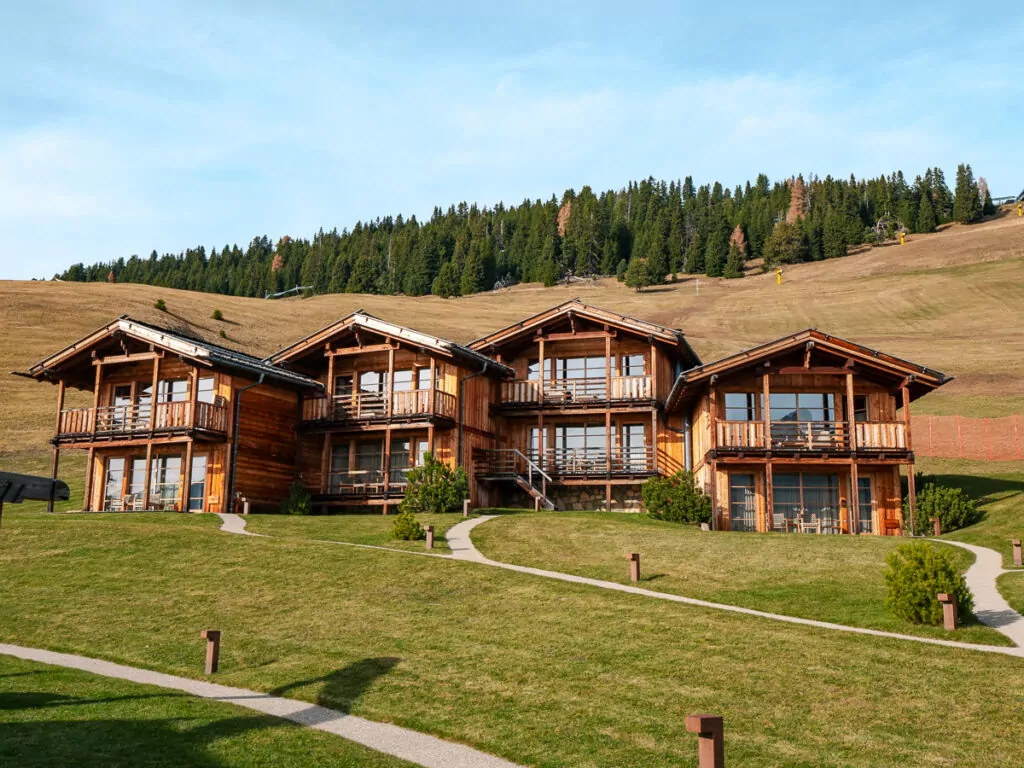
Here’s a rough idea of what to expect to pay if you stay in an accessible area like Ortisei or Cortina d’Ampezzo, based on 2025 prices in May/June and September/October. Expect to pay 20-50% more for peak summer.
🛌🏼 Accommodation
- There aren’t many hostels in the bus-accessible parts of the Dolomites, the only hostel operator I can find is Youth Hostel with locations in Dobbiaco, Bolzano and Bressanone. They have dorms from €32 and single rooms from €52, you need to email them to book because they don’t show up on booking.com or Hostelworld.
- Affordable guesthouses/B&Bs: €100-200
- Mid-range hotels/lodges: €200-350
- Luxury hotels/lodges: €350-600+
- Bolzano accommodation is cheaper (a fair few affordable options around €70-100 and mid-range options around €100-130) but it’s further away from most of the highlights
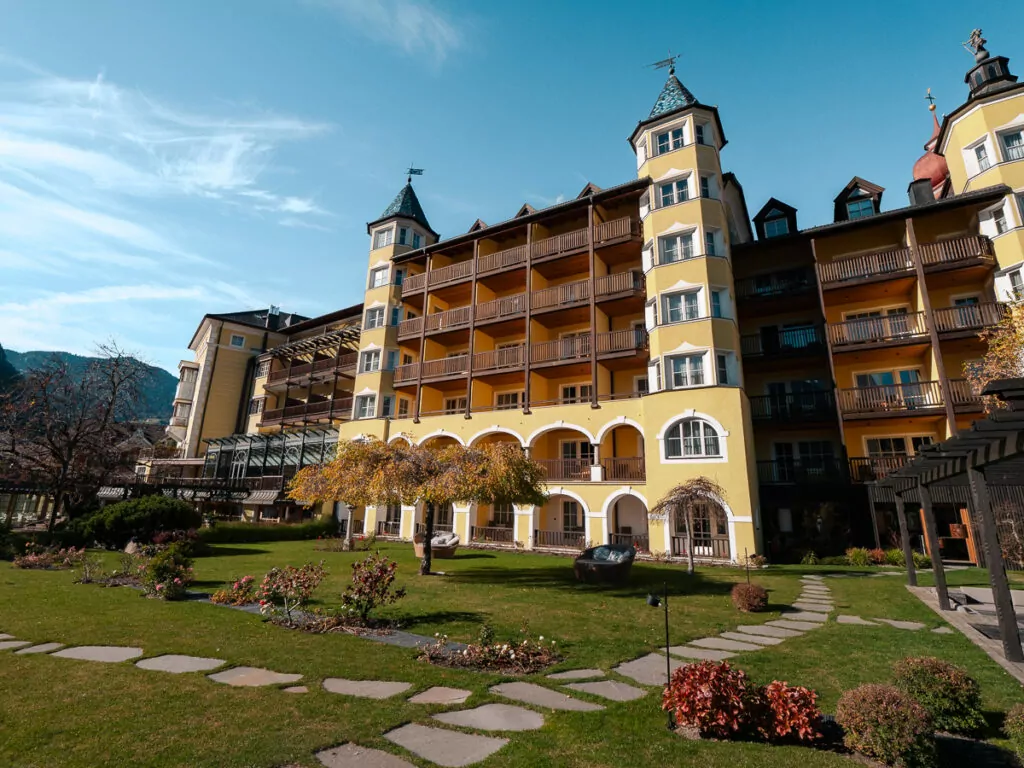
🚌 Transport & activities
- Public transport is often free or very cheap with a hotel booking, different regions in the Dolomites have different guest passes for this but you can read more here for South Tyrol and here for Belluno
- Taxis are available in the main cities but are few and far between in the smaller towns, and can be very expensive. Worth it if you’ve got a group of 4+ people and want to avoid wasting time.
- Hotels can book private transfers to and from nearby airports/train stations, hike trailheads and other towns, but these are pricey too
- Cable cars are usually €25-40 round trip but if you’re planning on taking a few then local passes like the Gardena Card or the bigger Dolomiti Supersummer lift pass might save you money
- The best things to do in the Dolomites are the hikes and viewpoints, so they don’t cost anything extra beyond the transport to get there, but potential extra expenses could be street food tours, guided hikes, via ferrata climbs or a private driver/guide if you’re travelling with a group to make the price worth it
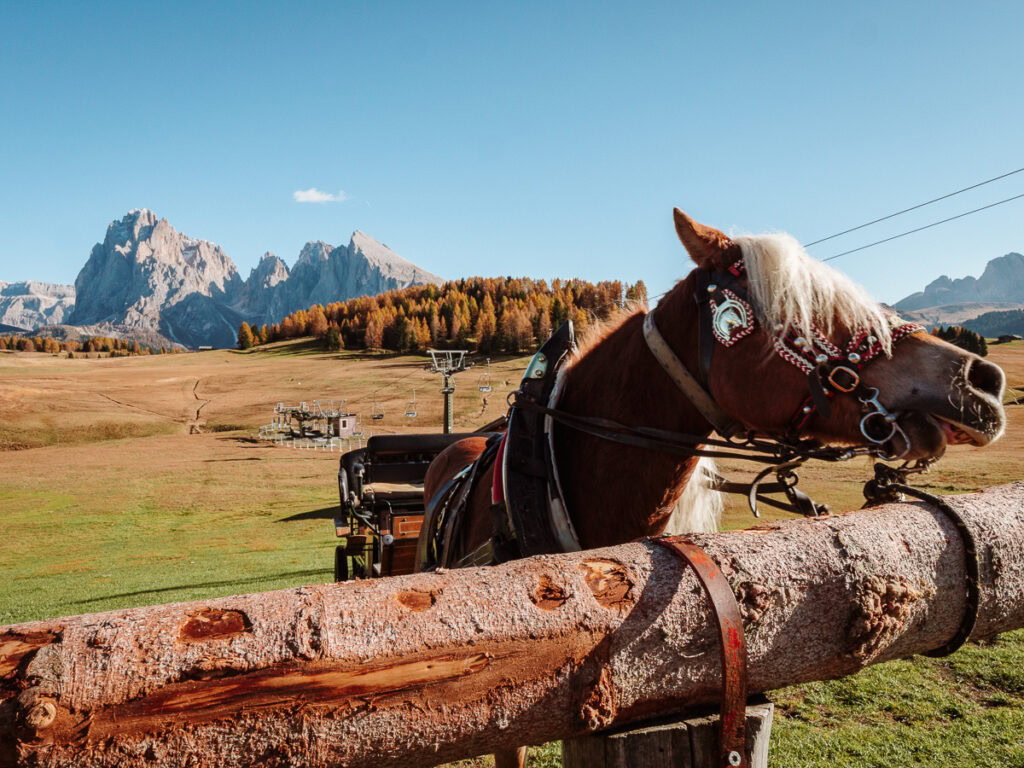
🍝 Food
- Supermarkets are more expensive in the Dolomites vs. other parts of Italy, so if you want to stock up on snacks then I’d recommend doing that in Milan, Venice or wherever else you are before you come into the mountains
- Casual restaurants and takeaway places will generally set you back €8-12 for a pizza, pasta, burger etc.
- Sit down restaurants will cost around €15-25 for most main meals, more for non-local ingredients like imported meat or fish
- A bottle of beer or glass of local wine will set you back €4-7
- In Bolzano you’ll get the best value for money food-wise too, with more affordable supermarkets and casual eateries than the tourist towns, especially when you get out of the main centre/train station area. One of the best pasta places of my life is in Bolzano, it’s called Pasta Lab and it’s cheeeeap!
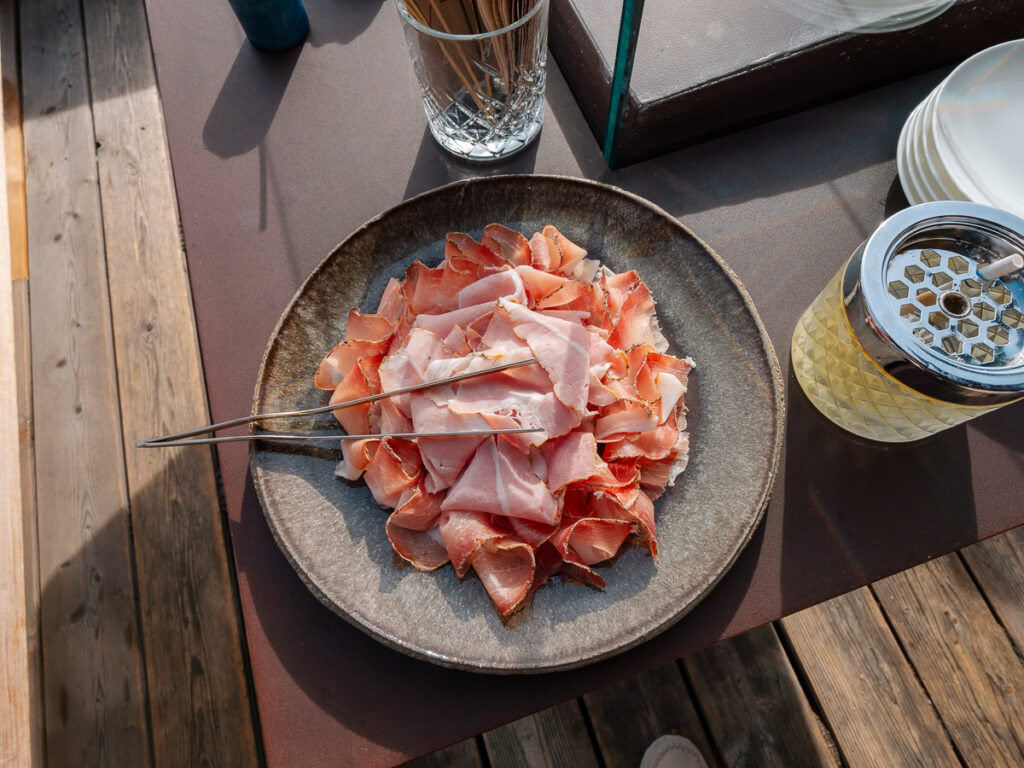
Where to stay in the Dolomites without a car
Choosing one base vs. town-hopping in the Dolomites
When planning out your Dolomites trip, you could either choose one base and take day trips from there, or opt to move from town to town.
Pros and cons of choosing one base in the Dolomites:
- Pro: Only unpack once
- Pro: Access to multi-night discounts
- Pro: More range of accomm as some places have minimum stays
- Pro: If you choose somewhere with kitchen facilities you can do one big shop and save €€€ on food
- Pro: Get to know the area you choose much better than a single night stay
- Con: More time on public transport to reach spots out of the immediate area
- Con: You’ll probably cover less ground in total
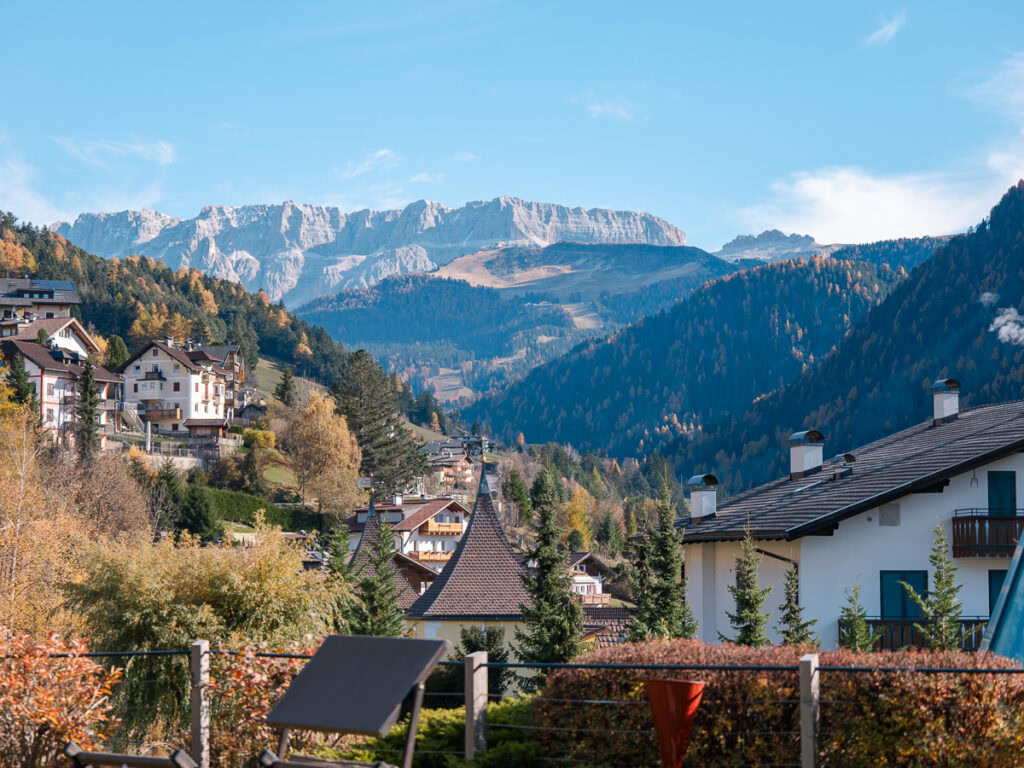
And pros and cons of town-hopping:
- Pro: See various parts of the Dolomites
- Pro: Shorter transport to reach your day trip locations
- Pro: Combine cheap stays with fancier hotels
- Pro: Choose 2-5 of the bases below and cover lots of ground
- Con: Less range of accomm for 1-2 night stays vs. 3+ nights
- Con: More transit time with luggage
Your best Dolomites travel style really depends on your priorities and how long you’re visiting. If you’ve got three nights or less then I’d recommend choosing one base, and if you have four or more then you could look at splitting your stay.
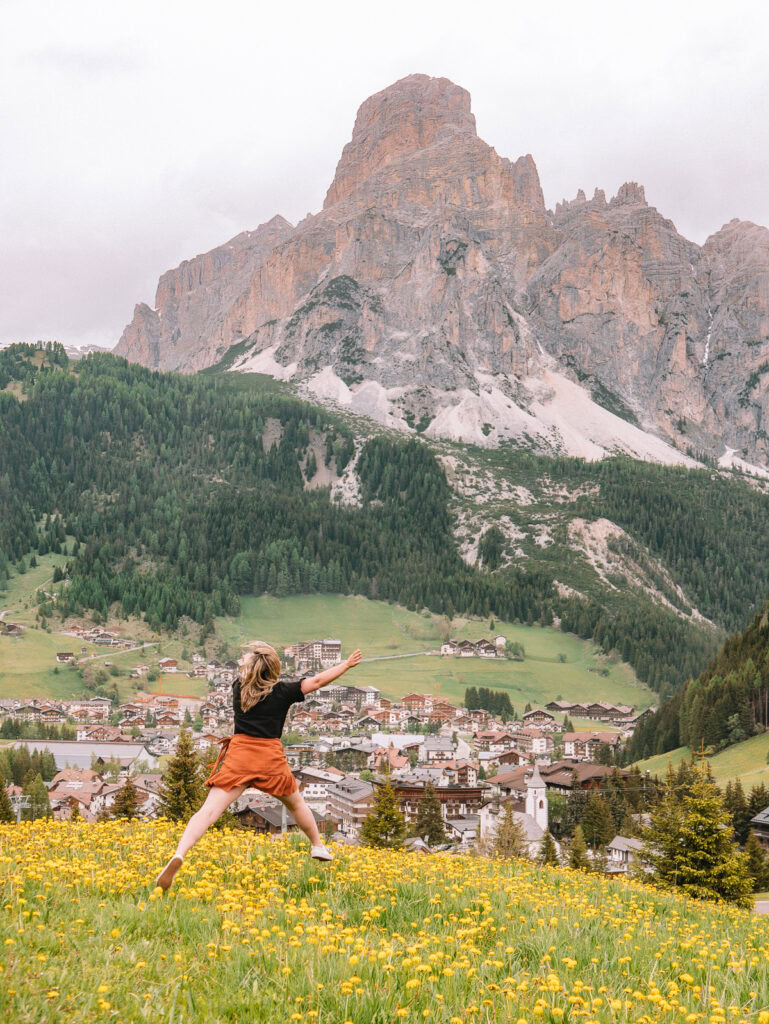
Bolzano as a base
Recommended minimum stay: 1 night
Bolzano/Bozen is the capital of South Tyrol, with the Dolomites’ main train station offering direct links from Milan, Verona, Venice and Innsbruck, and then providing onward buses to other towns and the Val Gardena tourist towns.
It’s more of a launchpad for the mountains rather than a destination in itself, but there are a few major must-sees that are best accessed from here + how you can reach them:
- Lago di Carezza 🚌
- Soprabolzano 🚠 & Collalbo 🚂
- Merano 🚌/🚄
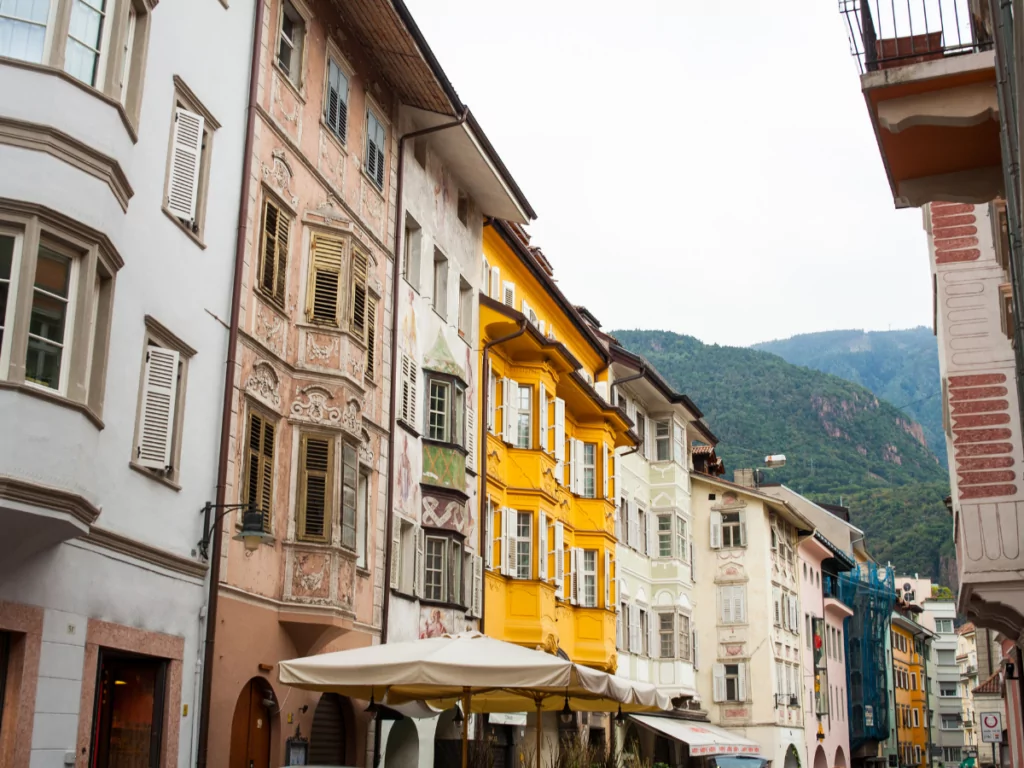
Where to stay in Bolzano
Budget
- Youth Hostel Bolzano (the only hostel in the city at the moment, only bookable direct on their website so it won’t come up on booking.com, check their Google reviews here)
- Maison My Life (cheapest apartment in Bolzano but 1.8km from the train station)
- Mia Rooms and Mia Rooms 2 (affordable rooms super close to the train and bus stations)
Mid-range
- Hotel La Briosa (4* boutique hotel a short walk from the train station)
- Loom (super unique hotel that doubles as a showroom for an interior design company, I loved my stay here but unfortunately it’s quite far from public transport)
- Residence – Palais Hörtenberg (top-rated good value apartments 10 mins from the train station)
- Parkhotel Mondschein (4* design hotel with a beautiful pool and patio area, two blocks from the station)
Luxury
- Castel Hörtenberg (the only 5* hotel in Bolzano, elegant and modern rooms inside a Renaissance castle)
- ADLER Lodge RITTEN (bucket list alpine lodge up on the Ritten/Renon plateau above Bolzano, pricey but worth the splurge)
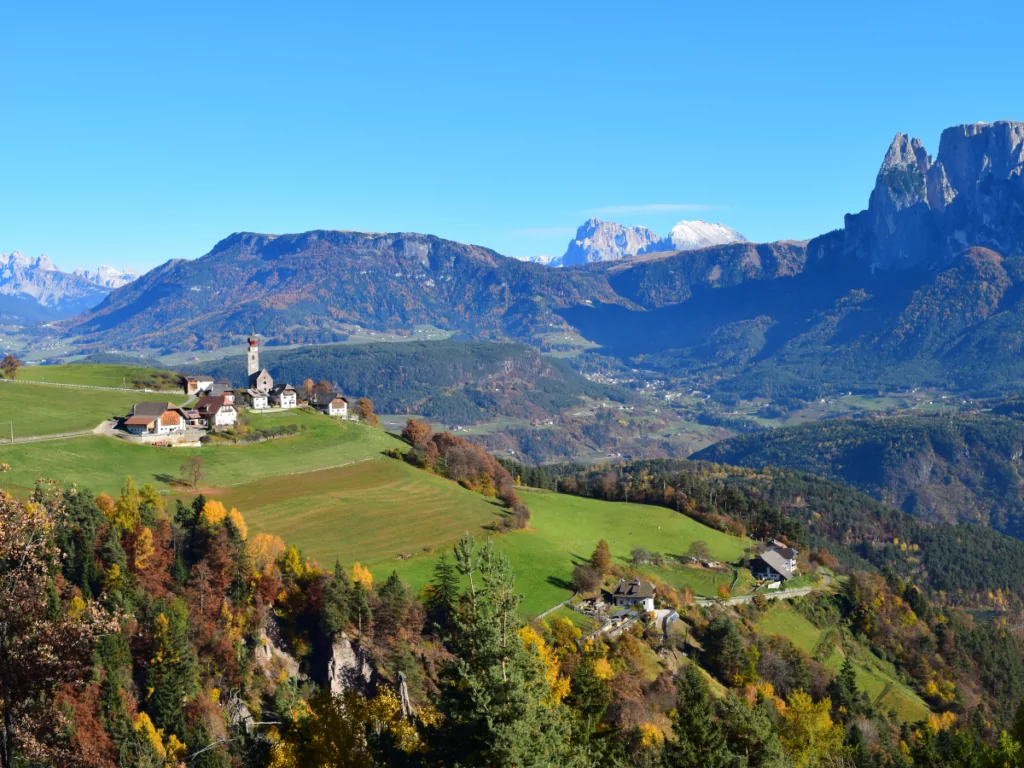
Ortisei as a base
Recommended minimum stay: 2 nights
Ortisei/Urtijëi is my personal top pick for the best base in the Dolomites. It’s super handy for car-free travellers wanting to experience mountain magic without spending too much time on your feet, with three cable cars right on its doorstep delivering you to some of the best viewpoints and trails in the region.
The 350 bus gets you from Bolzano to Ortisei direct in 56 minutes, it operates hourly year-round. Check the timetable here >>
Some of the highlights accessible from Ortisei are:
- Alpe di Siusi 🚠
- Seceda 🚠
- Resciesa 🚠
- Castelrotto 🚌
- Chiesa di San Giacomo 🚌/🥾
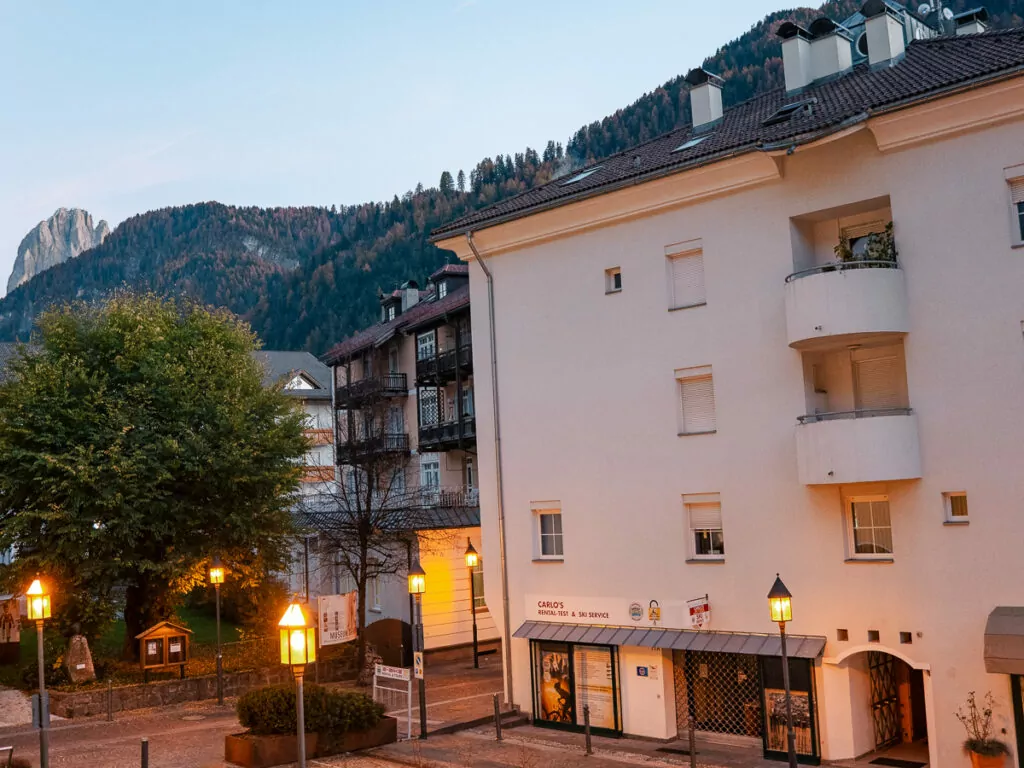
Where to stay in Ortisei
Budget
- Hotel Cosmea (simple and cosy 3* hotel right by the Alpe di Siusi cable car)
- Garni Rives (well-rated B&B with basic rooms, a short uphill walk from town)
- Hotel Garni Vanadis (comfortable and spacious with fantastic reviews)
Mid-range
- ADLER Spa Resort DOLOMITI (incredibly well-priced 5* wellness resort with 3500m² of pools and saunas, my favourite hotel in Ortisei! Read my full review here >>)
- Residence Cesa Ladina (good value apartments in a great location)
- Classic Hotel Am Stetteneck (elegant 4* in the centre of town)
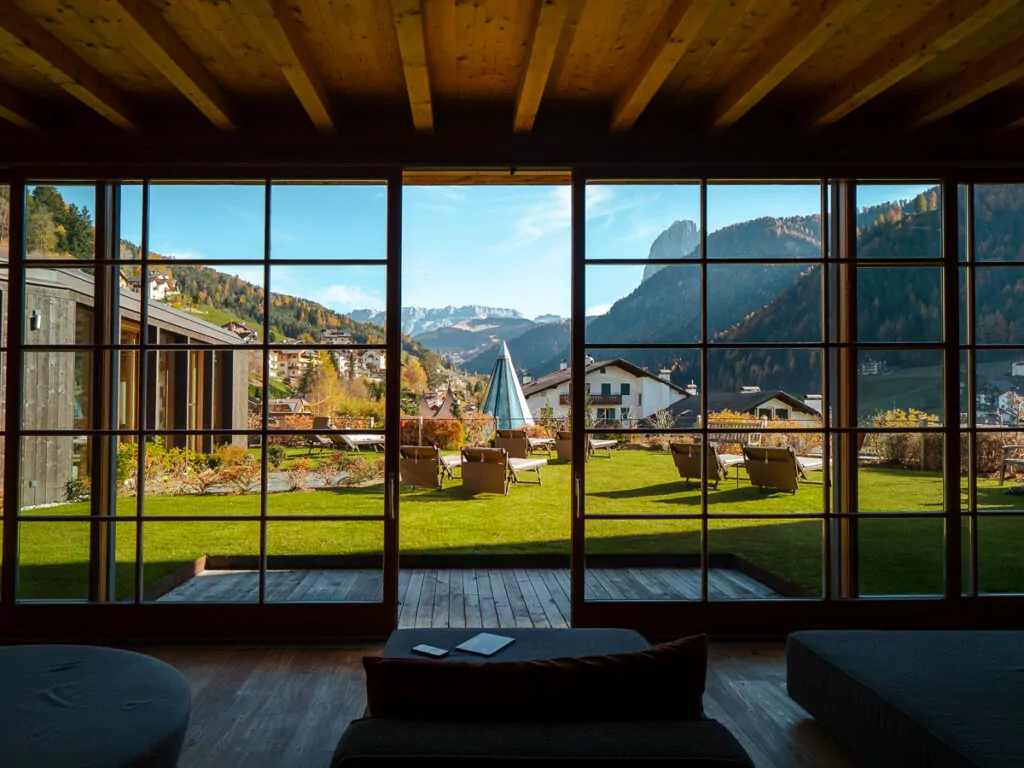
Luxury
- ADLER Spa Resort BALANCE (luxury adults-only health resort with an in-house medical team for detox, rehabilitation and general wellness programmes, + access to ADLER DOLOMITI’s pool and spa area)
- Alpin Garden Luxury Maison (5* spa resort with opulent interiors)
- ADLER Lodge ALPE (world-class luxury suites and chalets up on the Alpe di Siusi, another one for your Italy bucket list)
- Gardena Grödnerhof (recently renovated high end hotel with superb reviews)
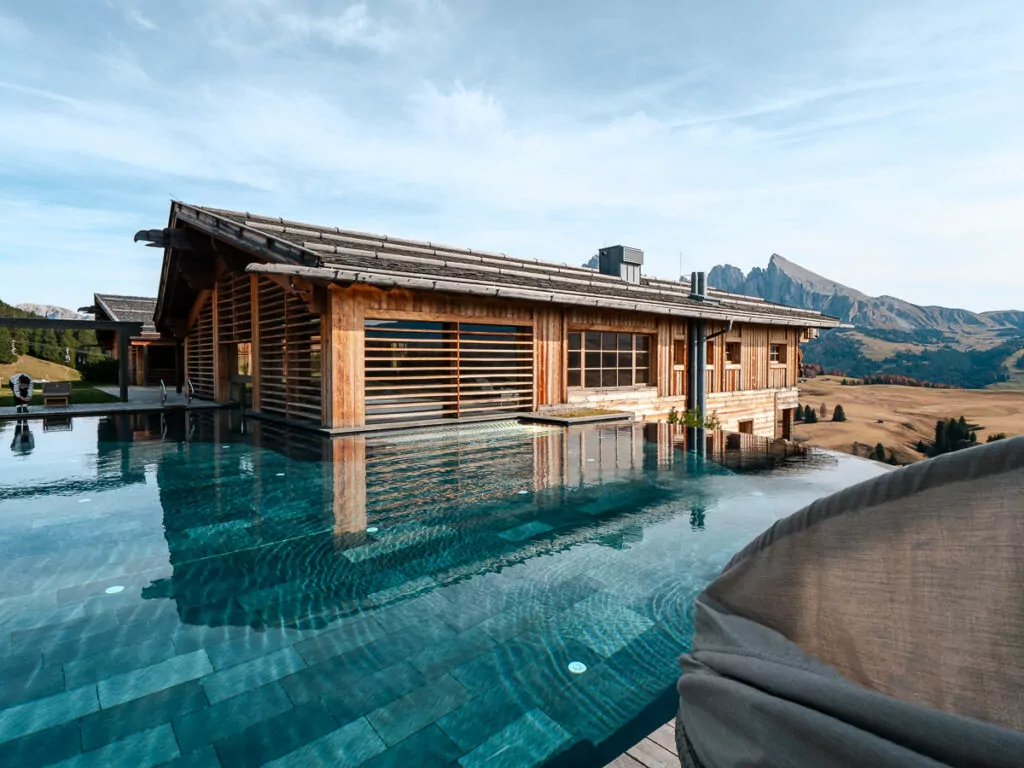
Dobbiaco as a base
Recommended minimum stay: 1-2 nights
Located less than 15km from the Austrian border, Dobbiaco/Toblach is the gateway to the Dolomites’ most famous lake, Lago di Braies, as well as the iconic three peaks of Tre Cime di Lavaredo.
To get to Dobbiaco you can take a train/bus/train journey from Bolzano (2h20m total) or a bus/bus/train combo from Ortisei (2h50m total).
From Dobbiaco you can easily reach the following places:
- Lago di Braies 🚌
- Lago di Dobbiaco 🚌/🥾
- Tre Cime di Lavaredo 🚌 + 🥾
- Cadini di Misurina 🚌 + 🥾
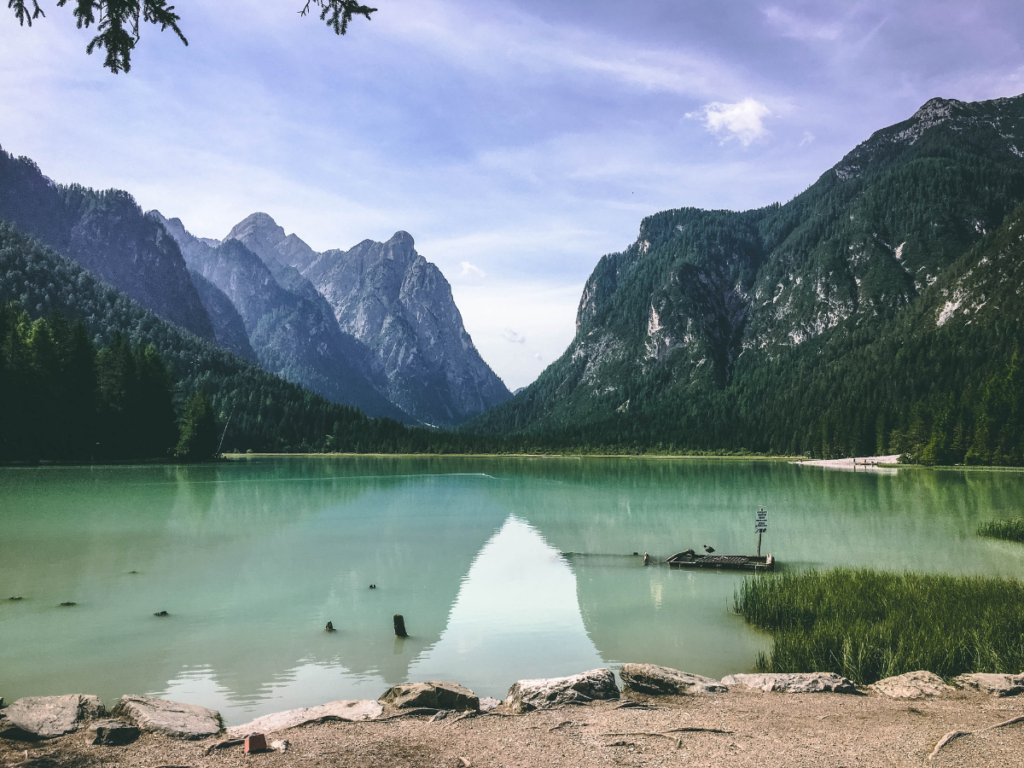
Where to stay in Dobbiaco
Budget
- Dobbiaco Youth Hostel (same brand as the Bolzano one, only bookable on their website, located in the old Grand Hotel of Dobbiaco)
- Hotel Nocker (budget-friendly guesthouse right by the train station)
- Hotel Sole – Sonne (simple 3* hotel also near the train station)
Mid-range
- Guesthouse Cultural Center Gustav Mahler (comfortable and clean rooms in another wing of the historic Grand Hotel)
- Haus Greg (good value apartments in the middle of town)
- Hotel Simpaty (newly-renovated family-owned hotel right by the bus station)
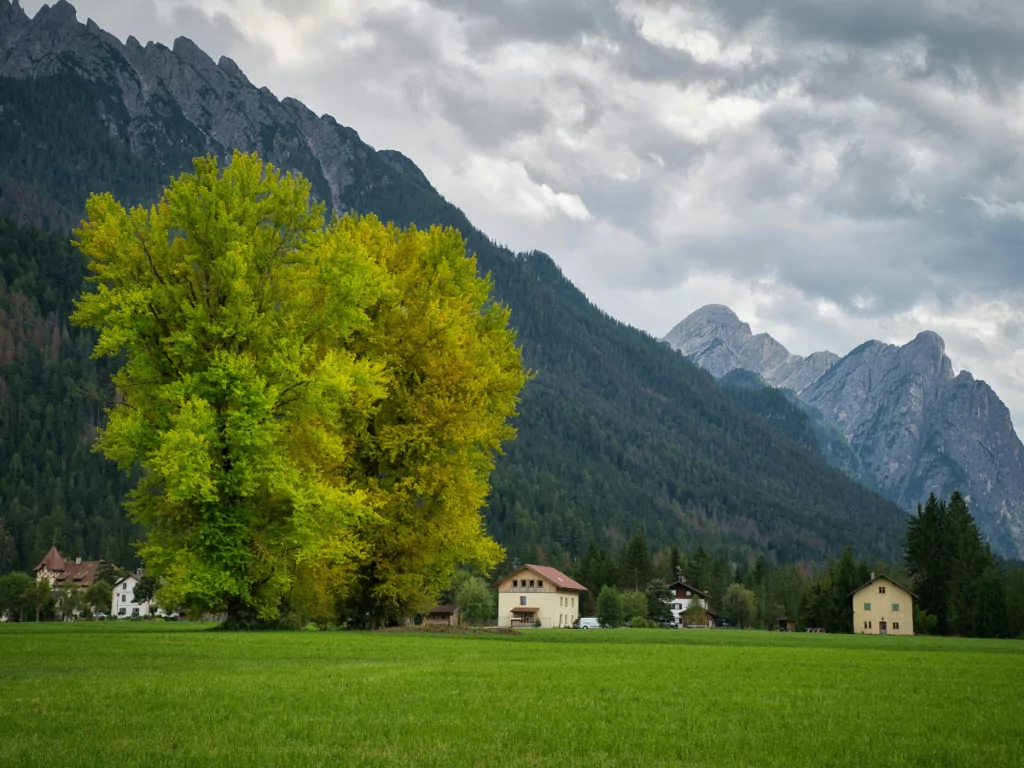
Cortina d’Ampezzo as a base
Recommended minimum stay: 1 night
The main point of entry into the Dolomites from the east side is Cortina d’Ampezzo, a St-Moritz-esque resort town with chic wine bars, high end boutiques and plenty of outdoor adventures within easy car-free reach.
To reach Cortina d’Ampezzo from Dobbiaco it’s a 40 minute direct bus, or if you’re starting your trip on this side you can get a direct bus from Venice that takes around two hours.
Worthwhile spots near Cortina d’Ampezzo are:
- Lago di Sorapis 🚌 + 🥾
- Monte Faloria 🚠
- Cinque Torri 🚌 + 💺
- Cima Tofana 🚠
- Tre Cime di Lavaredo 🚌 + 🚌 + 🥾
- Cadini di Misurina 🚌 + 🚌 + 🥾
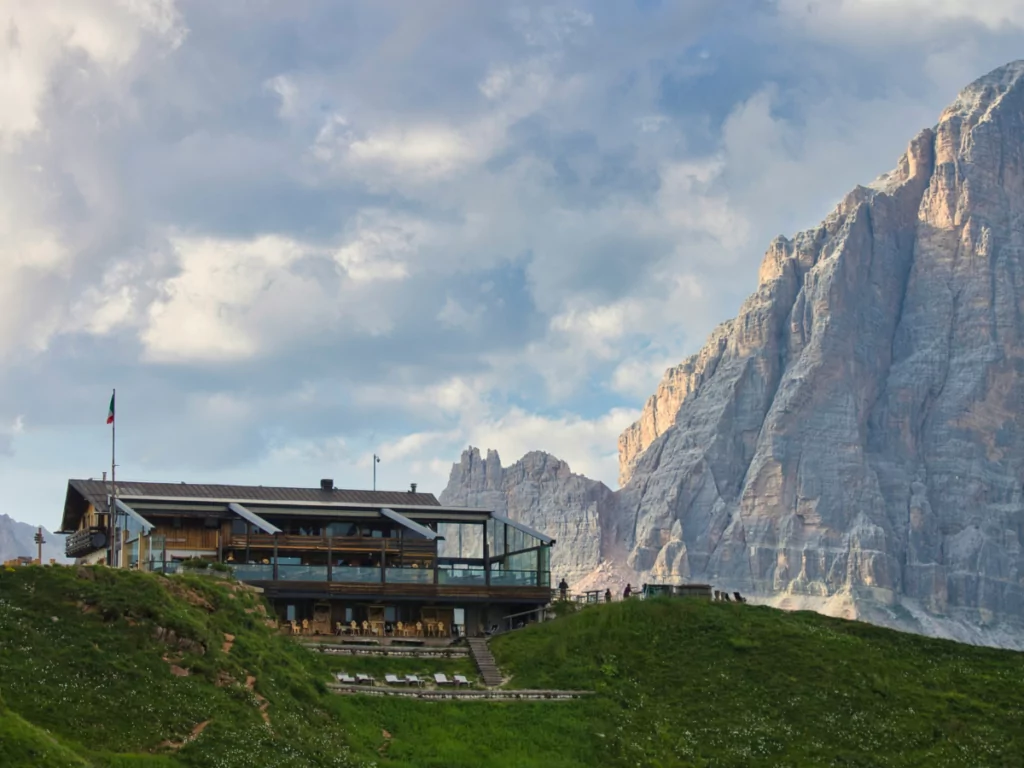
Where to stay in Cortina d’Ampezzo
Budget
- Hotel Montana (clean and cosy hotel in the perfect location)
- Hotel Oasi (simple family-owned hotel right next to the bus station)
Mid-range
- Hotel Columbia (top-rated 3* lodge-style hotel)
- Franceschi Park Hotel (family-friendly hotel with a playground, tennis court and grassy terrace with mountain views)
Luxury
- Grand Hotel Savoia (a Radisson Collection luxury hotel with stunning interiors)
- Eight Cortina (5* boutique design hotel that’s just reopened in early 2025 after a modern renovation)
- Faloria Mountain Spa Resort (luxury 5* resort 10 mins from Cortina d’Ampezzo but with a free shuttle bus to and from town)
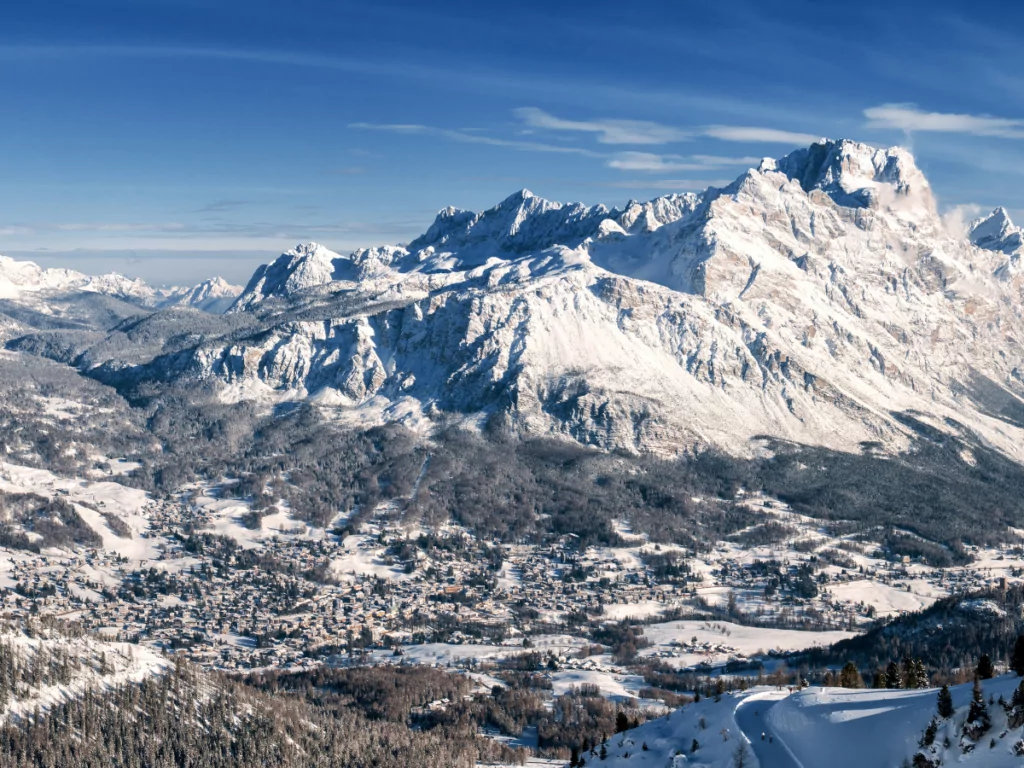
Places to visit in the Dolomites without a car
The Dolomites area stretches almost 16,000km² (15,942km² to be exact) so there are looooads of villages, lakes, hikes, valleys, peaks and plateaus to explore. Here’s what not to miss in the Dolomites, all accessible without a car.
Bolzano/Bozen
How to get here: Direct trains from Milan (3h), Verona (1h30m), Innsbruck (2h10m) or anywhere connected to those hubs
Most travellers begin their no-driving Dolomites adventure here in Bolzano, thanks to its transport links to other Italian and Austrian cities and beyond.
It might not have the charm of the alpine towns deeper in the mountains, but it does offer excellent value accommodation and dining options, the most convenient access to Lago di Carezza (a mesmerising no-hike scenic spot), and medieval arcades and alleyways.
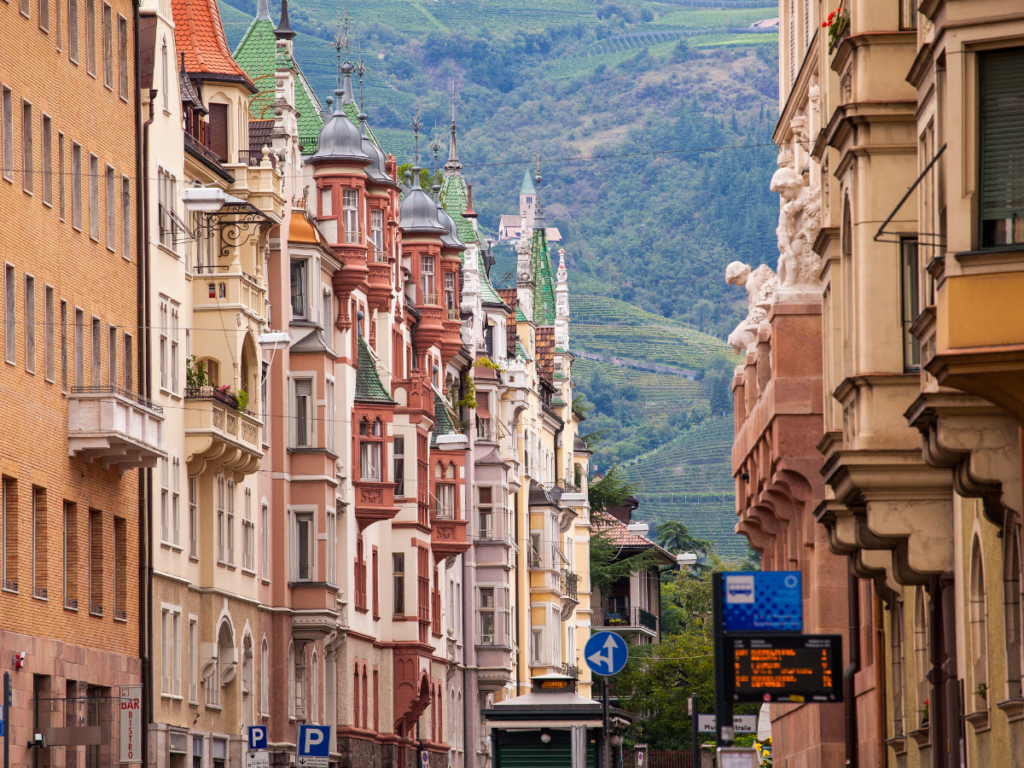
If you’ve got time up your sleeve for exploring Bolzano, don’t miss:
- This top-rated street food tour to try traditional South Tyrolean cuisine with a local guide
- Piazza delle Erbe fruit and vegetable market, it’s been running since the 13th century!
- Ötzi the Iceman, a 5000+ year old scarily-well-preserved mummy at the South Tyrol Museum of Archaeology
- The historic old town
- Pasta at Pasta Lab (thank me later)
- Side quests to Soprabolzano, Lago di Carezza or Merano (more on them soon)
- Or for a stress-free hiking experience you can book a private hiking tour with a local guide
And if you’re visiting around the festive season, you can find Italy’s biggest Christmas market in Bolzano! 2025 dates haven’t been released yet but you can check here for updates.
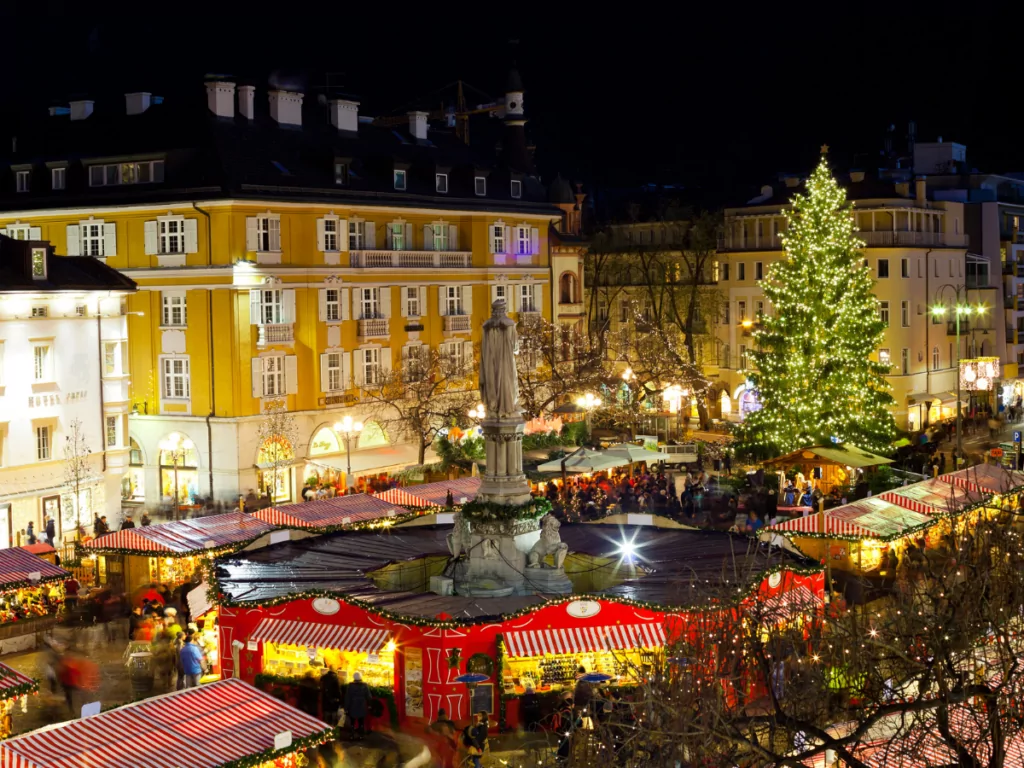
Lago di Carezza/Karersee
How to get here: Catch bus 180 from Bolzano towards Passo Costalunga, you’ll get dropped right at Lago di Carezza in 50 minutes
With intense emerald water reflecting the chiselled Latemar mountains sitting in the distance, Lago di Carezza is a natural masterpiece that is aesthetically-pleasing beyond words. I mean seriously, just look at the proportions of lake to trees to mountains *chef’s kiss*
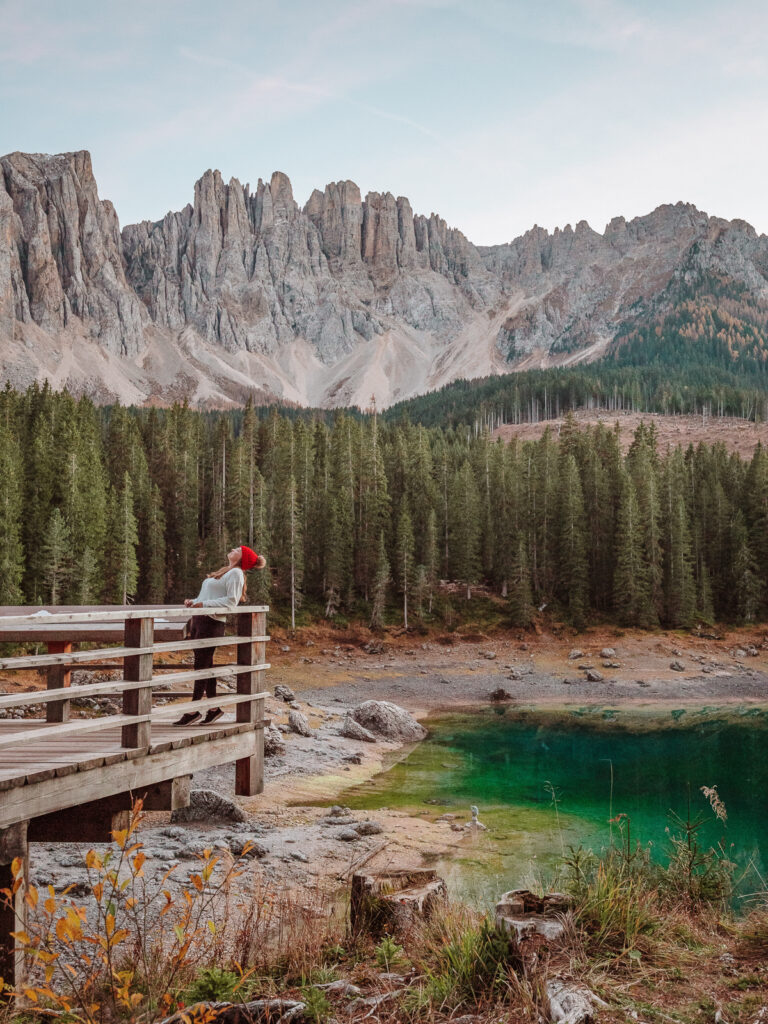
It’s so tiny that you can walk the loop trail in only 20 minutes, making it ideal for travellers who prefer low output/high reward travel (myself included 🙃), and the best viewpoint is literally steps away from the bus stop.
Its effortless accessibility does result in chaotic crowds during the summer months, but I visited at sunset in mid-October and there was hardly anyone around. +1 for shoulder season travel.
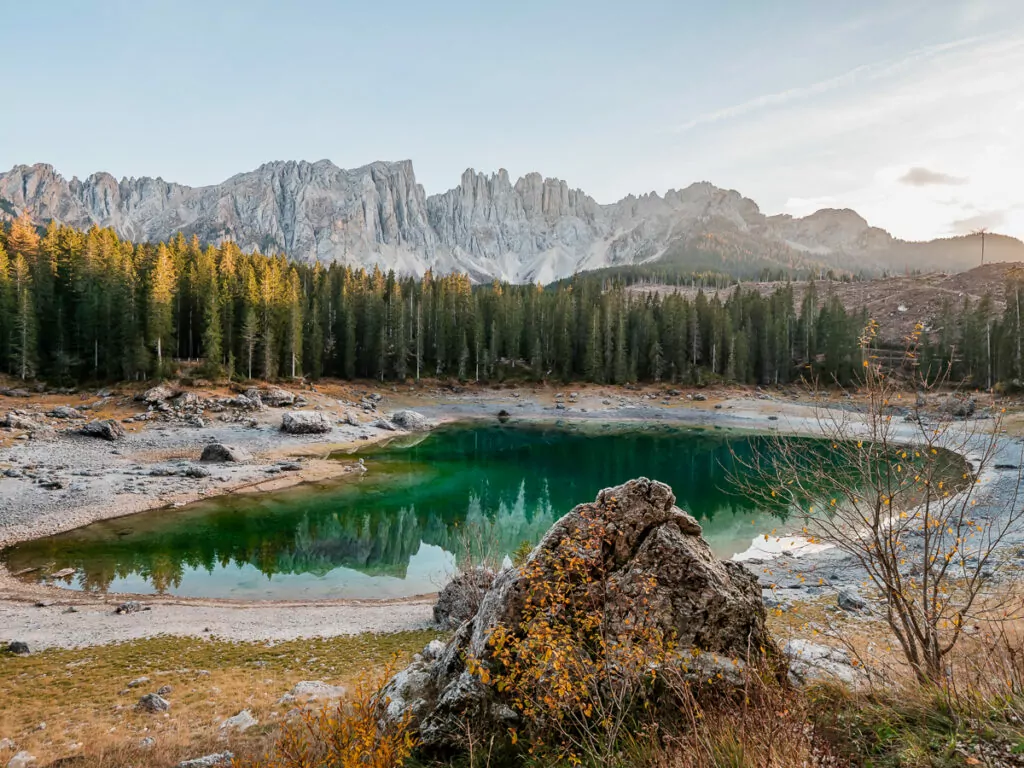
Merano
How to get here: Direct 40-50 minute train from Bolzano, they run frequently
Best known as a luxe spa town for the rich and royals of pre-war Europe, Merano’s a top contender if you want a side of relaxation with your alpine adventures.
It’s less about the mountains here and more about the views right in front of you, with a palm-tree-lined promenade winding along the River Passau, art nouveau buildings around the corner from medieval merchant streets, and the breath-taking botanical gardens of Trauttmansdorff Castle that need to be seen to be believed.
Book a guided tour to discover Merano’s history and culture, or for a cheap and cheerful wellness break you can visit Terme Merano’s pool complex.
For travellers with young ones, or if you’re young at heart, the 1.1km Alpin Bob is Italy’s longest alpine coaster and can be accessed by a bus from Merano + the Merano 2000 cable car, open year-round.
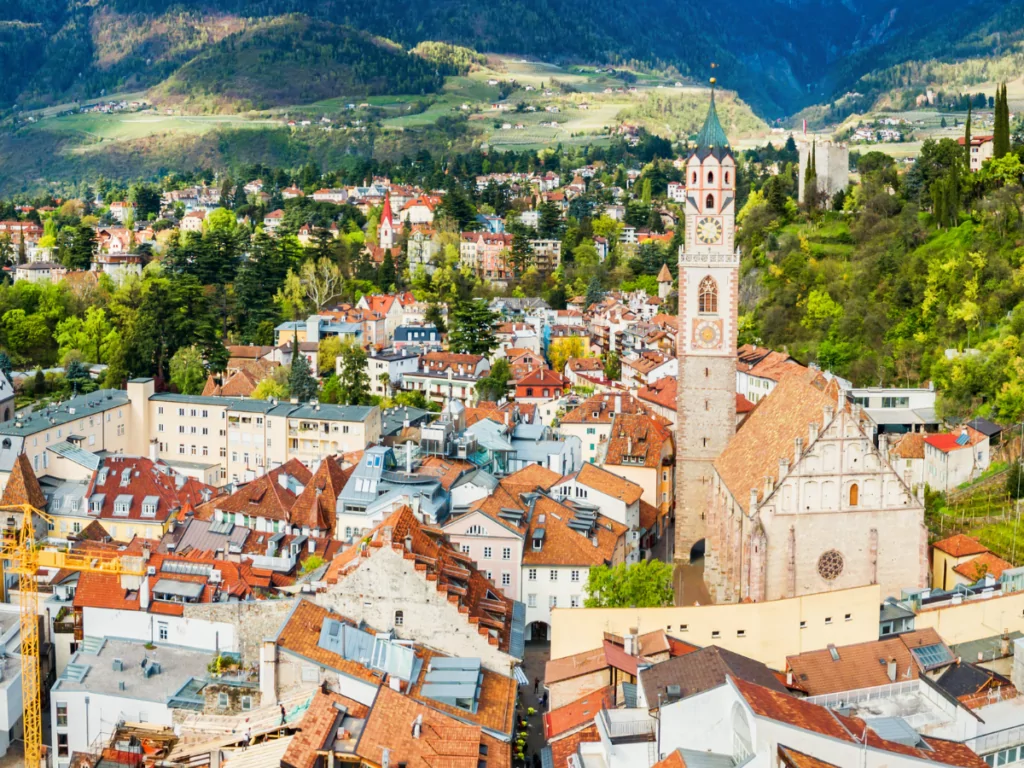
Renon Plateau & the Earth Pyramids
How to get here: Catch the Renon/Ritten cable car to Soprabolzano/Oberbozen, and from there you can take the 117-year-old narrow-gauge railway to Collalbo/Klobenstein (these Italian/German names are making my brain melt 🫠)
This is one of those times where the destination is just as impressive as the journey, with a 12 minute cable car ride to Soprabolzano at 1227m elevation, before switching to the historic Rittner Bahn for an 18 minute journey to Collalbo. Cross your fingers to get one of the super cute vintage carriages!
There are a range of walking trails in the area for different fitness levels, but the most unique sight to see would be the otherworldly Earth Pyramids, a bunch of spiky natural rock formations that stick out of the ground to create a jarring contrast with the rolling plateau. Various paths and viewpoints get you up close but this one is a popular easy option.
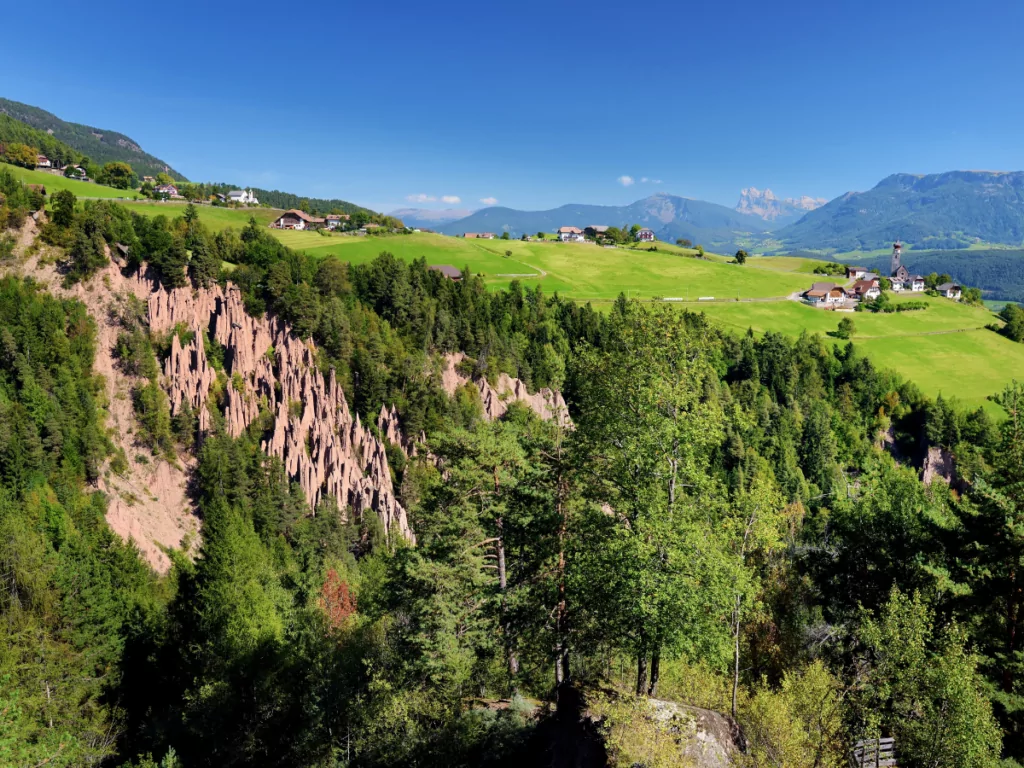
Ortisei/St Ulrich/Urtijëi
How to get here: Bus 350 runs from Bolzano to Ortisei throughout the day, getting you from A to B in just under an hour
Fair warning: This Val Gardena village might just make you cancel your return ticket, I dare you to visit and not fall in love.
It’s the most popular village base in the region for good reason, with cable cars that run like clockwork from the centre of town and outdoor adventures galore on offer year-round. Tourist infrastructure is decent, but you do need to book in advance to get the best chance of sticking to a reasonable budget.
Spend your day working up a sweat on the hiking trails above the valley, or take it easy with a plateau walk and hearty rifugio lunch, before coming back home for a hot pool soak and sunset drink as the sky turns to fire. Teleport me there now, please!
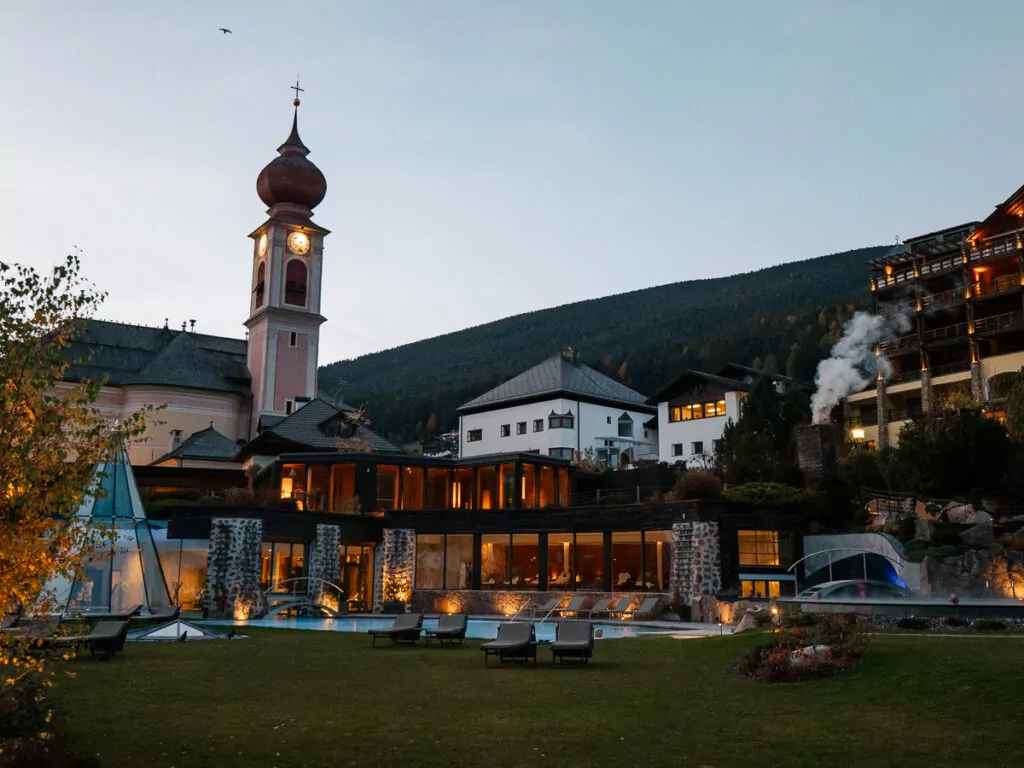
Here are some must-sees, must-dos and must-eats in Ortisei:
- Eat delicious pizza at Turonda 🤌🏼
- Try local South Tyrolean cuisine at Mauriz Keller, Snetonstube or Vedl Mulin Srl
- Treat yourself to a wellness stay at the dreamy ADLER Spa Resort DOLOMITI
- Admire the handiwork of local woodcarving artisans, they’ve been crafting exquisite figurines and ornaments since the 1600s
- Visit Museum Gherdëina if you’re keen to understand the town’s history
- Walk to St Jacob’s Church/Chiesa di San Giacomo, the valley’s oldest church, dating back to the 12th century
- Take a side quest to one of the next four places on this list
The Ortisei information centre is well-equipped to help you plan your time here, pop in if you need any suggestions.
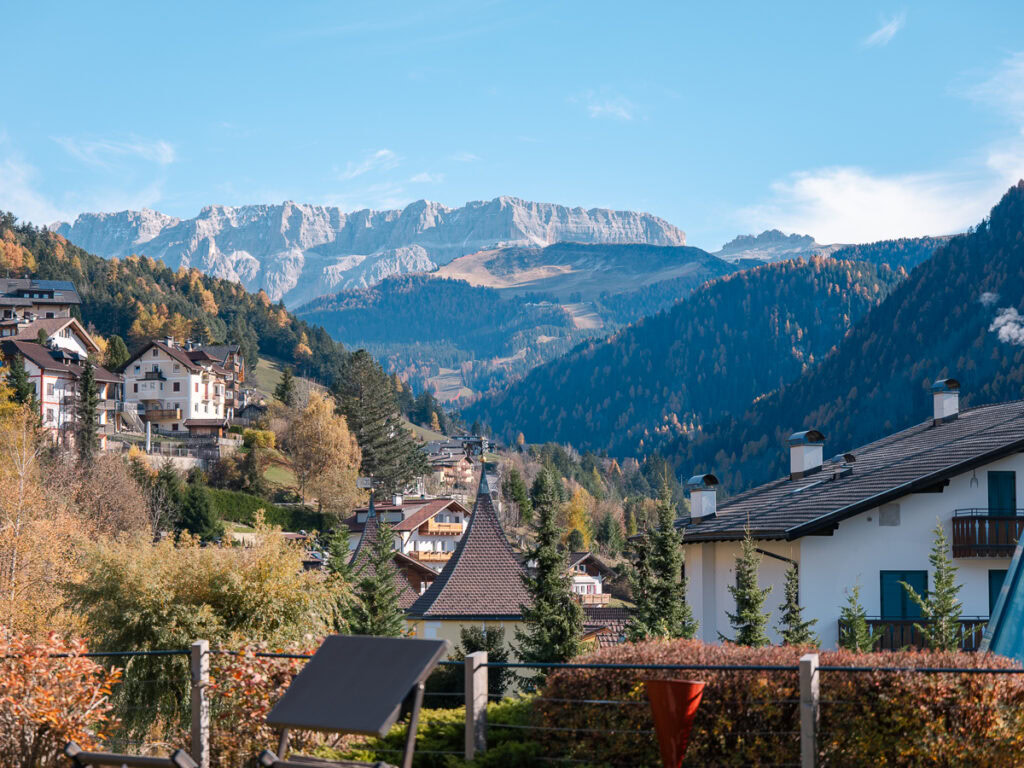
Alpe di Siusi/Mont Seuc/Seiser Alm
How to get here: Okay this is important ⚠️ because there are two main cable cars that service Alpe di Siusi, depending on where you’re coming from and your plans once you get up there. And annoyingly they each have multiple names 🙃
From Ortisei you can take the Ortisei-Alpe di Siusi Ropeway, the station is just a few minutes from Ortisei’s town centre and you’ll reach the top in 8 mins, on the eastern side of the Alpe di Siusi.
The Ortisei-Alpe di Siusi lift has red cars, and it’s also sometimes referred to as Funivia Ortisei, Cable Car Mont Sëuc, Seilbahnen St.Ulrich-Seiser Alm, or Telecabina Ortisei-Alpe di Siusi. You’ll pay €22 for a one way ride or €33 round trip, the winter season is running until 6 April 2025 and the 2025 summer dates aren’t out yet (as of 1 Feb 2025) but it usually opens mid-May. Check here for updates.
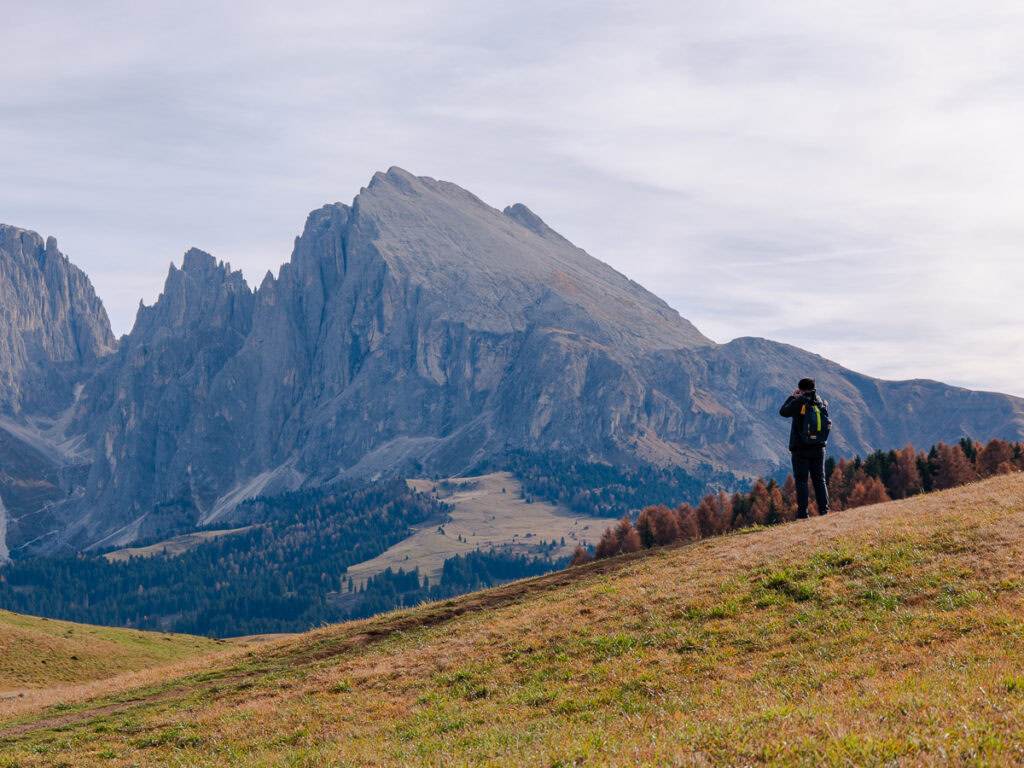
If you’re coming from Bolzano or Castelrotto there is a closer option to you, the Seiser Alm Aerial Cableway which runs from the village of Seis am Schlern/Siusi allo Sciliar up to the village of Compatsch/Compaccio in 15 minutes. You can catch bus 170 from Bolzano which will drop you right by the cable car station in 32 minutes, or from Castelrotto it’s bus 172 (7 mins) or a 40 minute walk.
The lift from Siusi allo Scillar has blue cars, and you might see it being called Alpe di Siusi Cable Car, Cabinovia Alpe di Siusi, Siusi-Seiser Alm Cable Car or Seiser Alm Bahn. In 2025 it’s running until 6 April for winter, then the summer season runs from 23 May to 2 November 2025.

Once you get up to Alpe di Siusi there are smaller chairlifts to transport you to different hotels, mountain huts and villages, read about them here >>
You can also hike from Ortisei to Alpe di Siusi if you wish, or catch one cable car up and then the other back down, and if you’re visiting outside of cable car season there are local buses to Compatsch but it’s best to check with your hotel for up to date info.
Now that we’ve got the logistics out of the way, let me tell you about the magical Alpe di Siusi!

Taking the crown as Europe’s highest alpine meadow, this is where you’ll see the postcard-perfect views that firmly secured the Dolomites as one of the most photogenic places on the planet.
The hills are so vast, the mountains so dramatic, the wooden chalets so rustic, that it’s almost impossible to not skip along the trails and yodel at the top of your lungs.
You can hike and (e-)bike to your heart’s content in summer, from gentle strolls and easy rides to more challenging climbs, or hit the sweeping slopes in winter. There are a bunch of mountain huts serving up rich traditional cuisine or quick snacks for a mid-hike break, some with playgrounds for kids, all with insane views.
But for the ultimate luxury Alpe di Siusi experience, there’s no better option than staying at the exclusive ADLER Lodge ALPE, an all-inclusive 5* alpine retreat that’ll make you feel like you have the entire plateau to yourself.
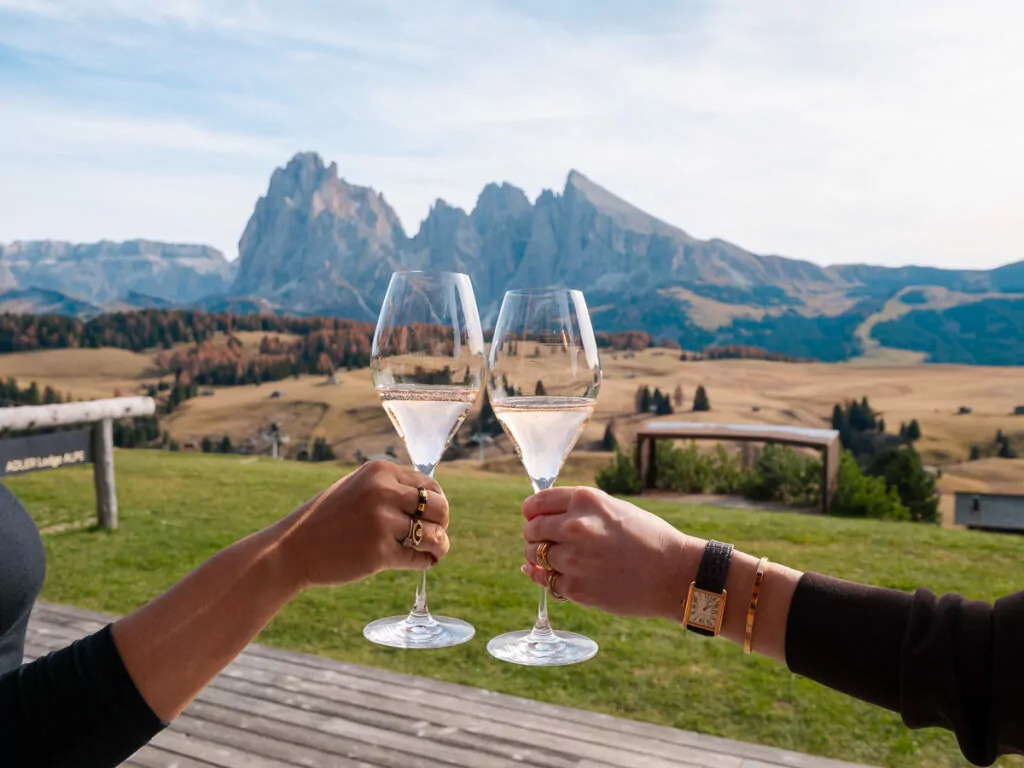
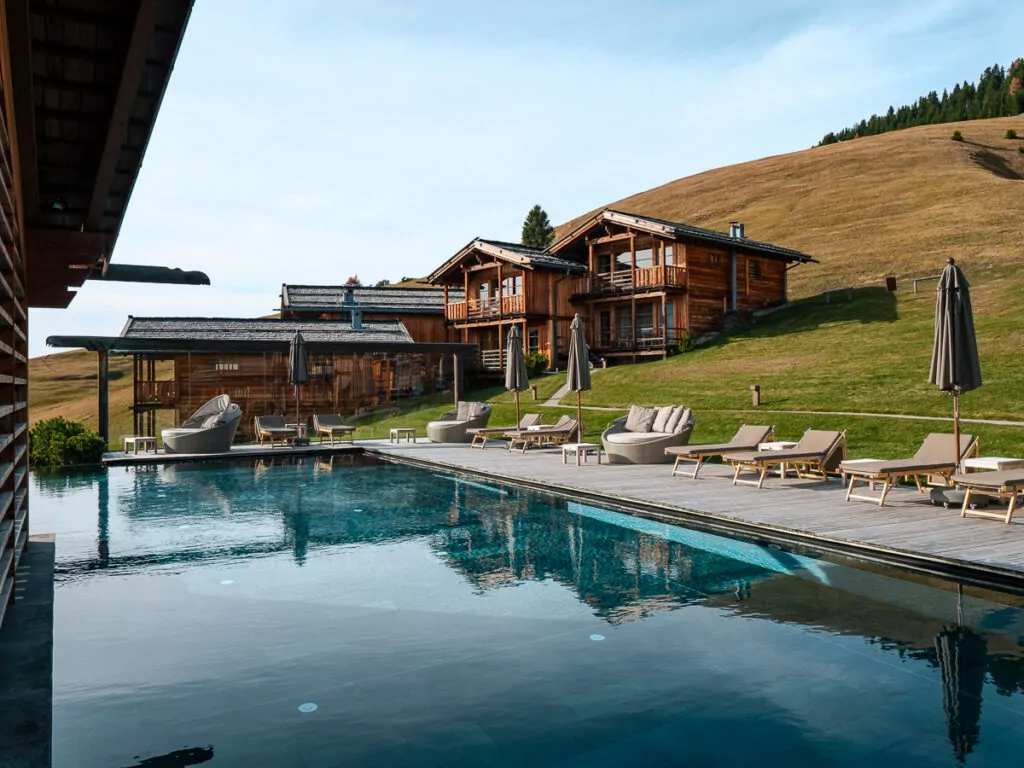
Seceda
How to get here: Double cable car journey from Ortisei which takes less than 20 minutes, the Ortisei-Furnes cableway first and then the Furnes-Seceda cableway. The winter season runs until 6 April 2025, and in summer it’s open from 23 May until 2 November 2025. Find all the info here >>
Another Dolomites destination that exceeds (already lofty) expectations is Seceda, a gnarly 2519m peak in the Puez-Odle Nature Park, famed for its iconic ridgeline which looks like something out of an apocalyptic movie. Where else can you find a grassy wildflower meadow on one side with a craggy, unforgiving rockface on the other?
Non-hikers rejoice, some of the best panoramic views are easily accessible from the cable car station! Minimal effort, maximum reward 👌🏼
But if you are looking for some exercise there’s a multitude of family-friendly walks as well as more challenging trails.
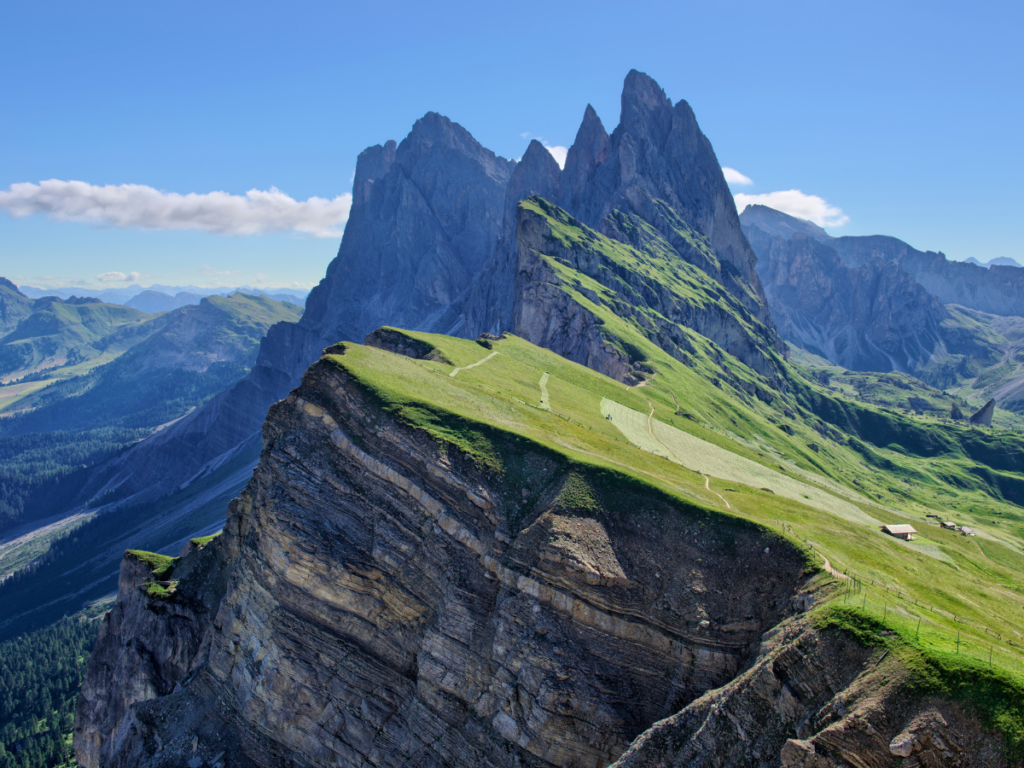
Resciesa/Rasciesa/Raschötz
How to get here: Jump on the modern Resciesa Funicular from Ortisei up to 2200m elevation in 10 minutes, or hike from Ortisei if you’re keen for a cardio session
Though it’s not as well known as the cable cars to Alpe di Siusi and Seceda, the funicular or hiking trails to Resciesa take you through thick forest to reach some of the most underrated trails in the region.
Notable spots are the Rifugio Resciesa (German: Schutzhütte Raschötz) for lunch or an overnight lodge stay, the 18th century Holy Cross Chapel, the summit cross at 2281m, and uninterrupted views of the spectacular Sassolungo.
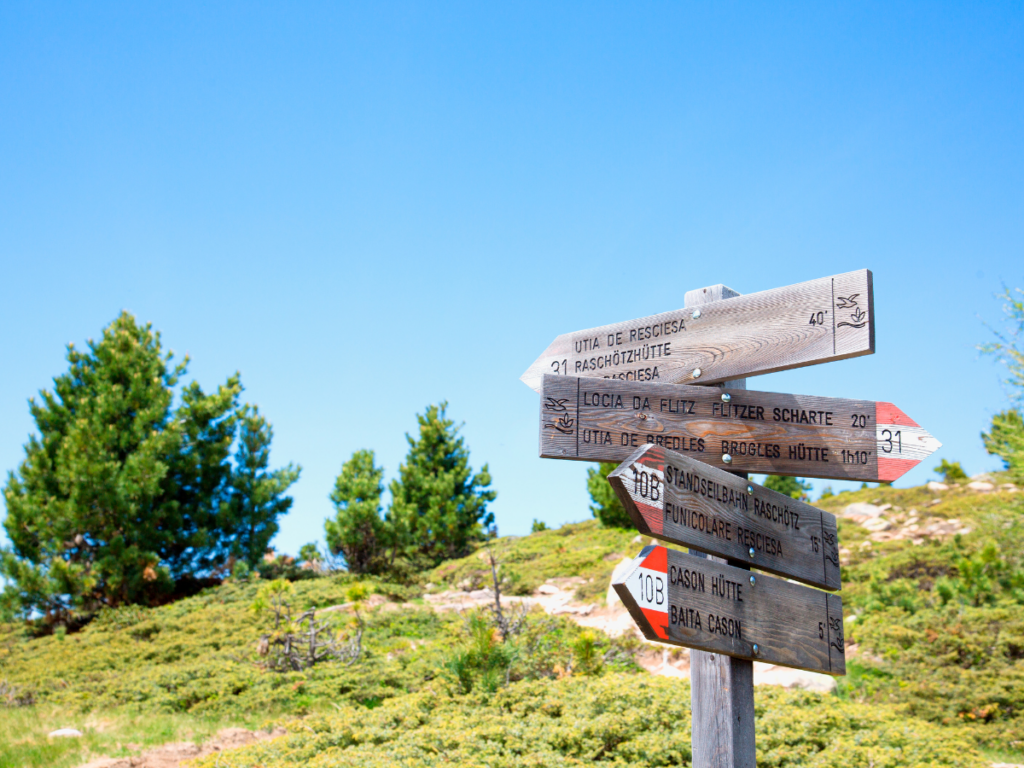
Castelrotto/Kastelruth
How to get here: Catch the 172 bus from Ortisei for 15 minutes, or if you’re coming from Bolzano you can catch the 170 bus for 40 minutes
Castelrotto is an alternative base to Ortisei for your Val Gardena adventures, with fewer but more affordable accommodation options, convenient transport connections and a commitment to preserving local culture and traditions.
Wandering the time-weathered old town feels like you’ve stepped back centuries, and if you’re lucky, your visit might coincide with one of the village’s high-spirited folk music concerts or religious processions.
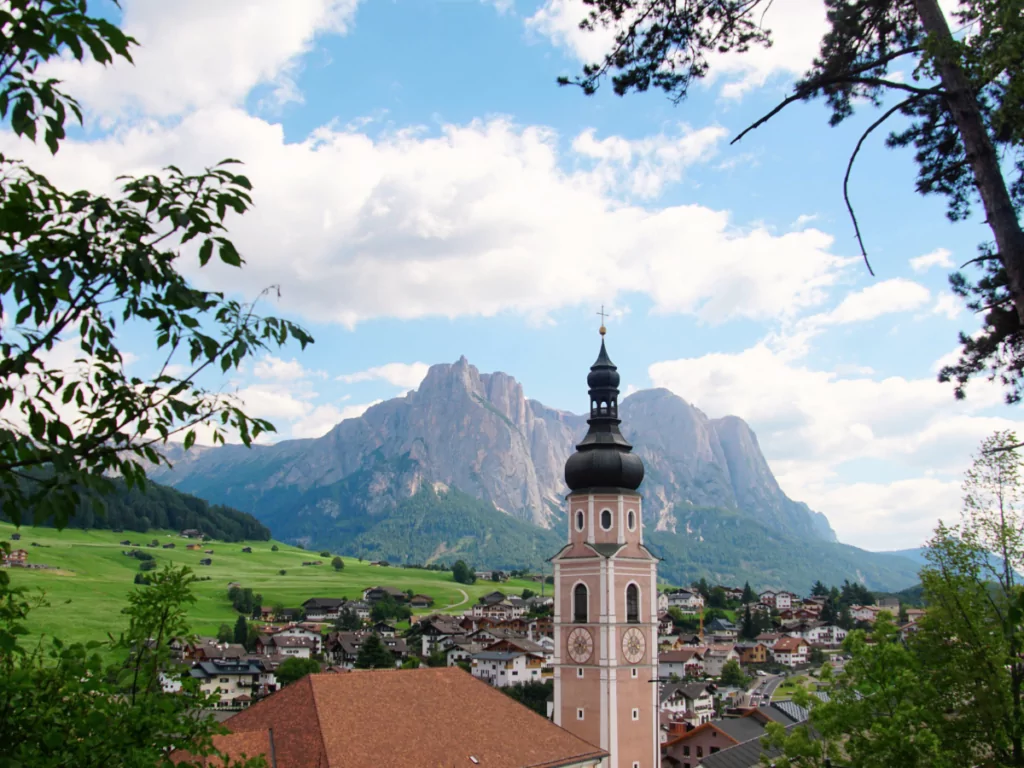
Dobbiaco/Toblach
How to get here: It’s a bit of a trek but it’s worth it.
- From Bolzano you can catch a regional train to Bressanone/Brixen (30m), then a bus to Brunico/Bruneck (50m), then a regional train to Dobbiaco (35m)
- From Ortisei you can catch a bus to Bressanone/Brixen (1h), a bus to Brunico/Bruneck (45m), then a regional train to Dobbiaco (35m)
- If you’re starting your Dolomites trip from the opposite direction then from Cortina d’Ampezzo you can get a direct bus to Dobbiaco in 40m
Sitting pretty in the sun-soaked Val Pusteria, the village of Dobbiaco is the gateway to reaching a few key highlights in the Dolomites without a car: Lago di Braies, Lago di Dobbiaco and the gnarly three peaks of Tre Cime di Lavaredo.
Lago di Dobbiaco is walkable from the village centre (about 4km) or you can get a bus half way and walk the remainder, the perfect option for a semi-rest day between more intense adventures.
In the township itself, be sure to book a meal at Winkelkeller for hearty home-style cooking.

Lago di Braies/Pragser Wildsee
How to get here: Bus 442 from Dobbiaco gets you to the Lago di Braies bus stop in 30 minutes but there are some important things to know:
- Buses run every hour year-round, first departure from Dobbiaco at 8.16am and last departure from Lago di Braies at 7.46pm
- 9 extra buses per day are added from 12 June to 12 October, running on the half hour in the mornings and afternoons (with a break over midday)
- From 10 July to 10 September you must reserve your bus ticket in advance, more info here >> (if it’s not showing a reservation option then reservations aren’t open yet)
- No reservations needed for the rest of the year, just use your Südtirolpass or buy a ticket on the app
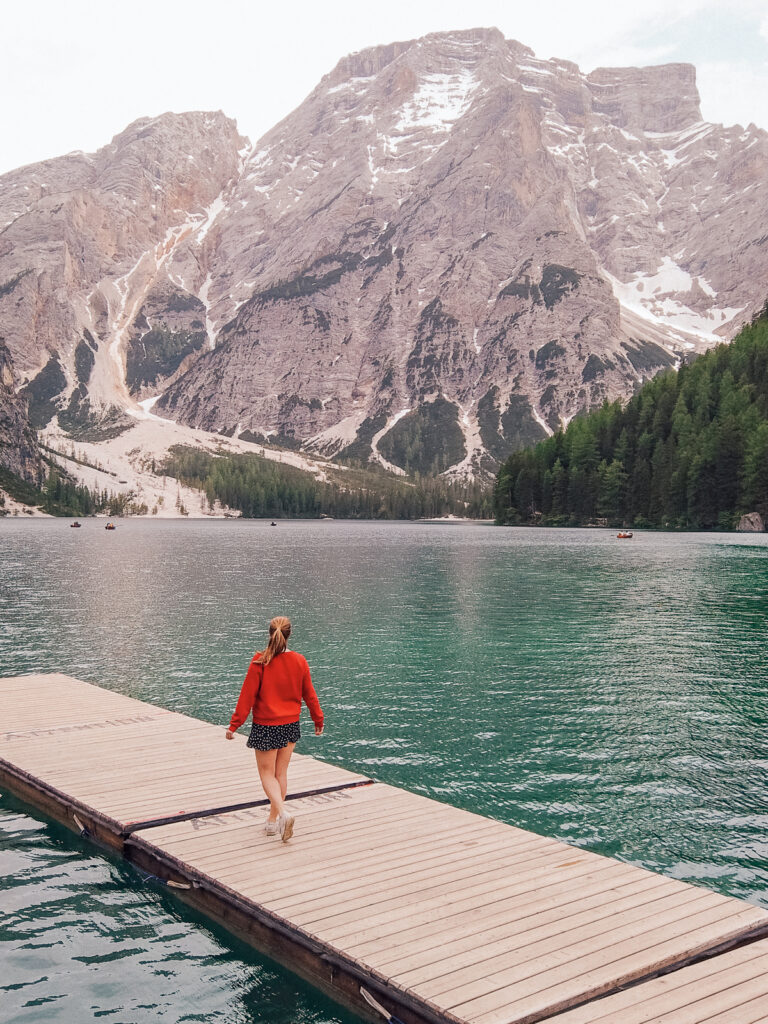
Immortalised on photography calendars and paint-by-numbers kits all over the world, Lago di Braies is instantly recognisable. This is where you’ll find the rustic wooden boats floating by the boathouse and epic mountains reflecting perfectly in the lake. Absolute paradise.
I won’t beat around the bush though, it’s busyyyyyy even in the shoulder season. Photographers park up for their early morning shots pre-sunrise, a steady flow of day-trippers begins as soon as the first bus arrives, and the best vantage points for the Croca del Becco mountain (German: Seekofel) will be crowded all day long.
Walk the loop trail to escape (and avoid adding to) the congregation of tourists, and if you’re in the Dolomites in July and August, I’d seriously consider swapping this one for one of the less accessible lakes for a more pleasant experience.
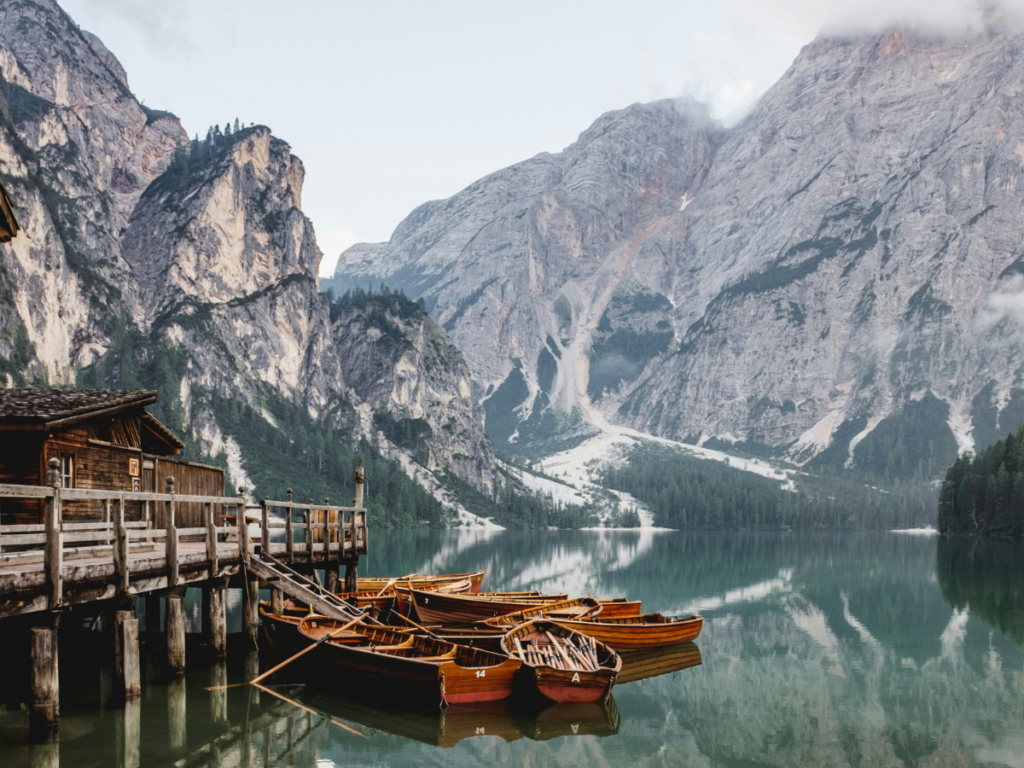
The scale of this scene is so unreal, so I do think it’s worth visiting in the shoulder months as long as you’re prepared for the crowds and do your bit to minimise your impact by:
- Staying on the marked paths, don’t cross barriers for photos
- Taking any rubbish with you and disposing of it back in town
- Pulling up any bad behaviour if you see it
- Respecting local regulations around drone usage (it’s pretty much impossible to get a permit here) and swimming (lots of outdated info on this too, on the official website as of 2025 it clearly states swimming is forbidden)

Boat rental prices go up each year so a lot of online guides are out of date, in 2025 they’re charging 50EUR for 45 minutes in your own boat or 15EUR per person for 45 minutes in a shared boat with other people. You can only book on-site and can’t reserve a boat in advance, more info + their 2025 dates/hours here >>
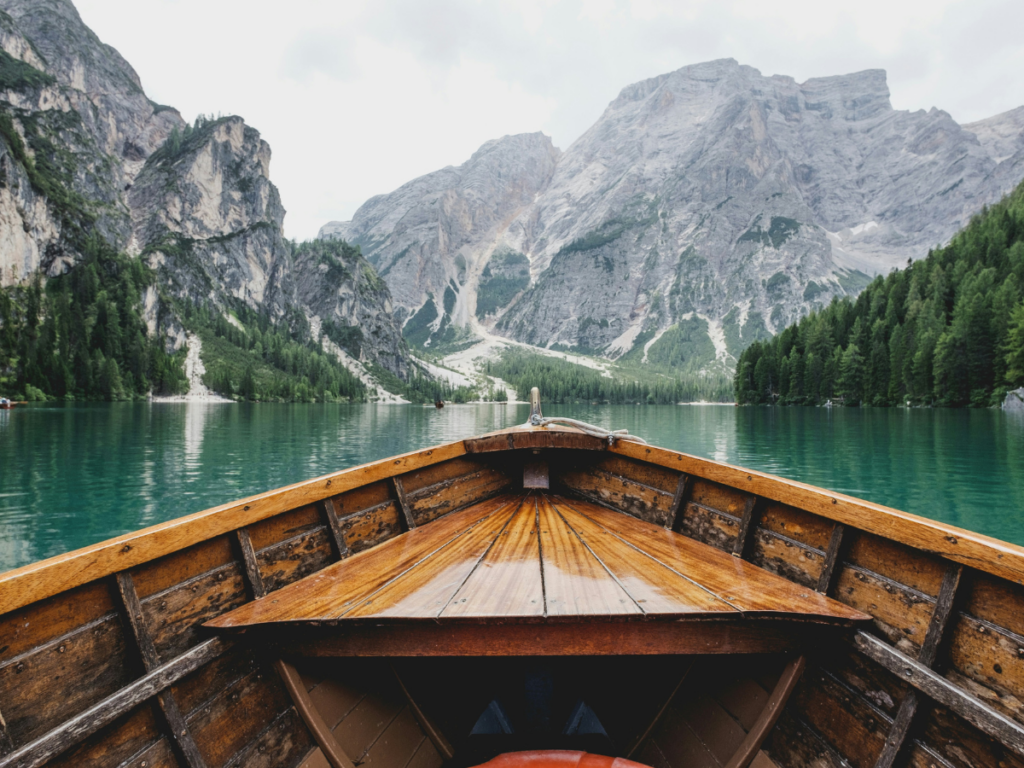
Tre Cime di Lavaredo/Drei Zinnen/Three Peaks
How to get here: The trailhead to Tre Cime di Lavaredo is only accessible by bus in the summer season, easiest from Dobbiaco but doable from Cortina d’Ampezzo.
- From Dobbiaco you can catch shuttle bus 444 directly to Rifugio Auronzo (the trailhead) in just under an hour from 31 May to 12 October 2025. Tickets must be booked in advance, you can read more here >>
- From Cortina d’Ampezzo there’s a seasonal bus route 30/31 with DolomitiBus that gets you to Rifugio Auronzo via Misurina, the timetable for 2025 isn’t out yet but you can keep an eye out for it here >>
With a trio of peaks sitting just slightly sub-3000m (Cima Grande is 2999m, Cima Piccola is 2857m and Cima Ovest is 2973m), Tre Cime di Lavaredo is the premier hiking destination on this side of the Dolomites.
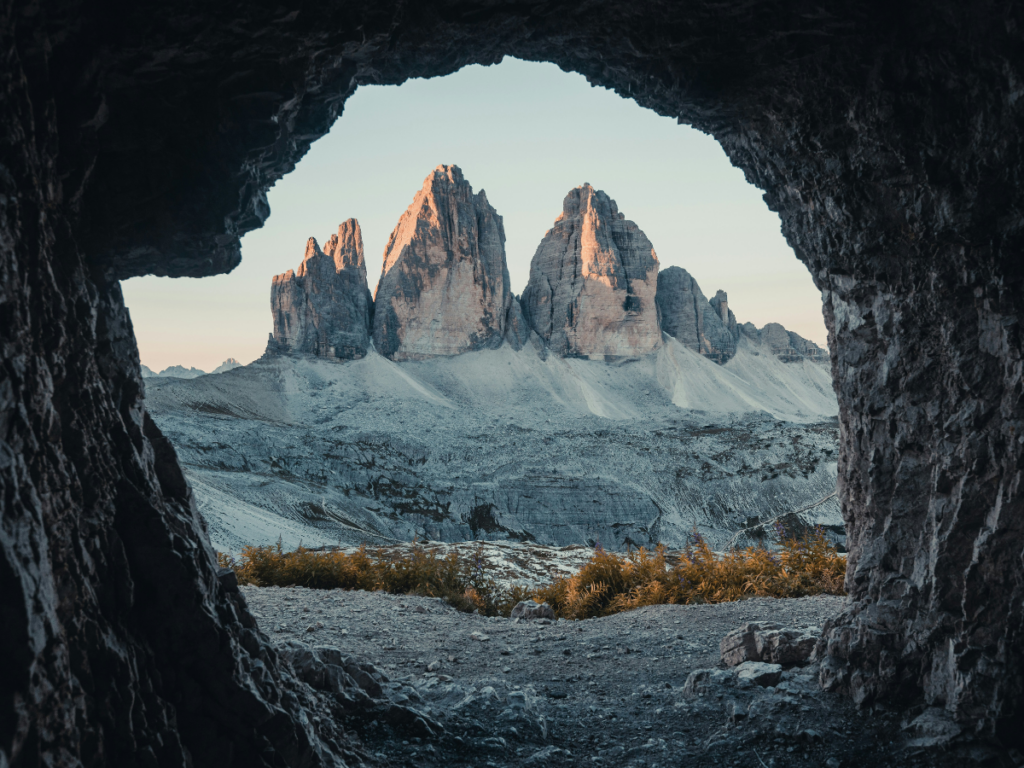
The 10km loop trail is one of the more challenging popular treks for non-hikers, but if you can handle 4-5 hours on your feet with some not-too-steep uphill sections, you’ll be rewarded!
There’s also the option to book a private guide if you’d feel more comfortable with a local, whether you’re a beginner, a family group or want to test your limits.
If you want to split your Tre Cime adventure across two days, or if you just want to experience sunset/sunrise without having to splurge on a private transfer for after-hours transport, consider booking a room at a rifugio for an overnight stay and easy access to the trails the next morning.
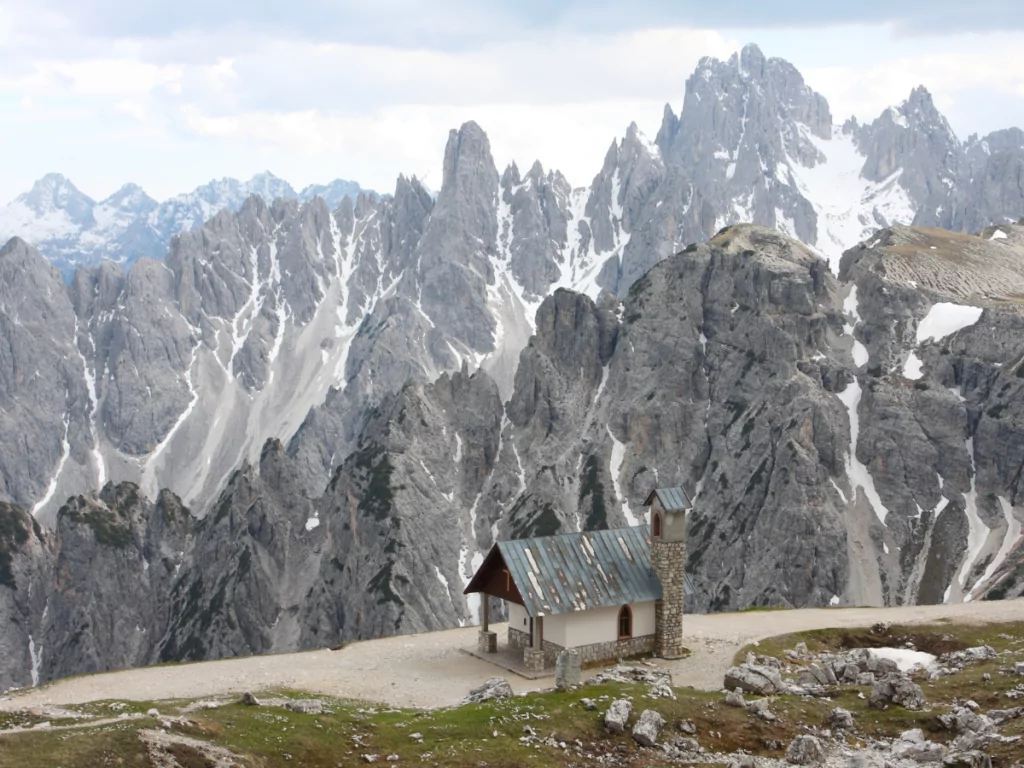
Cadini di Misurina
How to get here: A simple add on to the Tre Cime di Lavaredo hike, 3.4km out-and-back which should take around 60-90 minutes
The perfectly-chiselled Cadini mountain group sits south of Tre Cime di Lavaredo, and the famous ‘Flying Banana’ photo spot is a worthwhile detour before you catch the bus down from Rifugio Auronzo.
For those of you not-so-great with heights then maybe admire the view from behind the line of photographers, because the Instagram-famous location is at the end of a narrow path with unforgivingly-steep rocky cliffs on either side.
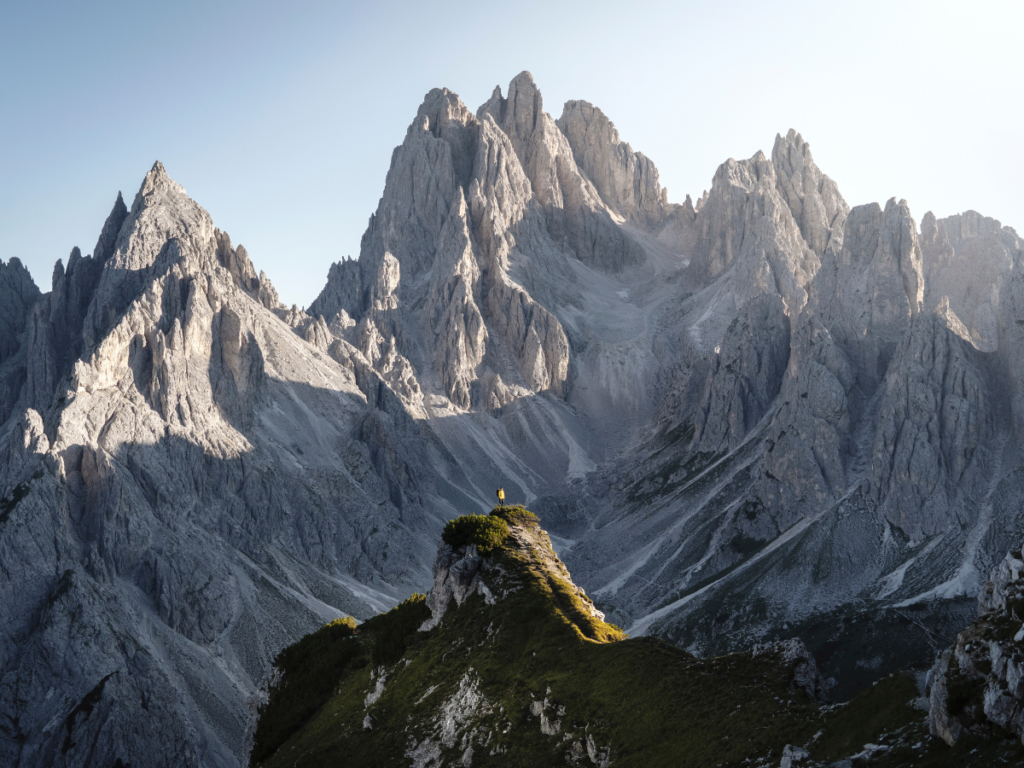
Cortina d’Ampezzo
How to get here: Bus 445 from Dobbiaco will take you to Cortina d’Ampezzo in 40 minutes, and there’s a direct bus to/from Venice in 2 hours if you’re arriving or leaving from there
Cortina d’Ampezzo has long been one of Italy’s premier ski resorts, but with the Dolomites’ exploding on the hiking world stage in the past decade, it’s now popular for holiday-makers year-round.
Accommodation is more expensive here than the Val Gardena towns further west, so I’d recommend using your Cortina d’Ampezzo time wisely to minimise any unnecessary spending. Some good options for day trips are:
- The cable car to Monte Faloria, where you can enjoy lunch with a view at the rifugio or choose one of the hiking trails
- The gondola + double cable car journey to Cima Tofana at 3244m, the third-highest peak in the Dolomites
- The Cinque Torri open-air WWI museum (bus + chairlift, then lots of hikes on offer)
- The 11.4km out-and-back trail to the glacial waters of Lago di Sorapis if you’re a seasoned hiker keen for a physical challenge
- This perfectly-rated guided via ferrata tour suitable for all skill levels
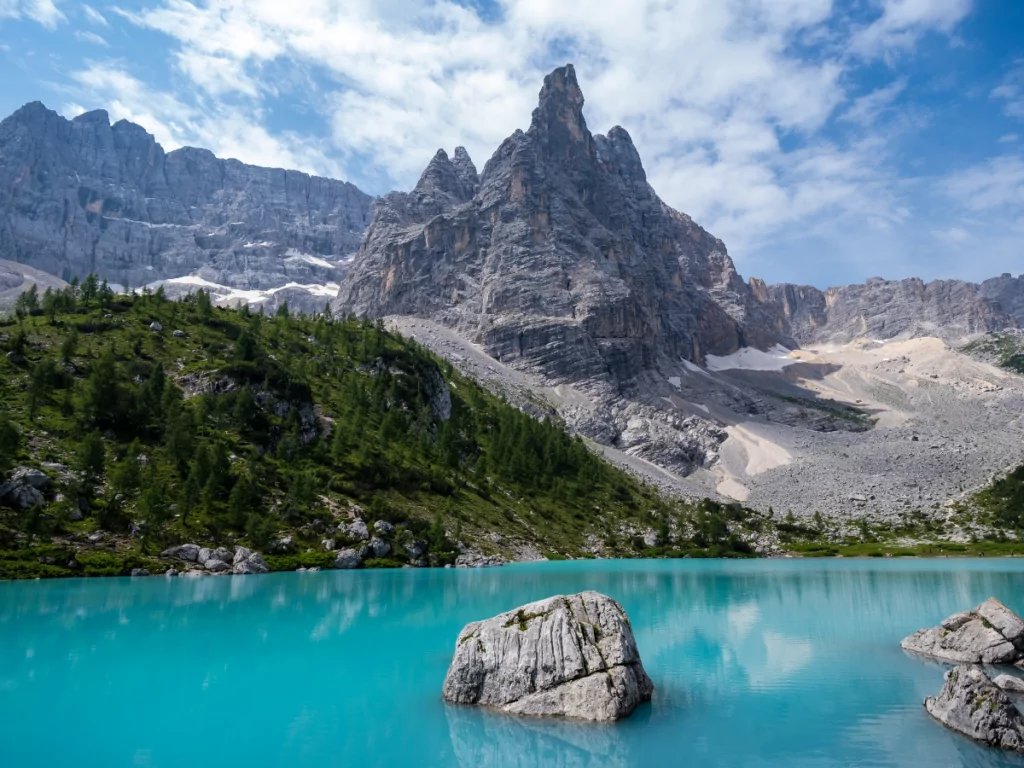
The ultimate 7 day Dolomites itinerary without a car
If you’ve got a week in the Dolomites without a car and you’re up for a whistlestop tour of the mountains and villages, this is my tried-and-true itinerary completely doable by public transport during the cable car season.
Be warned though, it’s all about making the most of your time here and doesn’t leave a huge amount of room for rest and relaxation, so if you’re usually a slower-paced sightseer then you’ll want to give this 10-12 days instead or just choose two or three places to stick to.
Day 1: Bolzano & Lago di Carezza
Catch an early morning flight to Milan or Innsbruck and jump on a train to reach Bolzano (3h and 2h respectively).
Book a hotel near the train or bus station for convenience, check in if you’re able to or ask them to store your luggage while you spend the afternoon visiting your first Dolomites hot spot: Lago di Carezza.
Take bus 180 from Bolzano bus station to Lago di Carezza, it’ll drop you at the bus stop right by the lake in 50 minutes. The bus runs hourly throughout the day, but check the timetable here for exact timings.
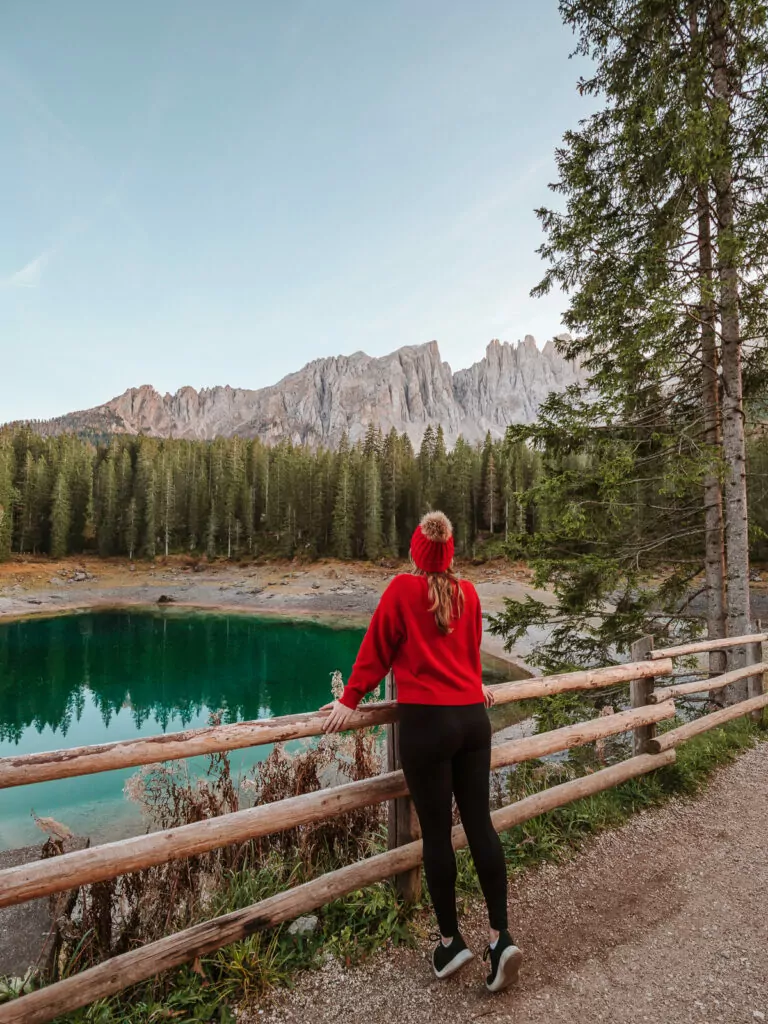
The lake is small so you don’t need much time here, sunset is absolutely stunning for photos but the last bus leaves Lago di Carezza just after 8pm so if you’re visiting in May/June/July you’ll need to head back to Bolzano before dark. If you’re visiting 1.5 months either side of the equinox then you should be in luck with timing, and the alpenglow shining onto the mountains behind the lake is well worth the wait.
Just don’t miss the last bus, or it’ll be an expensive taxi home!
Back in Bolzano stroll through the old town to find somewhere cosy for your first taste of South Tyrolean cuisine, I highly recommend Wirtshaus Vögele for something hearty or my all-time favourites Pasta Lab for creative pasta dishes using local, seasonal produce.
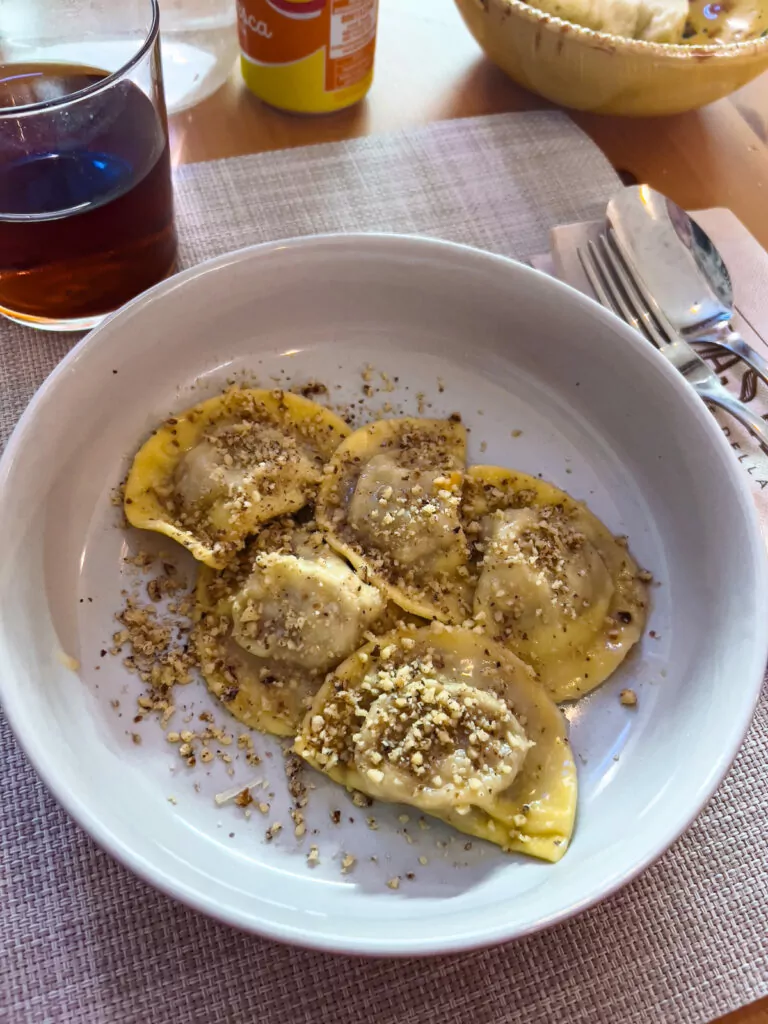
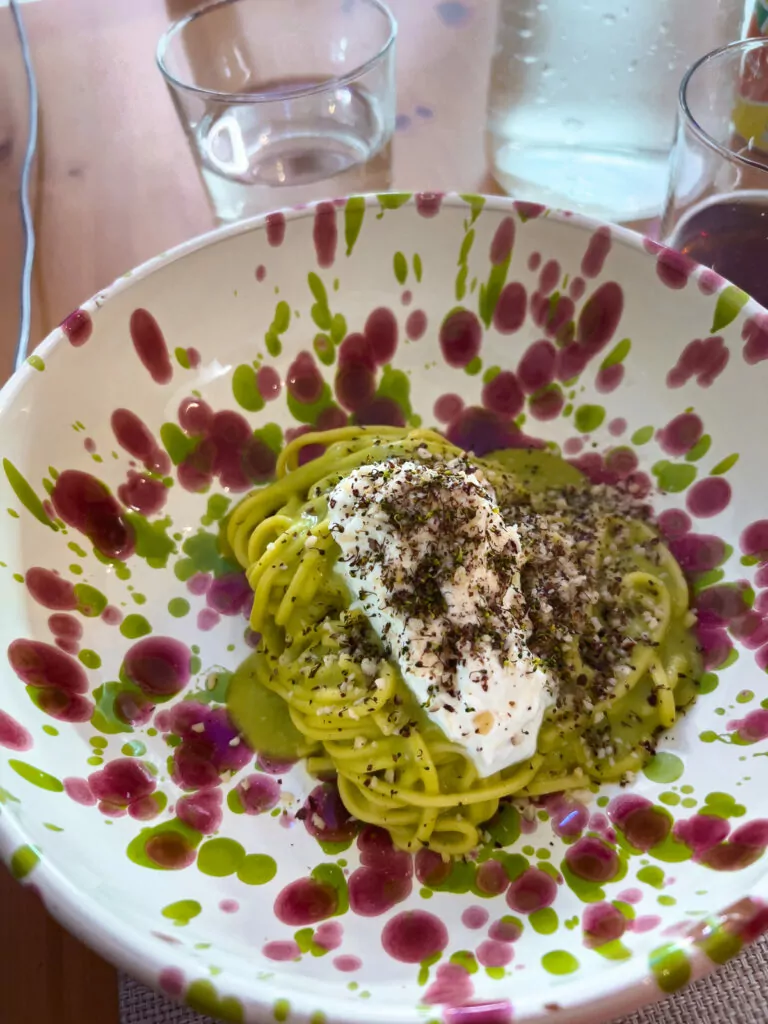
Day 2: Ortisei & Seceda
Check out of your Bolzano hotel after breakfast and take the 350 bus to the centre of Ortisei in under an hour. Drop your bags at your Ortisei hotel and set off for the Seceda cable car, via some local produce stores to put together a DIY picnic.
It’s a 20 minute journey from Ortisei up two cableways to the top, and you only have a short walk from the station to the famed viewpoint of the Seceda Ridgeline. Too easy!
Find a sunny spot on the grass and tuck in to the meats, cheeses and other treats you brought up with you, just be sure to take any rubbish back down to the valley to avoid unnecessary pressure on the mountain infrastructure.
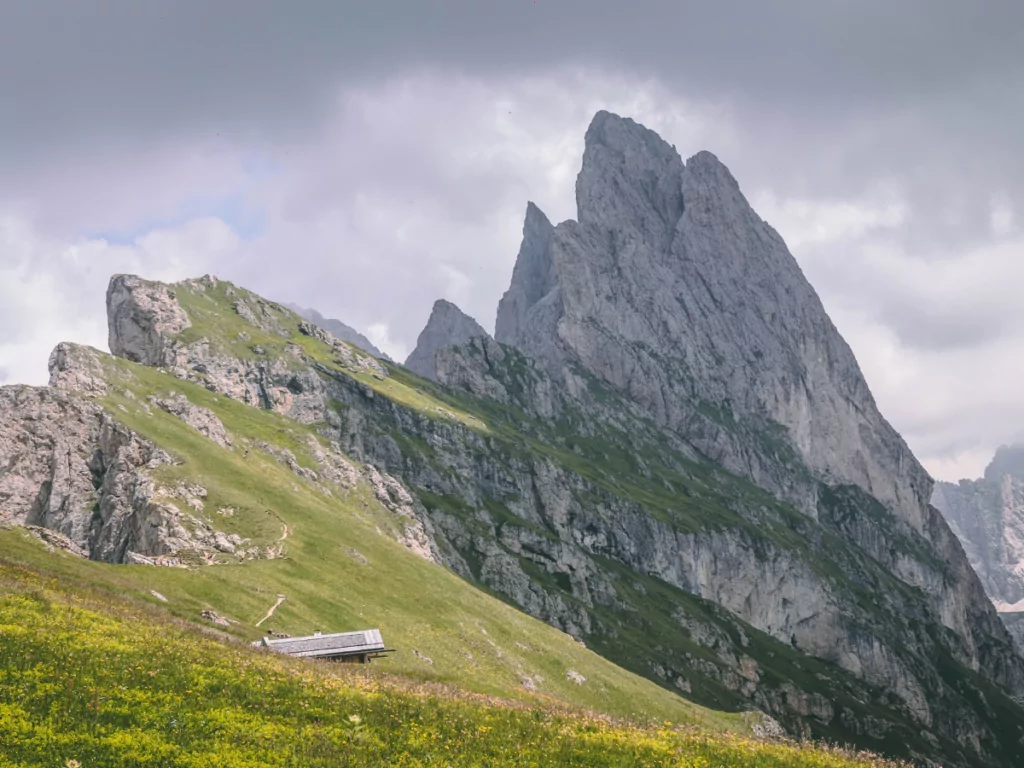
If you’re up for an adventure then you could hit one of the hiking trails, take the scenic route back down to the village on foot, or catch the cable car down and spend your afternoon getting to know charming Ortisei instead.
And if you’ve taken my recommendation and booked a stay at the lush ADLER Spa Resort DOLOMITI, be sure to set aside a decent chunk of time for the wellness area, because it’s huuuge! Don’t miss the weird and wonderful Aufguss sauna session that runs a few times in the evening.
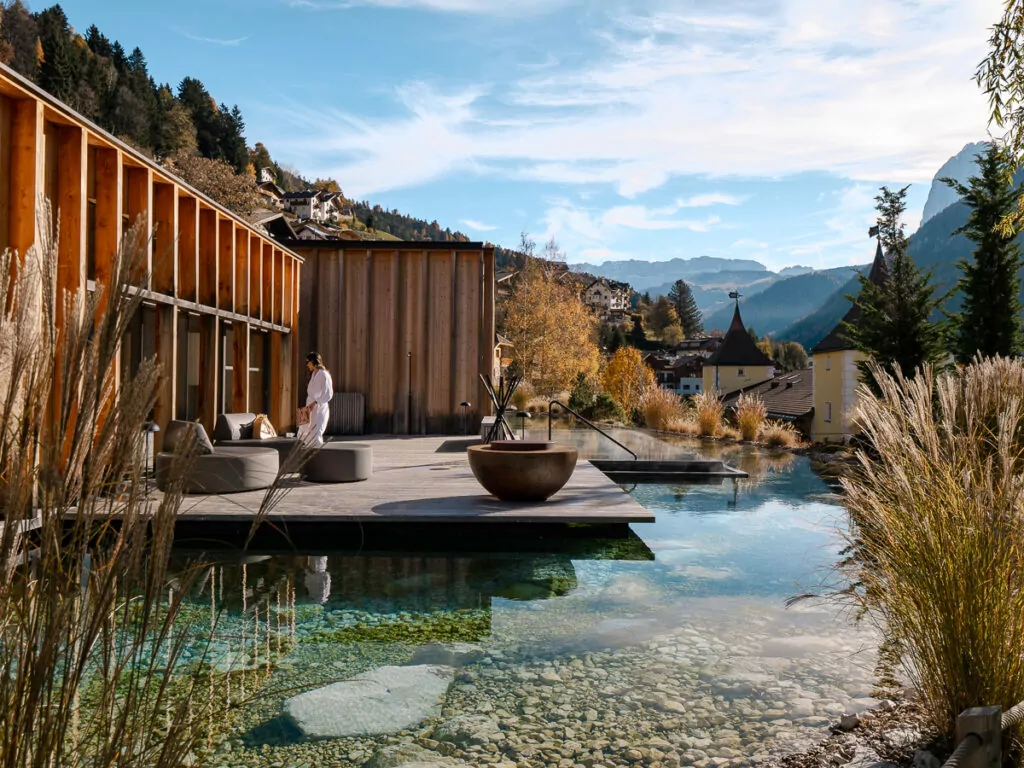
Day 3: Alpe di Siusi
You’ll want to eat a hearty breakfast this morning because it’s going to be a full day up on Alpe di Siusi.
There are a few options here depending on your fitness level and how long you want to spend on your feet, with a variety of well-marked trails for hiking and biking.
You could:
- Take the cable car from Ortisei and then do a loop walk back to the same cable car to come down
- Walk from the Ortisei-Alpe di Siusi red cable car one way to Compatsch to descend on the blue Seiser Alm Aerial Cableway down to Seis am Schlern/Siusi allo Sciliar (and catch bus 172 back to Ortisei)
- Bus from Ortisei to Seis am Schlern to catch the blue Seiser Alm cable car to Compatsch, rent a bike or e-bike, and explore the plateau on two wheels
- Catch the cable car up one way and walk back down to Ortisei at the end
- Hike from Ortisei to Alpe di Siusi, wander for a while, hike back down to Ortisei (various routes available, but expect this to take 2-3h each way + 700-800m elevation gain)
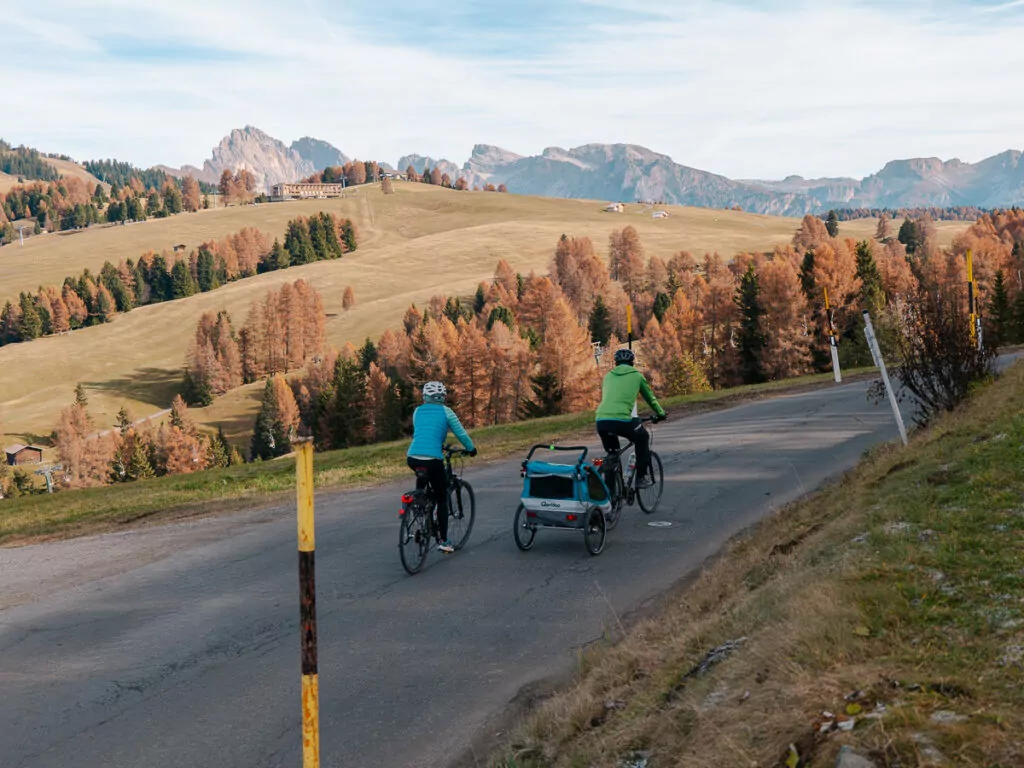
Up on the Alpe di Siusi plateau there are 52km of pathways to choose from, and none of them disappoint. Sweeping meadows dotted with rustic farmhouses, some are still in use by the families that have owned them for generations, with prehistoric peaks lined up along the horizon. I literally couldn’t stop taking photos!
Stop off at one of the mountain huts to refuel, Malga Sanon and Malga Contrin are two top-rated options near the Ortisei-Alpe di Siusi cable car station, or Huber Schwaige is the best-rated restaurant on the Compatsch side.
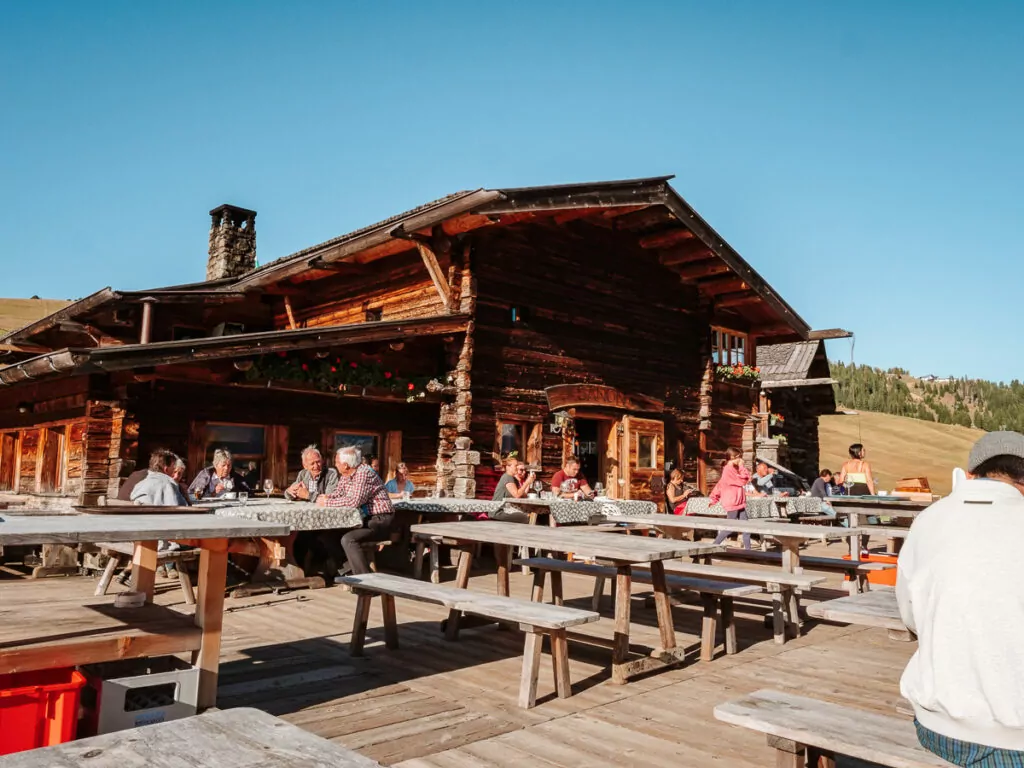
Day 4: Dobbiaco & Lago di Braies
Say goodbye to the Val Gardena because it’s time to zip around the mountains to reach the Val Pusteria.
Check Südtirolmobil for the exact route because there are various bus/train connections to get you to Dobbiaco, but the gist of it is:
- Catch a bus from Ortisei to Bressanone/Brixen (1h)
- Change to a bus from Bressanone/Brixen to Brunico/Bruneck (45m)
- Jump on a regional train from Brunico/Bruneck to Dobbiaco/Toblach (35m)
With time for transport changes, this trip generally takes just less than three hours.
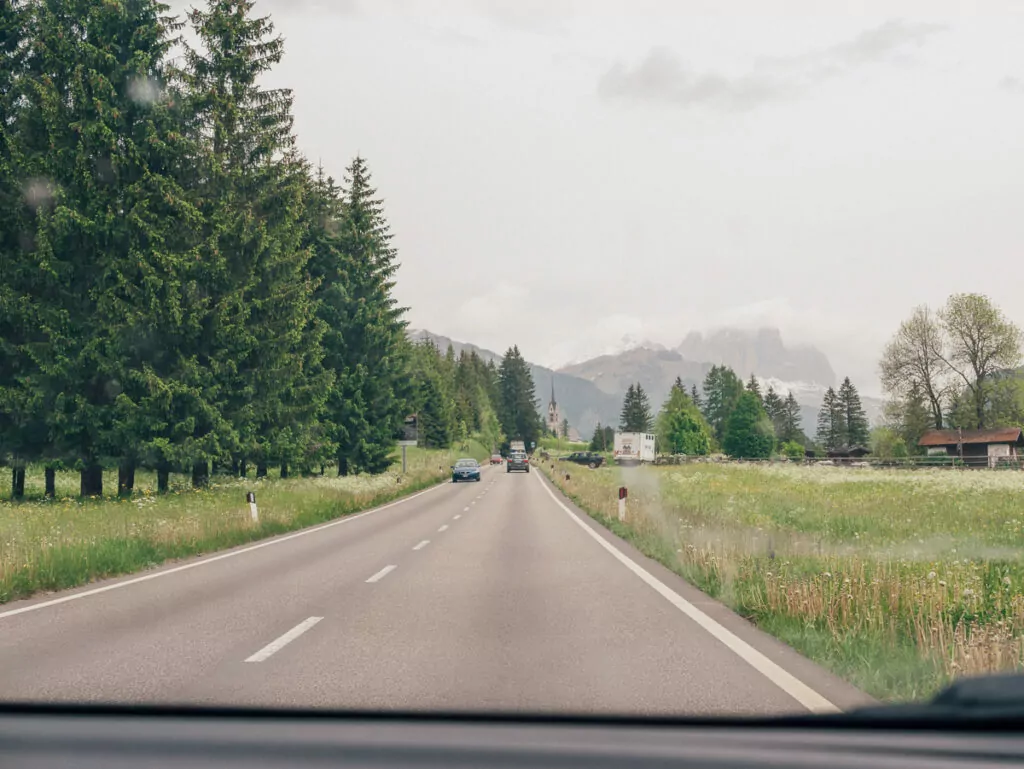
If you left early then I’ll assume you’re in Dobbiaco in time for lunch, in which case Restaurant Winkelkeller, Eirisch Grill and Gasthaus Weber are all worthy contenders for a sit down meal.
After lunch you have a fast-paced option or two slower-paced options:
- If you don’t mind a whirlwind afternoon and want to maximise your sightseeing, you could have a quick lunch, do a return trip to Lago di Braies (30m bus, 1h sightseeing, 30m bus back) and then tack on Lago di Dobbiaco too (walkable from town in 40m).
- If you want to savour the scenery at Lago di Braies you could just stick with this instead, giving yourself time to walk around the lake and stay for the changing colours of the sky in the evening. The restaurants here are sub-par though so bring snacks (and take any trash back out with you). The last bus leaves at 7.46pm to get back to Dobbiaco.
- If you’re not fussed on Lago di Braies (or if bus reservations are booked up), skip it entirely and head to Lago di Dobbiaco from town instead. Stop off at Hans Pizzeria on the way there or back for the best pizza in Val Pusteria!
Keep in mind that buses to Lago di Braies must be booked in advance from 10 July to 10 September but no reservations are needed for the rest of the year, more info here >> (and if it’s not showing any reservation info that’s because they haven’t been released yet).
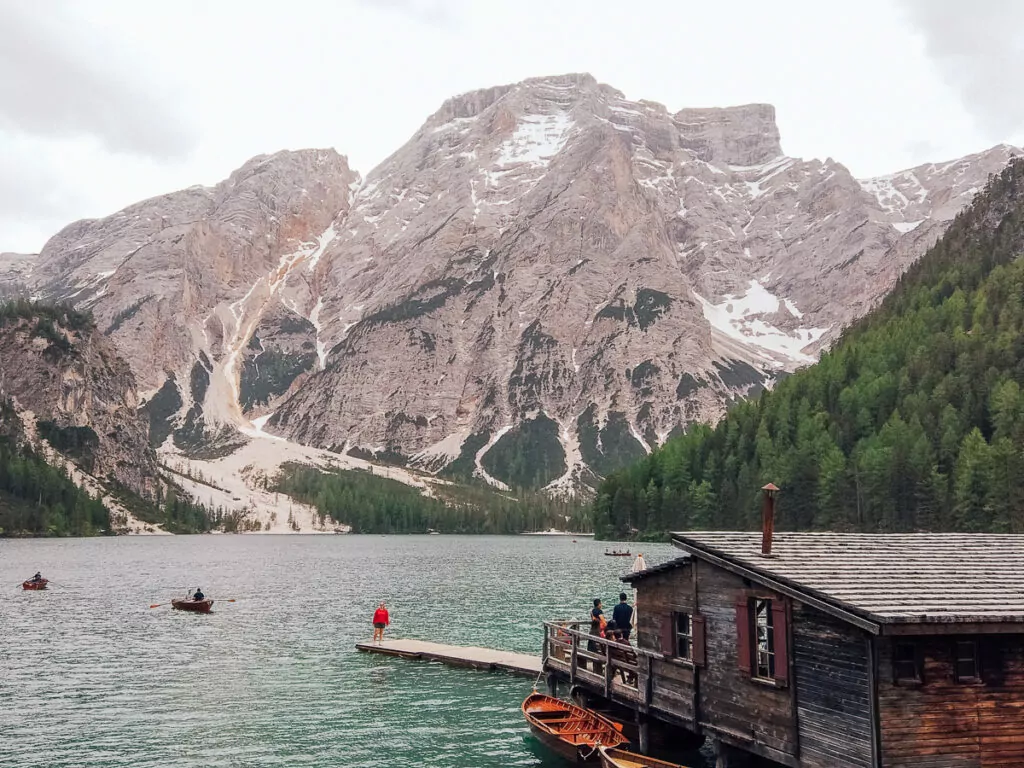
Day 5: Tre Cime di Lavaredo & Cadini di Misurina viewpoint
Note: Only possible by bus from 31 May to 12 October 2025
It’s a big hiking day today 🥾
Ensure your bags are backed the night before because you’re going to want to catch the first 444 bus of the day to Rifugio Auronzo, which departs Dobbiaco bus station at 7.35am. Reservations are essential, more info here >>
You’ll reach the rifugio an hour later to start the 10.1km loop, and I guarantee this will be one of the best hikes of your life. There are side quests to add on and detours to take if you’re up for extra adventure, just know your own limitations.
The main loop generally takes 3-5 hours depending on your speed and how many photos you take on the way, and there are mountain huts serving up traditional alpine cuisine along the way (though they aren’t cheap!).
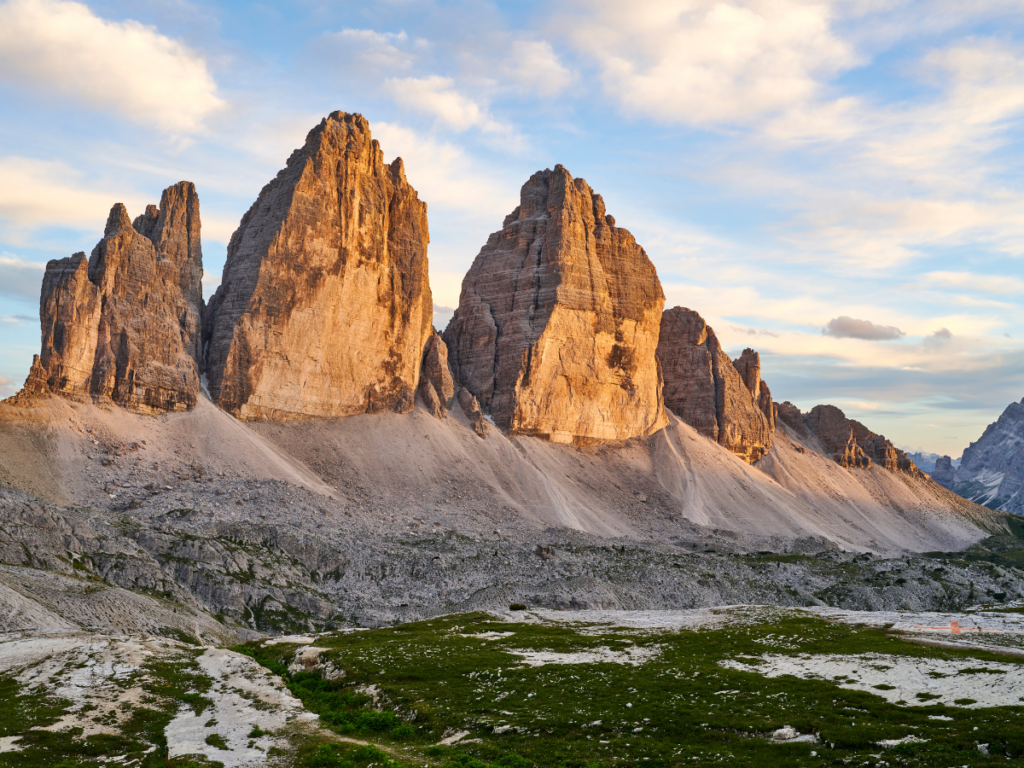
After completing this one you should have plenty of time for the Cadini di Misurina add on, a 3.4km out-and-back trek from Rifugio Auronzo but in the opposite direction to where you’ve just walked. It takes 60-90 minutes but there’s always a line for the Instagram-famous photo spot so buffer extra time for this if it’s a must for you.
If you’re travelling with a group, this private hiking tour is brilliant value and gives you a local guide who can tailor the trek to suit your skill level.
The last bus leaves Rifugio Auronzo at 6.23pm to get back to Dobbiaco at 7.10pm (check the schedule here in case those times change).
🥵 Not a hiker and not sure if this is right for you? The Tre Cime loop is not a technically-difficult hike if you stick to the well-maintained trail, but it is a fair distance with no shade and uphill/downhill sections. If you’re of a moderate fitness level you’ll be fine even if you’re not a hiker, just stay hydrated and take it easy, but if you have accessibility limitations or struggle with long days on your feet then it might be best for you to skip this one.
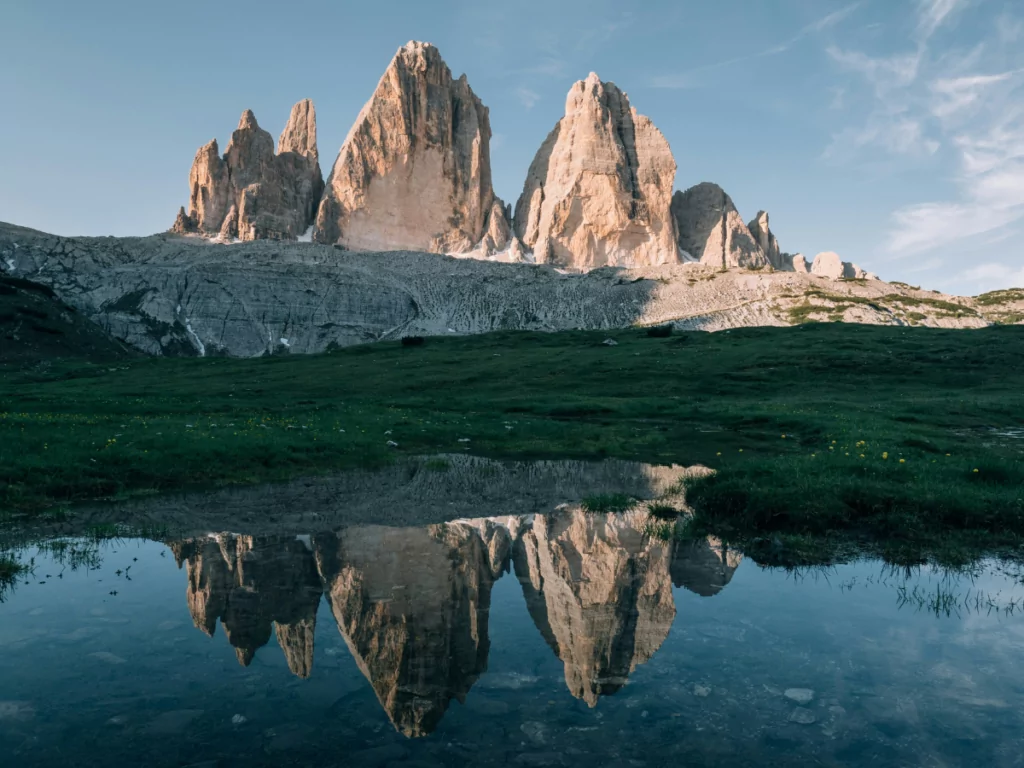
Day 6: Cortina d’Ampezzo & hike of your choice
You’ll wrap up your car-free Dolomites trip with a stay in Cortina d’Ampezzo, a deservedly popular ski resort in winter and a springboard for plenty of summer adventures too.
Catch bus 445 from Dobbiaco for 40 minutes, check in to your hotel/drop your bags, and then choose what tickles your fancy from the following:
- Take the cable car to Mount Faloria for hiking, biking or just a bite to eat at the panoramic terrace of the rifugio
- Head up to the third-highest peak in the Dolomites, Cima Tofana, at an impressive 3244m elevation. One gondola, two cable cars, priceless views.
- Catch a bus to the Falzarego Pass and then jump on the chairlift to the Cinque Torri area for lots of easy hiking options and an open-air WWI museum
- Experienced hikers should consider hiking to Lago di Sorapis, widely regarded as one of the most scenic spots in the whole of the Dolomites. There are a few different routes, all challenging.
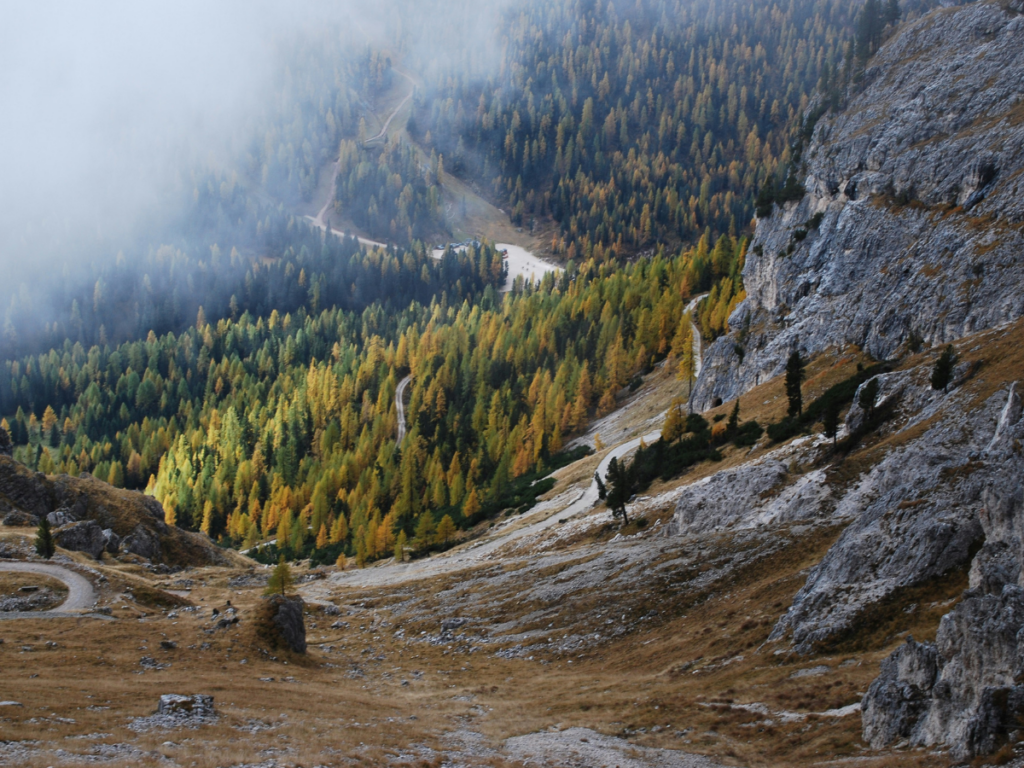
Day 7: Depart from Cortina d’Ampezzo
And that’s a wrap!
If you’re flying out of Venice you can catch a direct bus from Cortina d’Ampezzo to Venice Airport, otherwise your best option would be to bus to Venice Mestre station and then train to Verona, Milan or wherever you’re leaving from.
Top travel tips for the Dolomites without a car
Book in advance
The Dolomites are well and truly beyond ‘hidden gem’ status, and things get booked up months in advance!
Affordable accommodation exists in places like Bolzano, Ortisei and Dobbiaco, but rooms at the good value places (i.e. budget-friendly but still decent) get snapped up early. Book a hotel within your budget as soon as you know your travel dates, even if you book somewhere with free cancellation to keep your options open for changes closer to your trip.
If you have your eye on a particular bucket list stay (I’m looking at you, ADLER RITTEN…) then you’ll need to get onto it months before your trip, because the fancy lodges and resorts are pretty much guaranteed to be full over the warmer months.
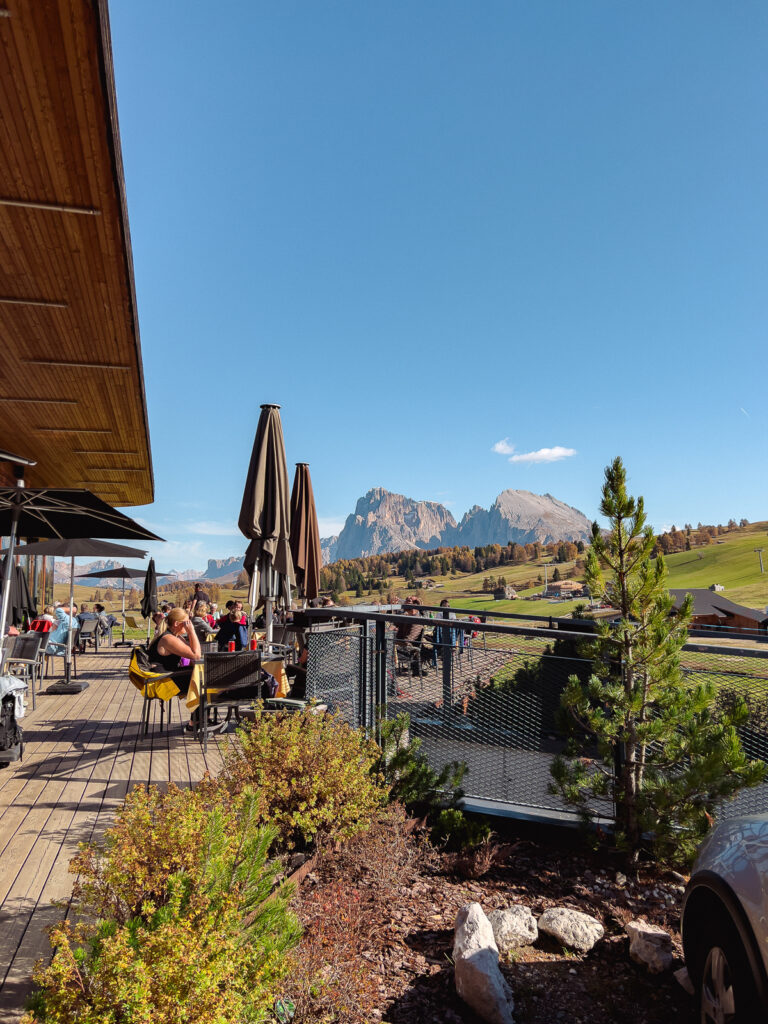
Be realistic with your plans
Public transport here is pretty reliable and easy to navigate, but many routes to popular tourist locations or trailheads only run once an hour (with some additional buses in summer).
This just means you need to plan out your movements in advance, understand how long it’s likely to take you to get from A to B, and leave buffer time in case of any delays.
The itinerary I’ve given you is based on my own travel style which is fast-paced, I’m solo with no kids to wrangle or anyone else to consider, so if that speed doesn’t suit you then by all means slow it down and plan out a more realistic and enjoyable pace for you.
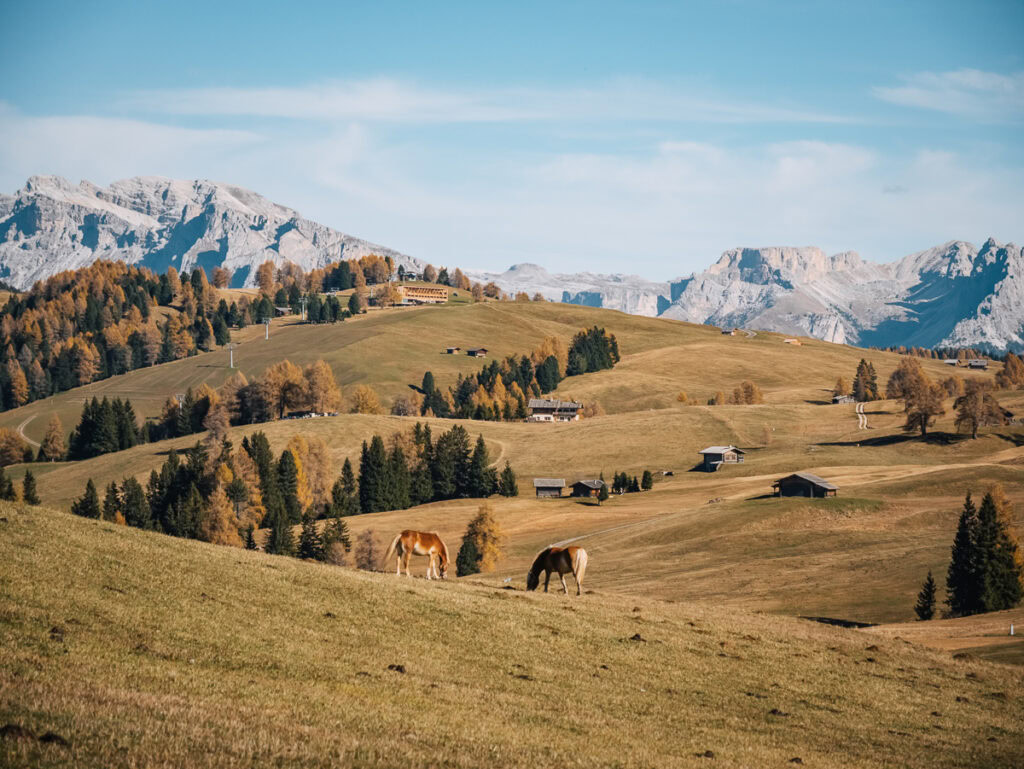
Be prepared for weather changes
While many parts of the Dolomites are known for their year-round sun (Alpe di Siusi gets 300 sunny days a year!), alpine weather can change quickly and without warning, so it’s vital to be prepared with warm layers and a decent weatherproof jacket just in case.
The same goes in the cooler months though, wear something light underneath your warm gear so you can de-layer if you get too hot.
And always, always, always take a water bottle to stay hydrated.
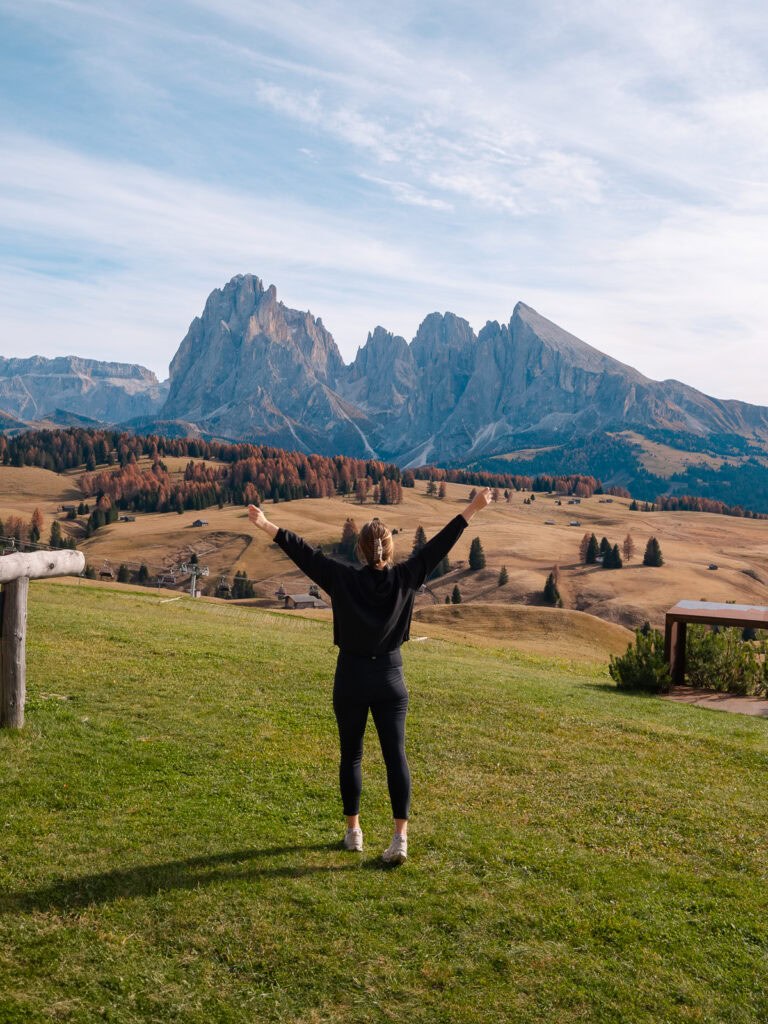
Shoulder seasons are the sweet spot
Mid-May through to late June + early September to mid-October are the dream months in the Dolomites, when summer transport schedules are running but before/after the July/August peak.
If you visit before mid-May or after mid-October then you’ll be able to enjoy the sights without so many people around, but cable cars and some shuttle buses won’t be operating at all, with other buses probably running on a less frequent schedule. For hikers happy to walk to trailheads, or if you just want a mountain spa break rather than going on alpine excursions, you’ll get good value for money!
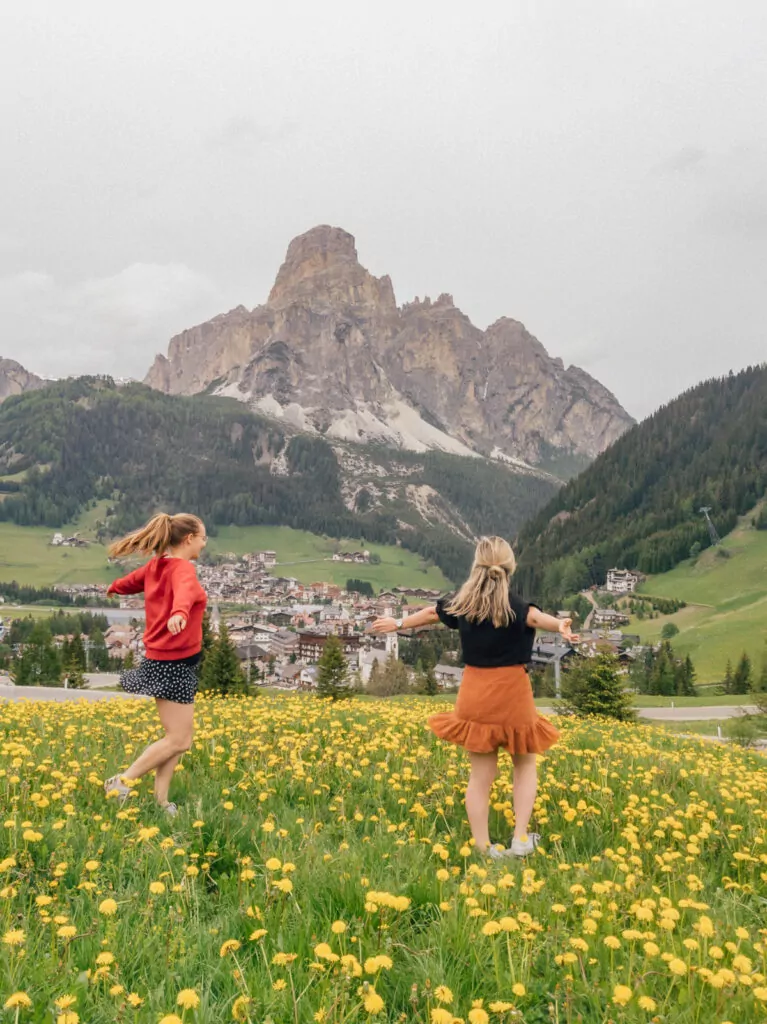
July and August really, really, really should be avoided if you can help it, it is so wildly busy here that the crowds and prices unfortunately do impact your experience.
If you can’t avoid these months because of your job or family then I’d recommend staying longer (less pressure to see so much in a short period), making your plans months in advance so you’re not caught out with last minute prices, and considering staying at mountain huts so you can access the hiking trails right up until dark + in the early morning rather than being reliant on the first cable car to bring you up with all the other tourists.

Not a hiker? No problem.
You don’t need to be an experienced hiker to enjoy the Dolomites, and I say that as someone with knees well beyond my years + a very heavy camera bag! I’m not embarrassed to admit that I prefer a high reward-to-effort ratio 🙃 gimme a cable car to a viewpoint over a four hour uphill slog any day.
One of the best things about these mountains is that there are panoramic vistas and iconic scenes easily accessed without too much exertion, so if you have accessibility limitations, time restrictions or just aren’t comfortable exploring solo, you can still see a lot of the highlights.
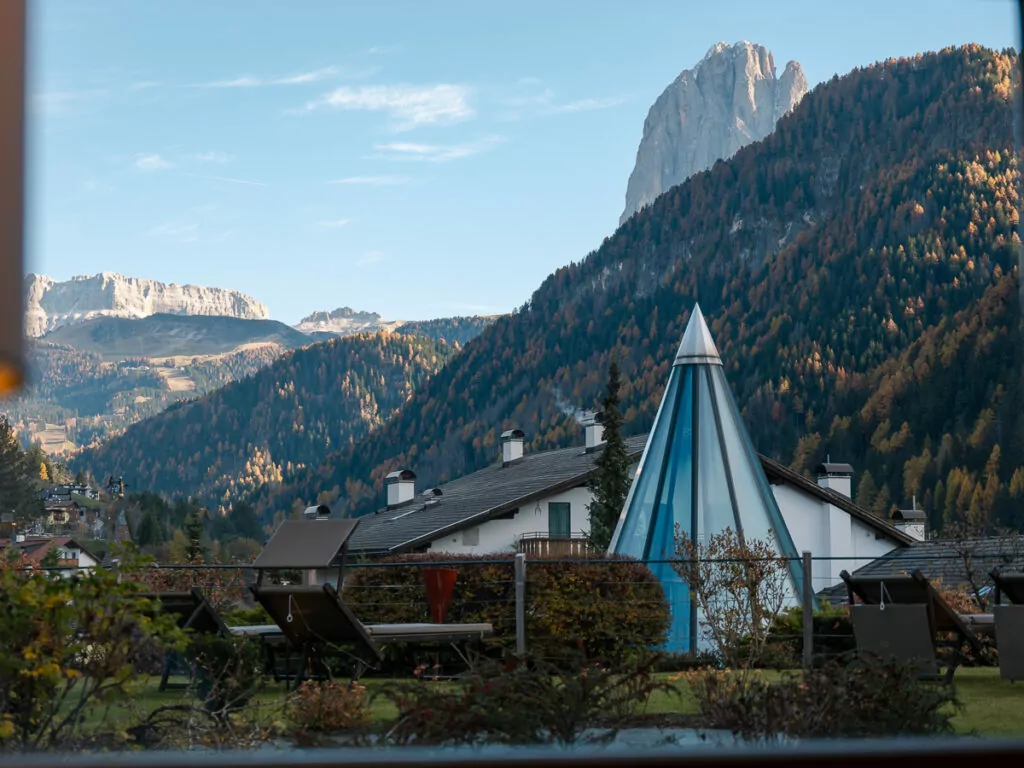
Know your hiking limits
But for those of you keen to lace up your boots and take to the trails, the most important thing is to know your personal limits.
Research the hikes beforehand so you pick the one that suits your fitness and skill level, stick to the marked trails, and if something feels sketchy, turn back. These mountains are unforgiving, and sadly there are injuries and deaths every year.
If you’re visiting the Dolomites solo like I did, keep to the family-friendly non-dangerous pathways in the Alpe di Siusi or other plateaus, rather than tackling rocky walks with uneven terrain, or alternatively book a guided hike (your hotel will be able to organise these) or a via ferrata climbing tour.
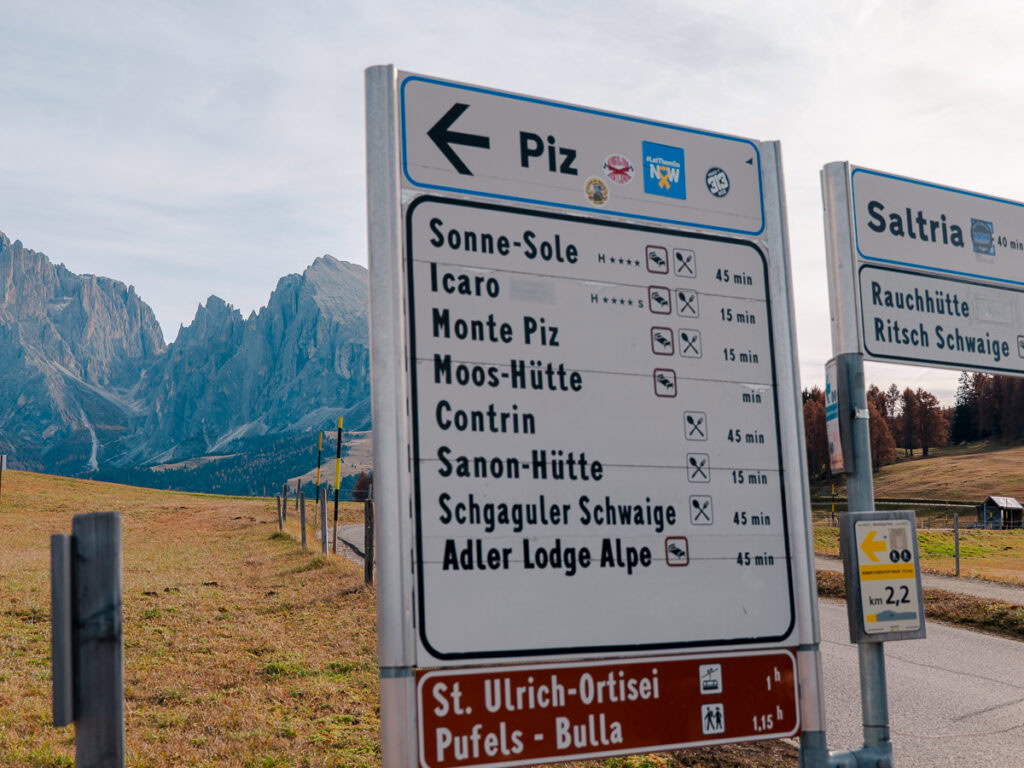
Don’t miss the last bus or cable car
I need to really drum this one in, but do not miss the last trip home! Or you risk being stuck with a long walk in the dark or a very expensive taxi.
Bus timetables depend on the route and season, but most buses servicing trailheads and tourist areas tend to finish up between 6.30pm and 8pm in the summer months.
Cable car operators have their own schedules too, mostly taking the last bunch of travellers down from the mountains/meadows between 5-6.30pm.
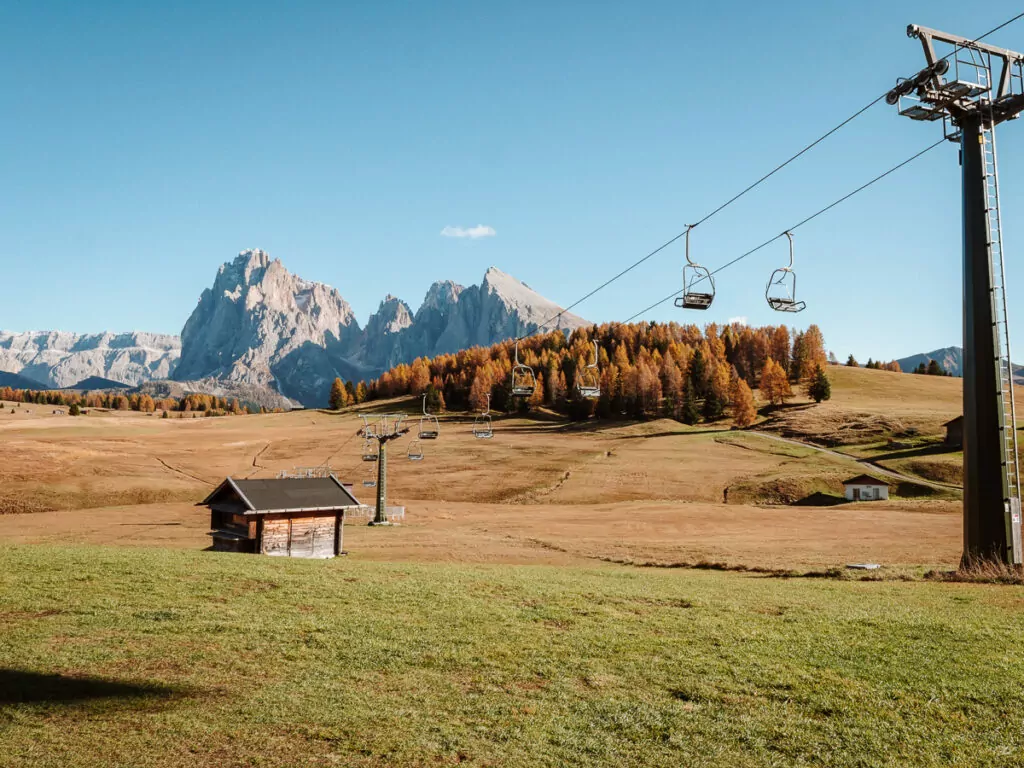
Ask for help
If you need help with of hiking plans, public transport, medical care, weather forecasts or anything else, ask the reception at your hotel.
Most people who work in the Dolomites tourism industry speak perfect English (and usually speak Italian, German and sometimes Ladin too), they’ll probably be able to give you the answers you need, and at the least they’ll be able to point you in the right direction.
The main tourist hubs like Bolzano, Ortisei, Dobbiaco and Cortina d’Ampezzo all have tourist information centres too.
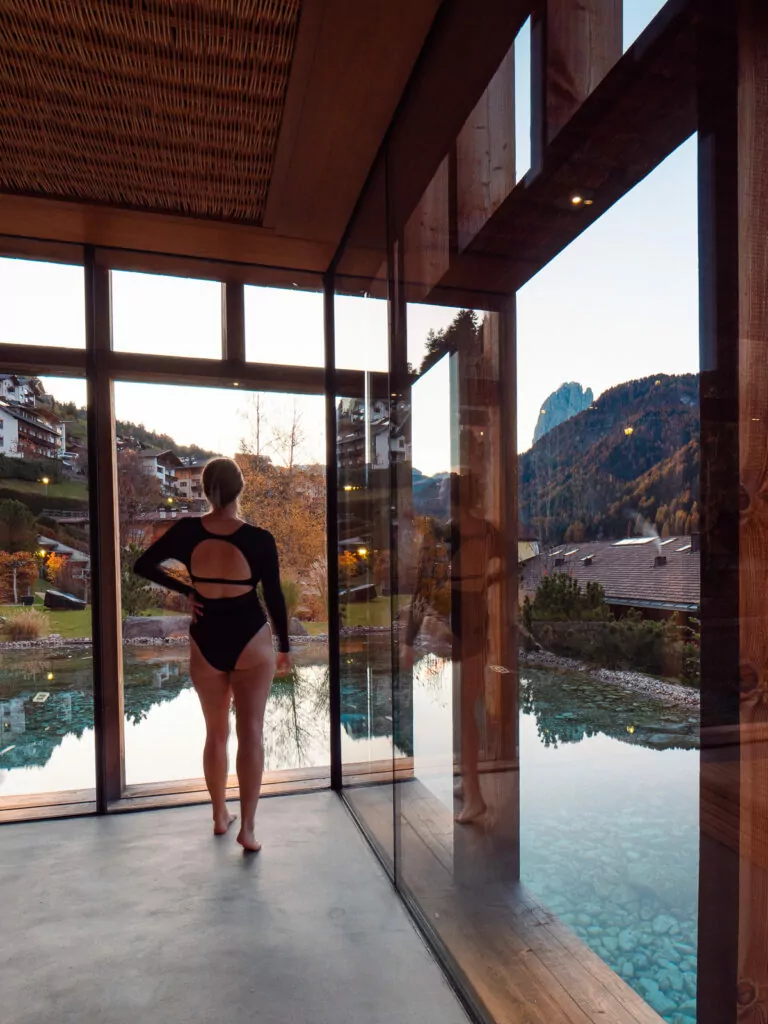
Travel responsibly
How lucky are we to have the opportunity to explore this pristine piece of the Italian Alps? Travel is such a privilege, and it’s our responsibility as tourists to minimise the negative impact and maximise the positive impact of our visit.
In the Dolomites, responsible travel practices include:
- Protecting the environment by staying on marked trails, minimising single-use plastic and disposing of rubbish correctly
- Supporting and respecting local communities by spending money at locally-owned accommodation, restaurants and souvenir shops, and learning basic greetings in the local languages (you might not always get it right, but they’ll appreciate you trying!)
- Avoiding adding to the pressure of over-tourism by visiting in the shoulder season
- Following the rules of these protected nature reserves, including not flying drones (drone rules are super strict and it’s very hard to get permits, more info here >>), not swimming where it’s forbidden, and not approaching or feeding wildlife
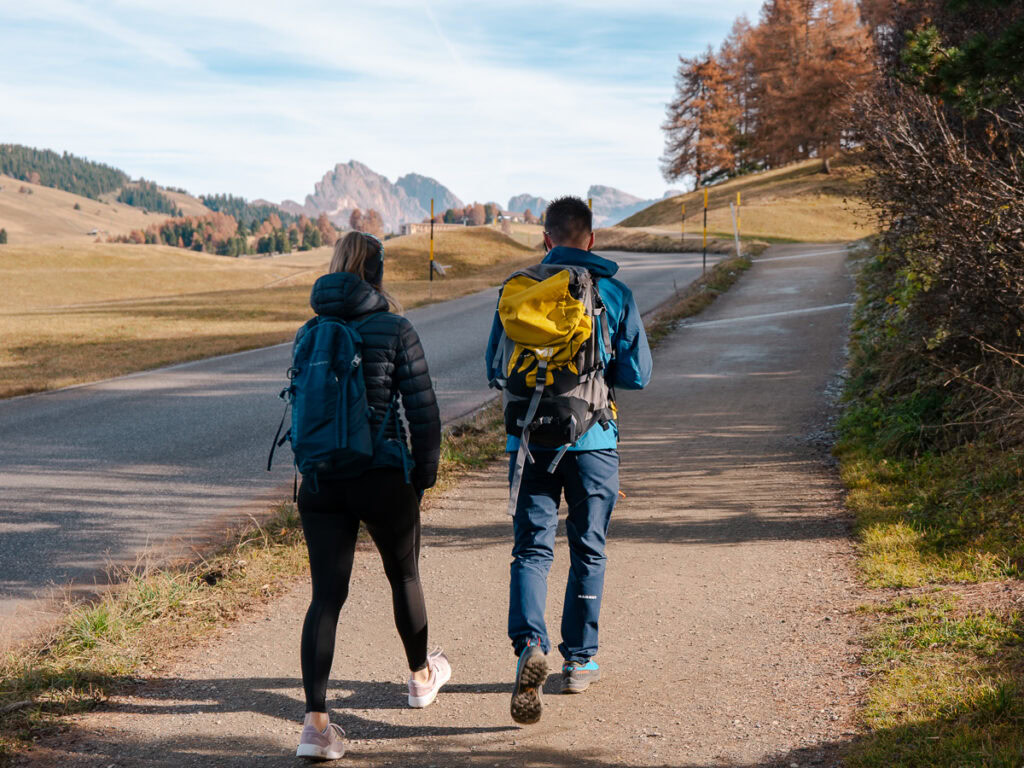
FAQs: Visiting the Dolomites without a car
Is it possible to travel the Dolomites without a car?
It’s absolutely possible to travel the Dolomites without a car, you can reach countless villages, hiking trailheads and scenic spots using cable cars and buses. Public transport links are much better in the summer months though, from mid-May to mid-October.
Are the Dolomites safe for solo female travellers?
The entire Dolomites region is known for being very safe overall, and I felt completely safe as a solo female traveller. The biggest danger would be outdoor risks like dehydration, hiking injuries or exposure to extreme weather.
Can you visit the Dolomites without a car in winter?
You certainly can visit the Dolomites in winter without a car. The Dolomiti Superski network gives you access to 1200kms of ski slopes across 12 ski areas including Val Gardena, Alta Badia and Cortina d’Ampezzo, connected to the resort towns by cable cars and chairlifts.
Can you hike in the Dolomites without a car?
You can if you visit at the right time of the year! Most hikes are best accessed with cable cars or public transport anyway, because carparks are limited and fill up early, or roads are closed entirely to protect the area.
Cable cars run from mid/late May until mid-October whisking you from towns or easy access bus stops up to alpine stations. Shuttle buses run for a similar period to deliver tourists right to the shores of Lago di Braies or the trailhead for hikes like Tre Cime di Lavaredo and Cadini Misurina.
If you’re visiting outside of cable car season, you could always start your hike from town too!
Do you need travel insurance for the Dolomites?
Travel insurance isn’t mandatory for the Dolomites or anywhere in Italy (unless you’re on a visa that requires it), but it’s highly, highly recommended for the Dolomites to cover things like emergency evacuation if a hike goes wrong. I use Cover-More Travel Insurance for all my trips.
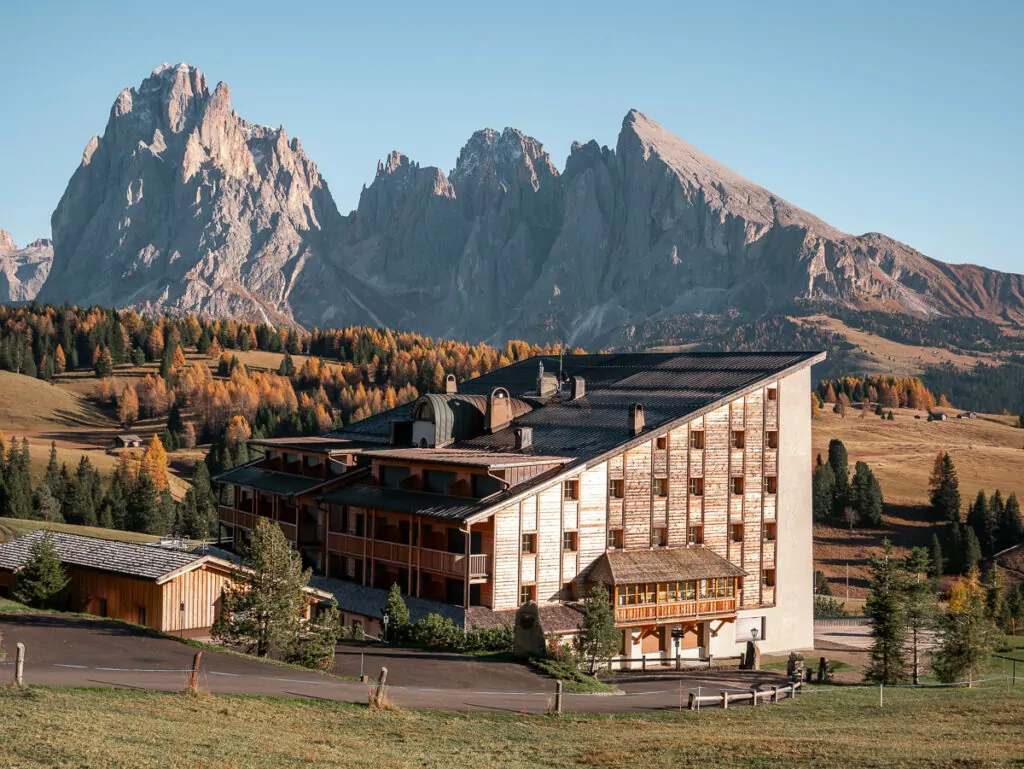
How much does public transportation cost in the Dolomites?
If you have a Südtirol Guest Pass (which is included with a South Tyrol hotel booking), you can catch buses, trains and public cable cars on the Südtirol network for freeeee. Too easy! This covers most of the places I’ve mentioned in this blog post, including the bus from Dobbiaco to Cortina d’Ampezzo (which is just out of South Tyrol).
Some seasonal shuttle buses aren’t included, like the Dobbiaco-Tre Cime di Lavaredo shuttle or the Dobbiaco-Lago di Braies shuttle during the mandatory reservation season, their prices haven’t been released for summer 2025 but last year they were around €10-15 return.
Most cable cars also aren’t included as these are privately-run rather than part of the public transport network, expect to pay €24-40 round trip for most of them. If you’re planning on taking lots of cable cars/lifts in one area there might be a pass that would save you money, like the Gardena Card.
What are the pros and cons of travelling the Dolomites without a car?
Pros: Much much much cheaper, enjoy the views rather than keeping your eyes on the road, no toll road charges or parking costs, no need to worry about driving conditions.
Cons: Less freedom and flexibility, public transport usually finishes before sunset in summer, limited to cable car season to easily access the upper plateaus.
What is the best base in the Dolomites if you don’t have a car?
It all comes down to perfect preference. For leisure hikers or casual sightseers, I think Ortisei is unbeatable! Effortless access to Alpe di Siusi, Seceda and Resciesa, buses to other Val Gardena towns or Castelrotto, beautiful spa hotels and great food.
If you’re looking for more adventurous excursions then Cortina d’Ampezzo or Dobbiaco might suit you better, with Tre Cime di Lavaredo, Cadini di Misurina, Lago di Sorapis and other more challenging trails on your doorstep.
Are the Dolomites expensive to visit?
“Expensive” is subjective, but a simple answer is that they’re more expensive than most other regions of Italy, yet cheaper than Switzerland.
Another blog post that hit the 10k mark! If you’re still reading then I’m seriously impressed, thank you for sticking with me and I hope this car-free Dolomites travel guide was helpful.
MORE ITALY BLOG POSTS:
- The ultimate Italy bucket list
- The ultimate itinerary for Northern Italy & Switzerland
- Things to know before going to the Dolomites
- ADLER DOLOMITI: The best value wellness hotel in the Dolomites
- How to spend 2 days in Milan
- How to spend 24 hours in Florence
- The ultimate guide to travelling Puglia without a car
MORE CAR-FREE EUROPE ITINERARIES:
- The *ultimate* three month Europe itinerary without flying or driving
- How to see the Europe Christmas markets by train
- How to spend 10 days in Switzerland by train
- 3 week Scandinavia itinerary by train
- How to spend 4 days in Norway
- How to spend two weeks in Poland without a car
- How to spend two weeks in Albania without a car
MY GO-TO TRAVEL PLANNING RESOURCES
Flights ✈️ I use Skyscanner to find the best flights for my trip and then I’ll always book direct with the airline to protect myself from having to deal with dodgy third parties if anything goes wrong.
Trains 🚂 If I’m travelling through Europe, I try to travel by train wherever possible! For an extended trip (2+ weeks) I’ll calculate if a Eurail Pass is worth it, or I’ll book point-to-point tickets through RailEurope or the local train operator.
Accommodation 🛎️ I book almost all of my accommodation through booking.com, they have a user-friendly website + app and many of their options are free cancellation, easily cancelled with a simple click of a button.
Activities 🗽I use GetYourGuide, Klook and Viator to look for activities in the places I visit, or I just Google ‘things to do in [city]’! P.S. If you book anything on Klook you can use the promocode FINDINGALEXXKLOOK to get 10% off
Travel cards 💳 I’m a Wise gal through and through, they’ve been my chosen travel card for more than five years now. You can easily top up your card from your bank account or through Apple Pay, convert your money to local currency, and spend money with minimal fees and the best exchange rates around.
Travel insurance 🩺 I use Cover-More NZ travel insurance for my own trips, I have a comprehensive policy and I’ve only had good experiences with them. Cover-More also has an Australian company, but if you’re from elsewhere then two popular insurance options for global travellers are SafetyWing (cheaper policy, lower coverage) and World Nomads (more expensive but significantly better coverage).
Luggage 💼 I travel with Samsonite Cosmolite suitcases, one 75cm check in bag and a 55cm carry on bag, and I absolutely adore them and will never travel with anything else! They are SUPER lightweight (2.8kg and 1.9kg respectively) so I have much more space for my actual stuff.
Camera gear 📸 I use a iPhone 15 Pro Max for phone photos/videos, and my camera kit includes a Lumix S9 (incredible lightweight full-frame camera, a game changer for travel creators!) with a 20-60mm lens, a Lumix G9 with an 8-18mm and 12-60mm lens, a DJI Mini 3 Pro drone and a GoPro Hero 10. I do all my writing and editing on my ASUS Zenbook 14, it’s lightweight but powerful enough for photo editing and intense blogging sessions.
